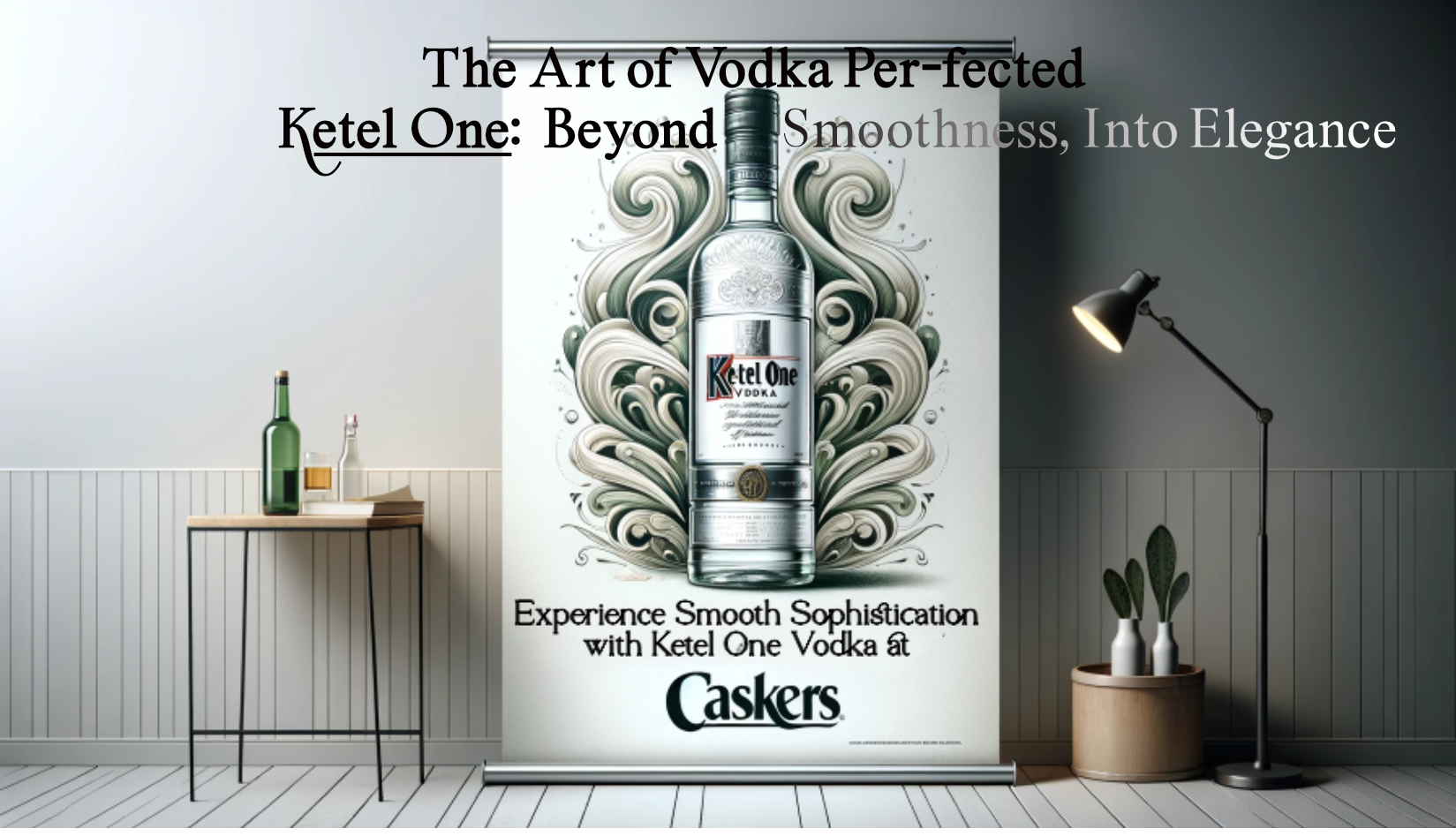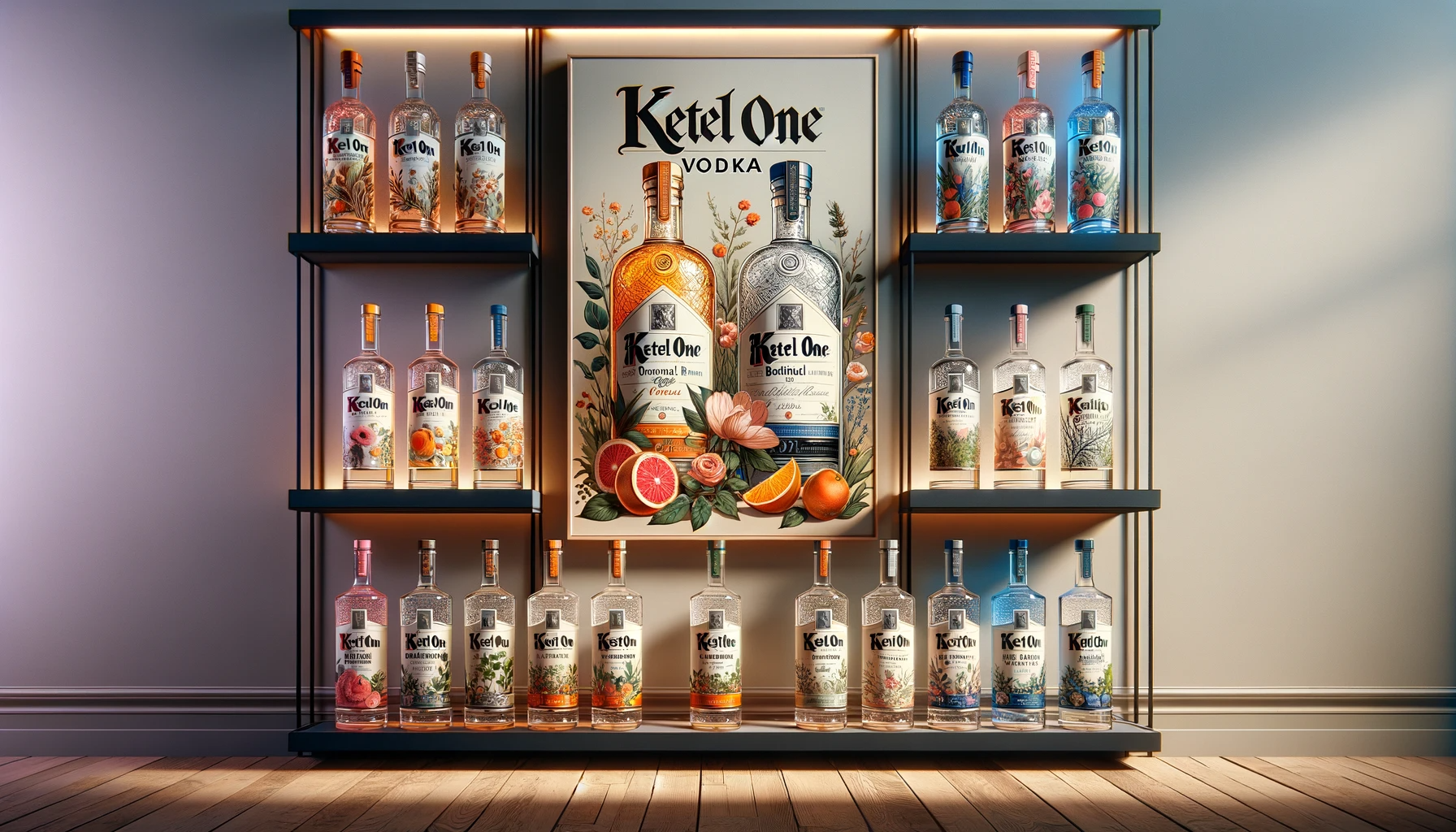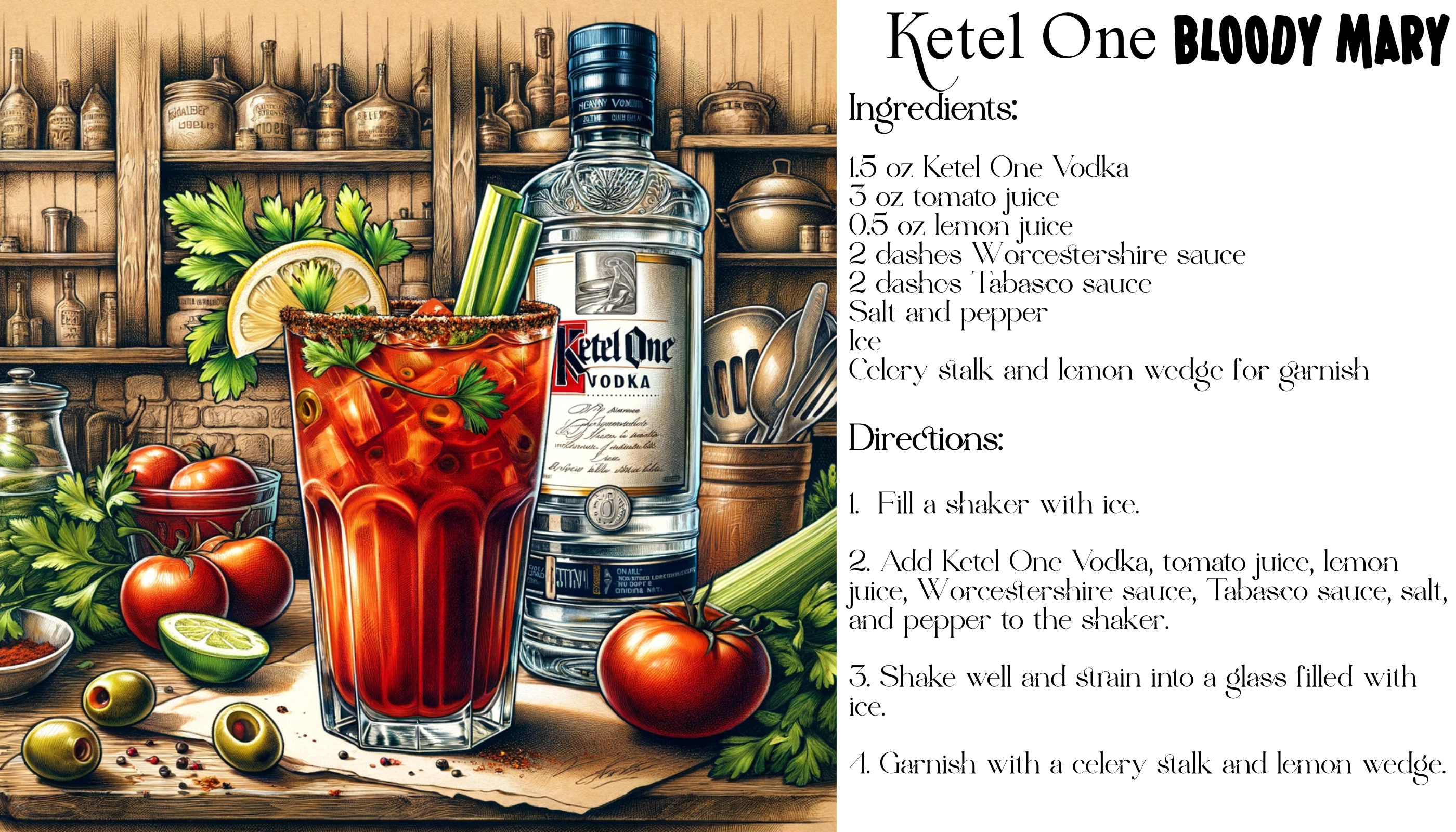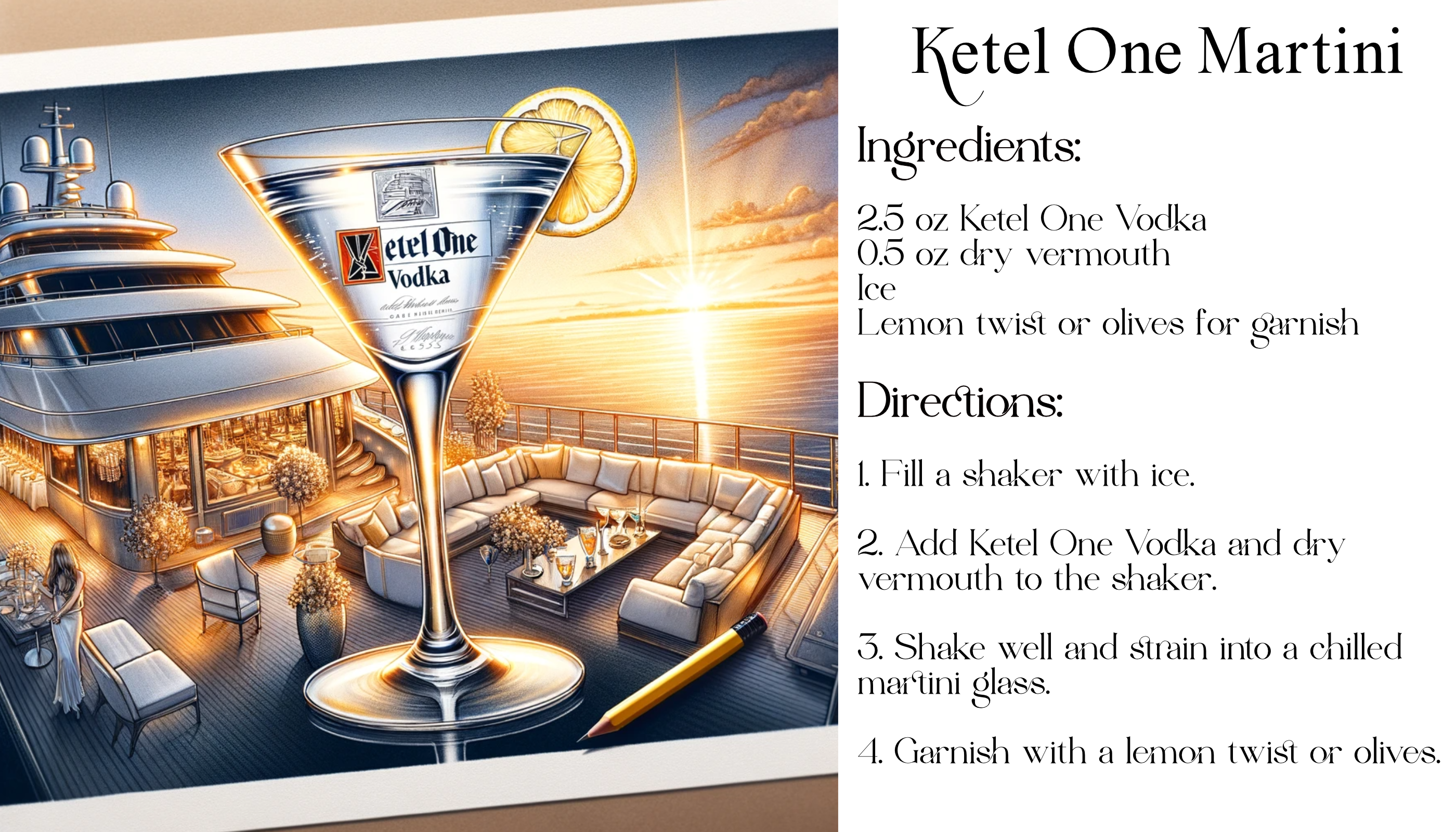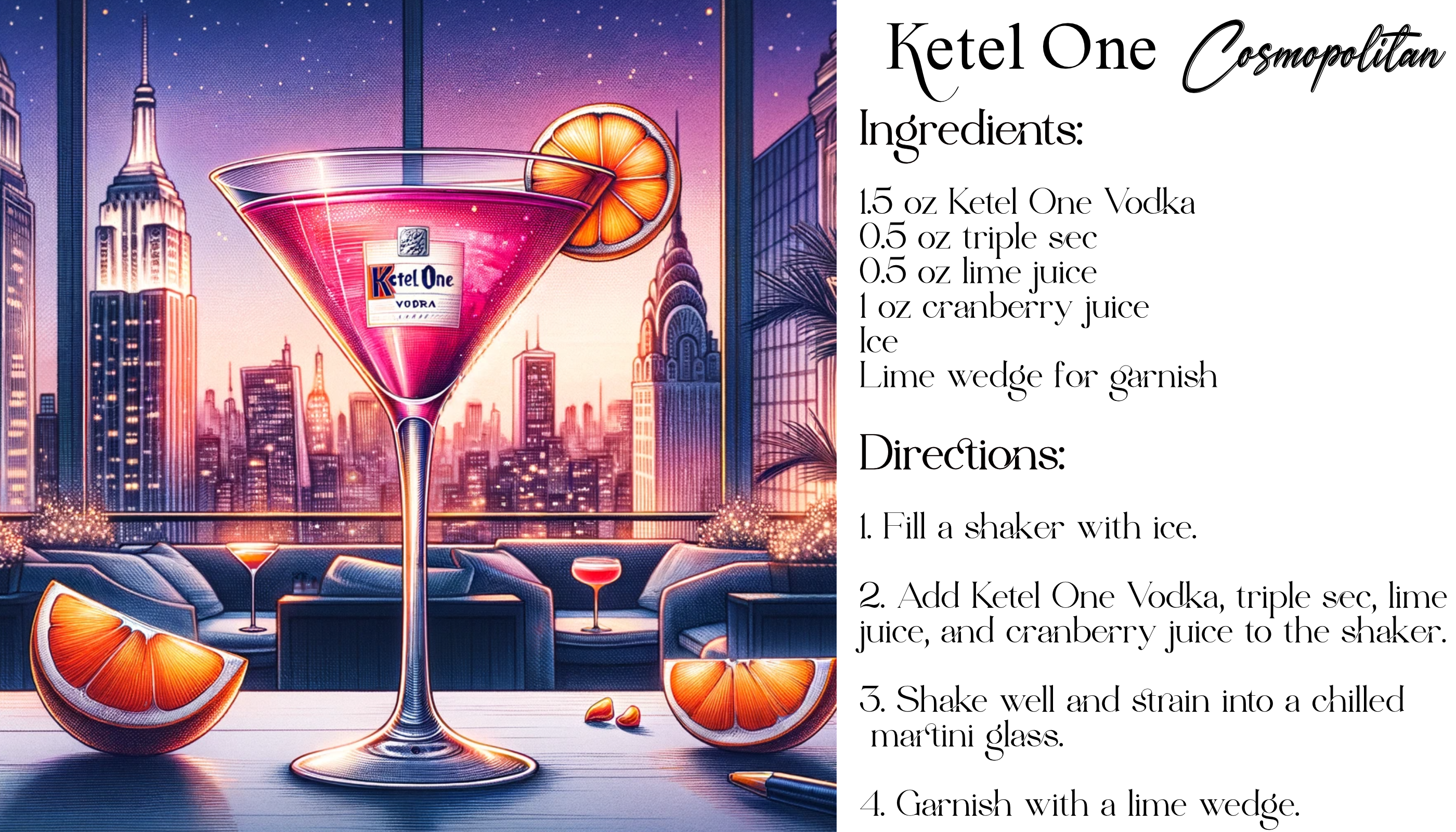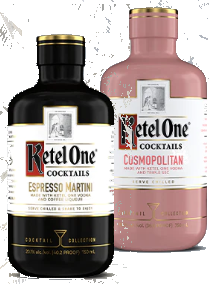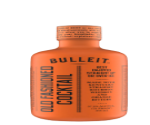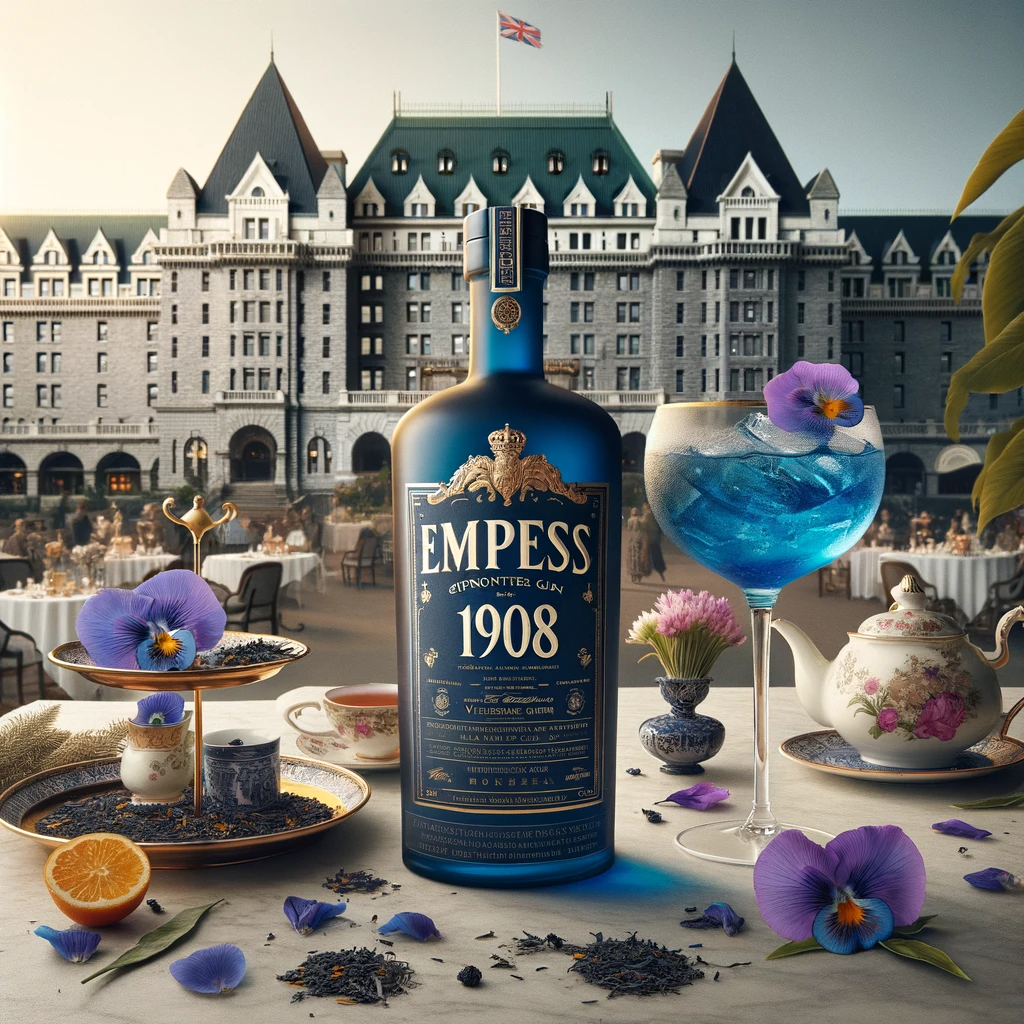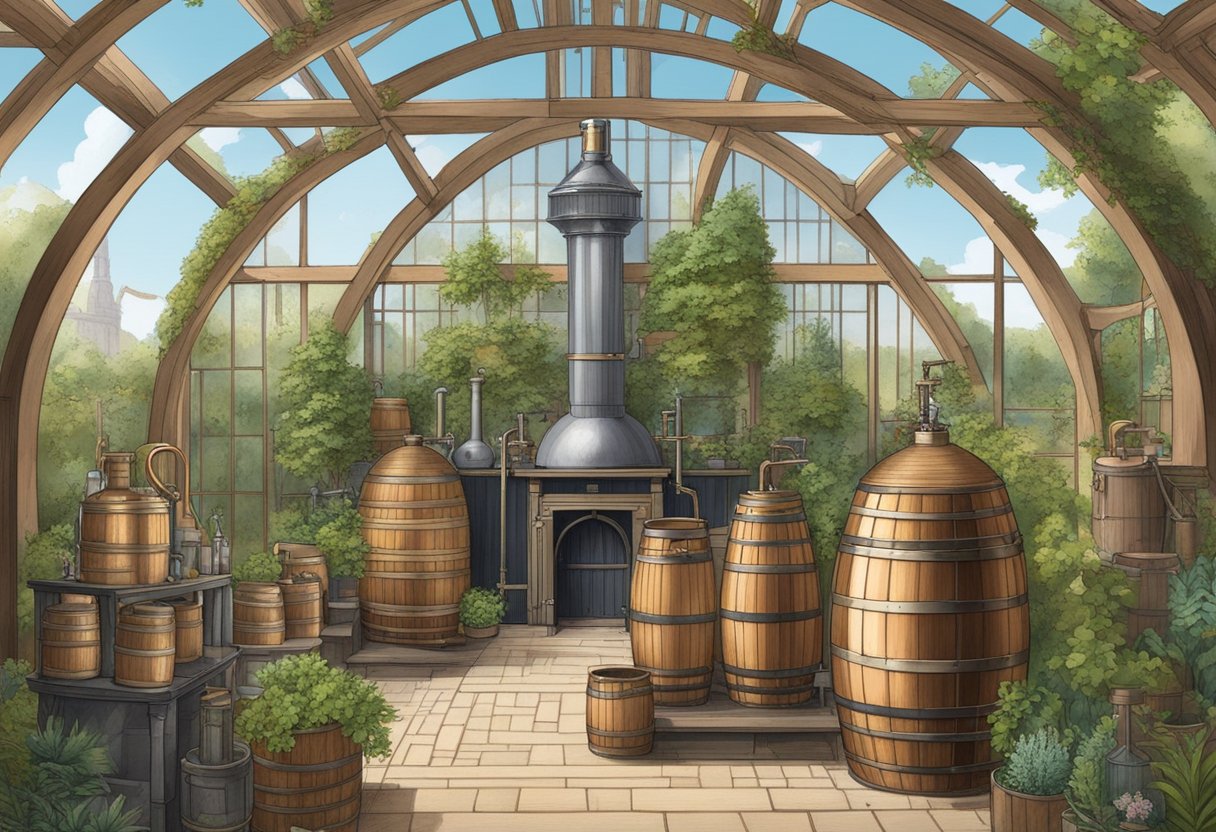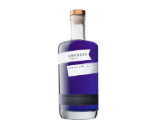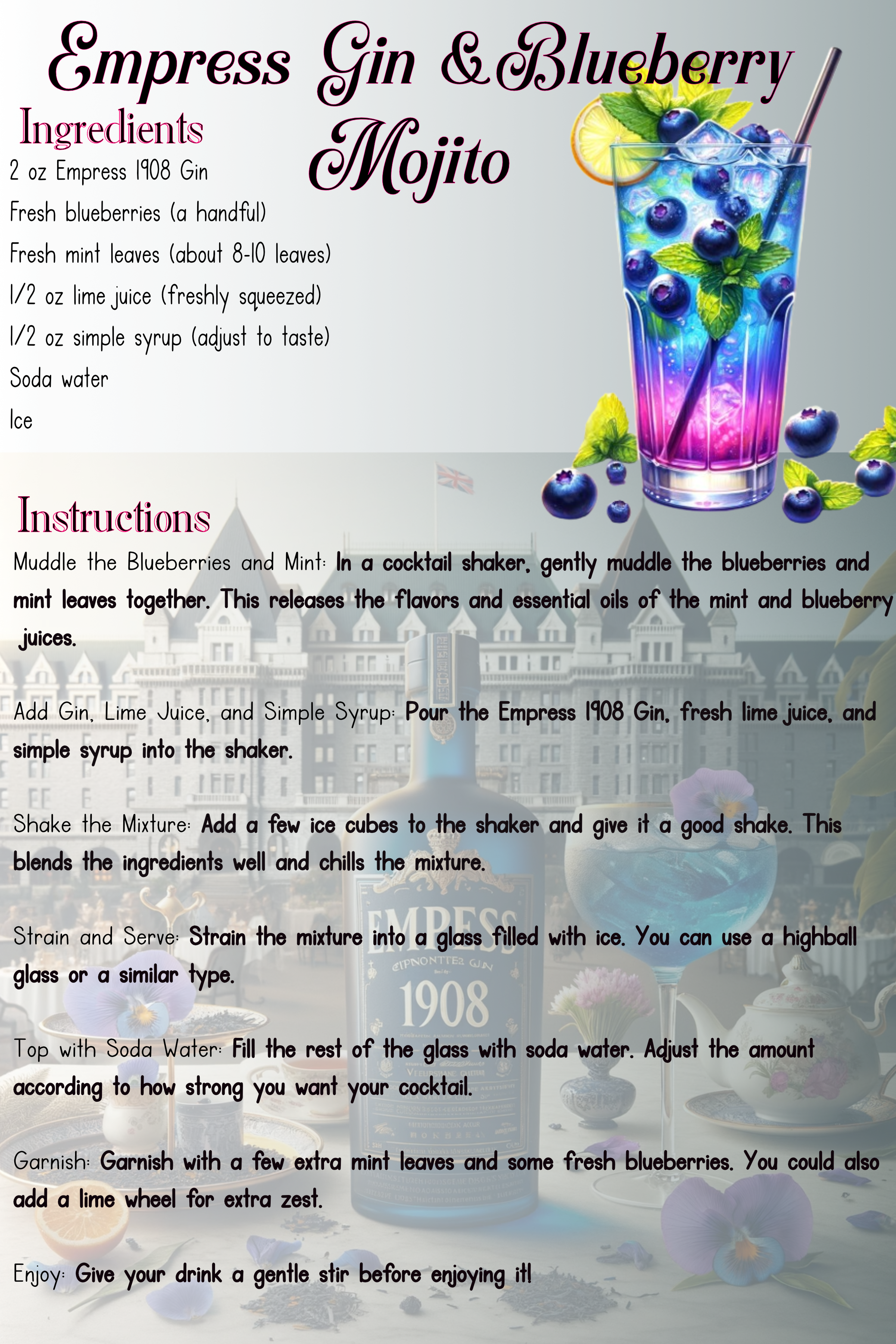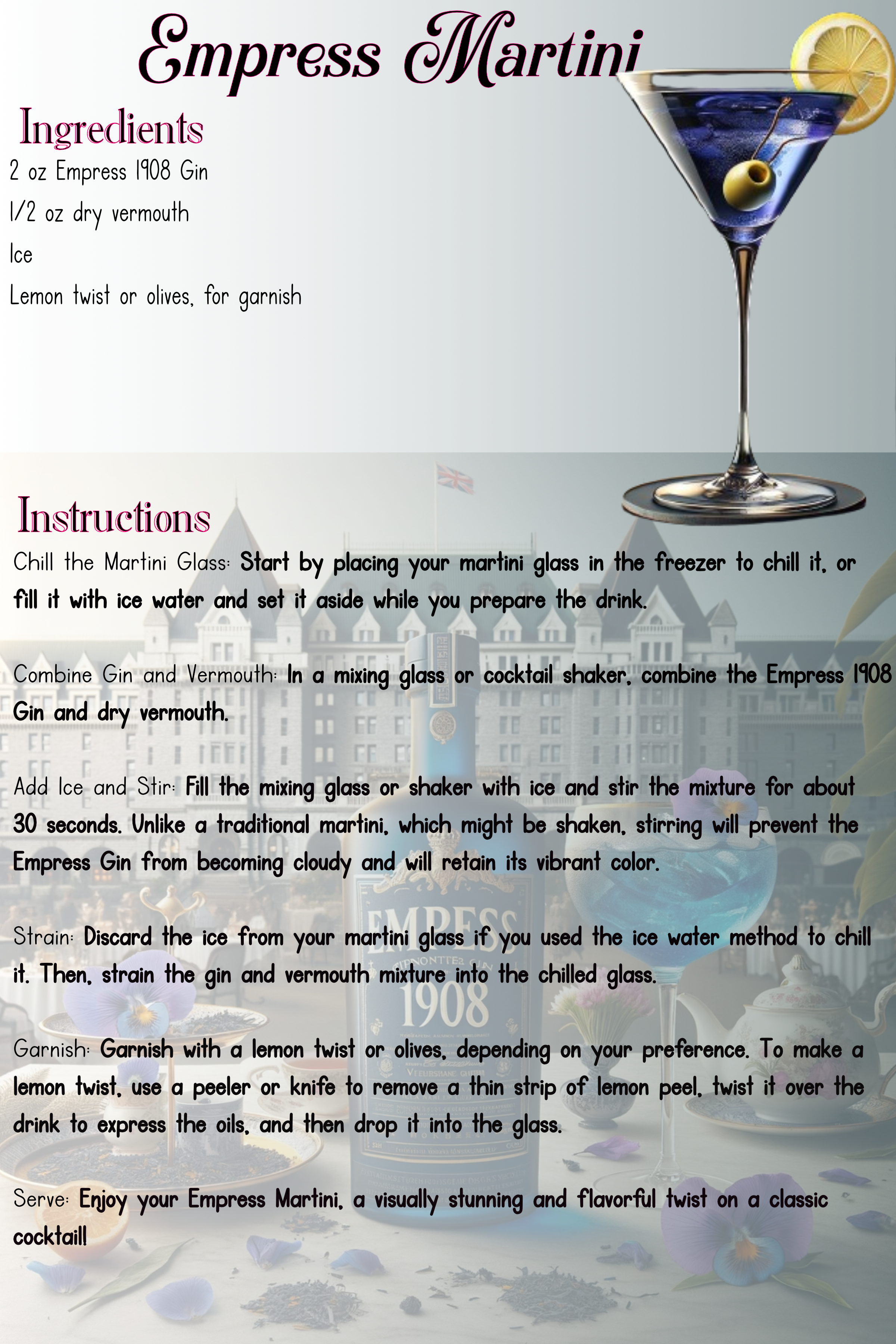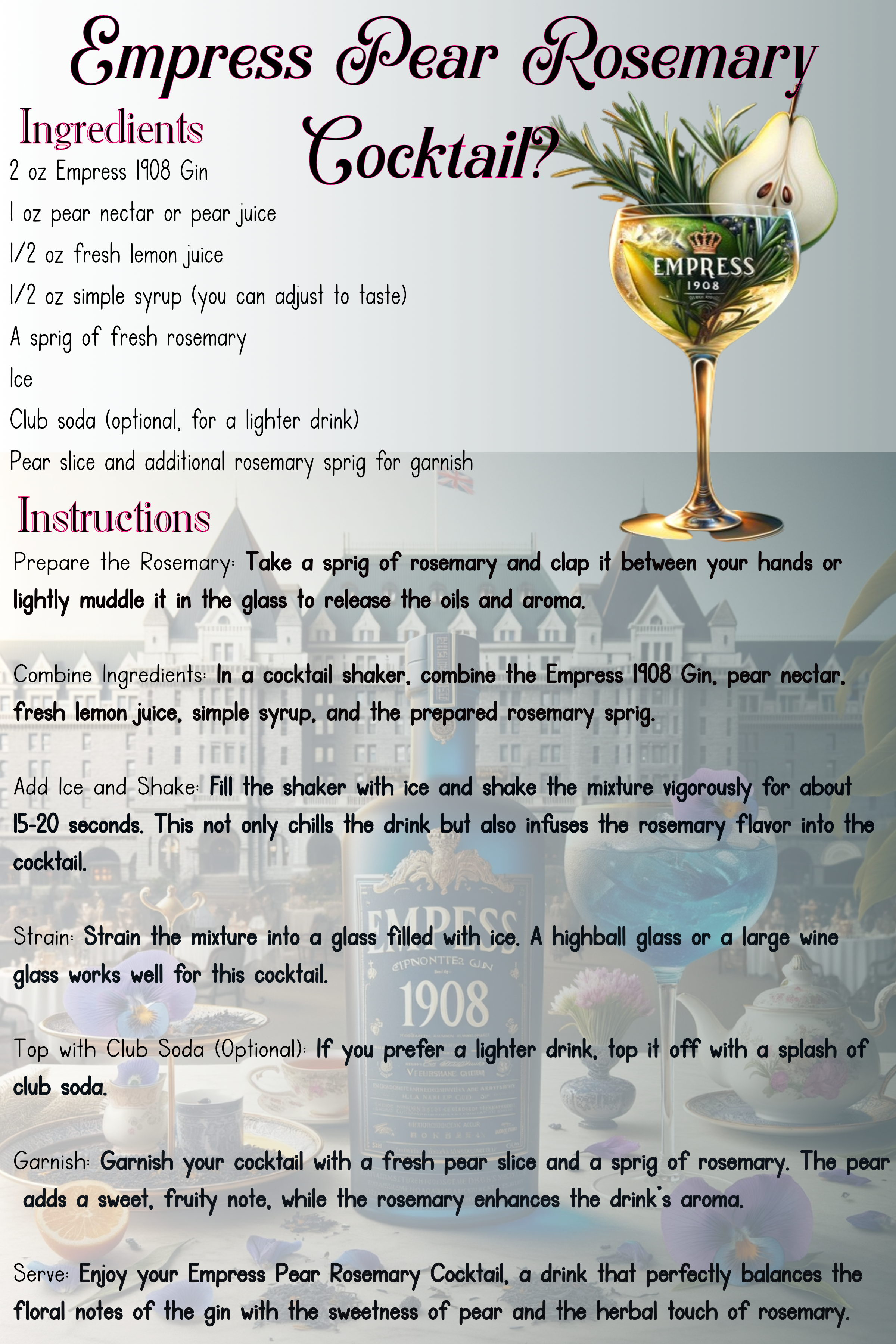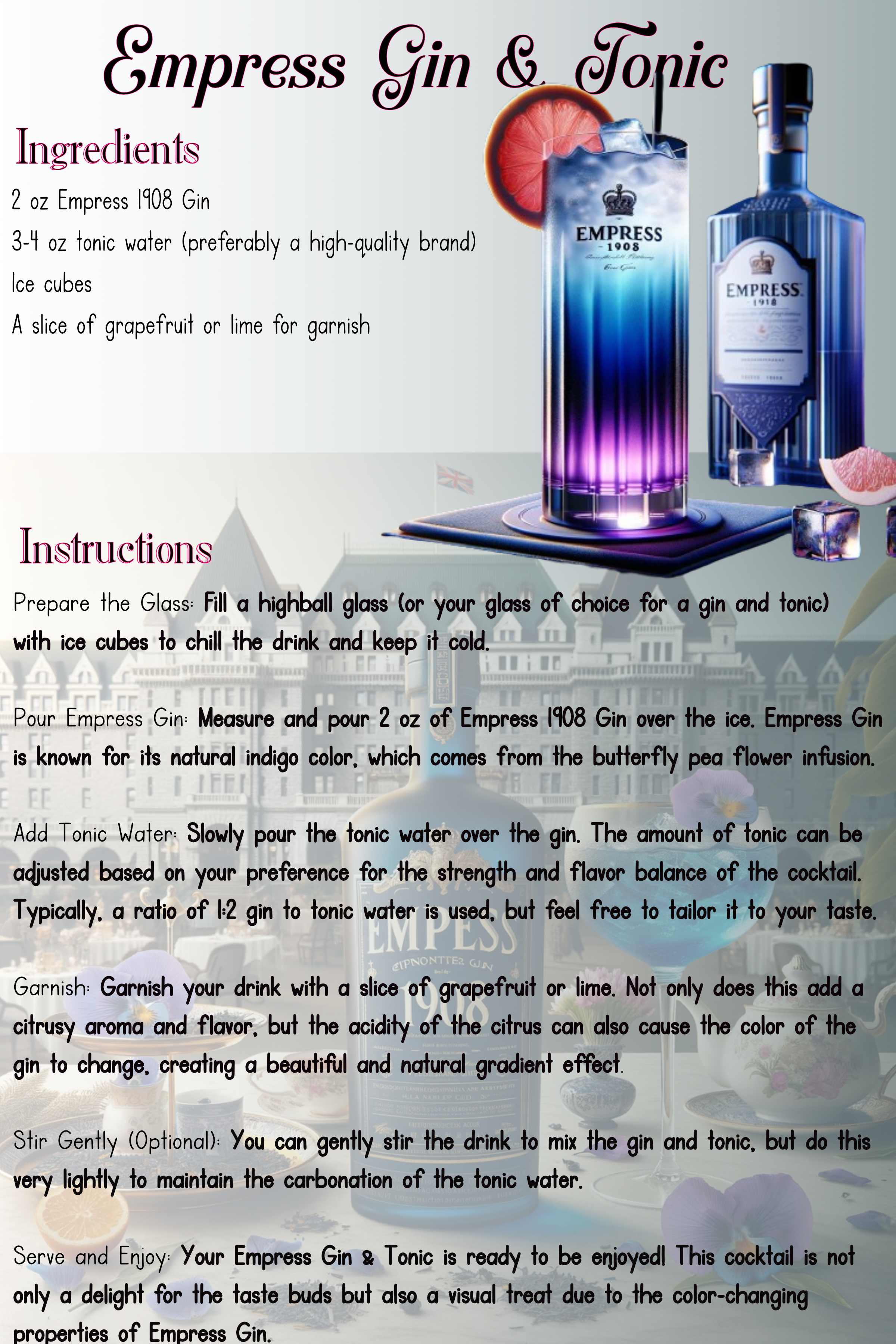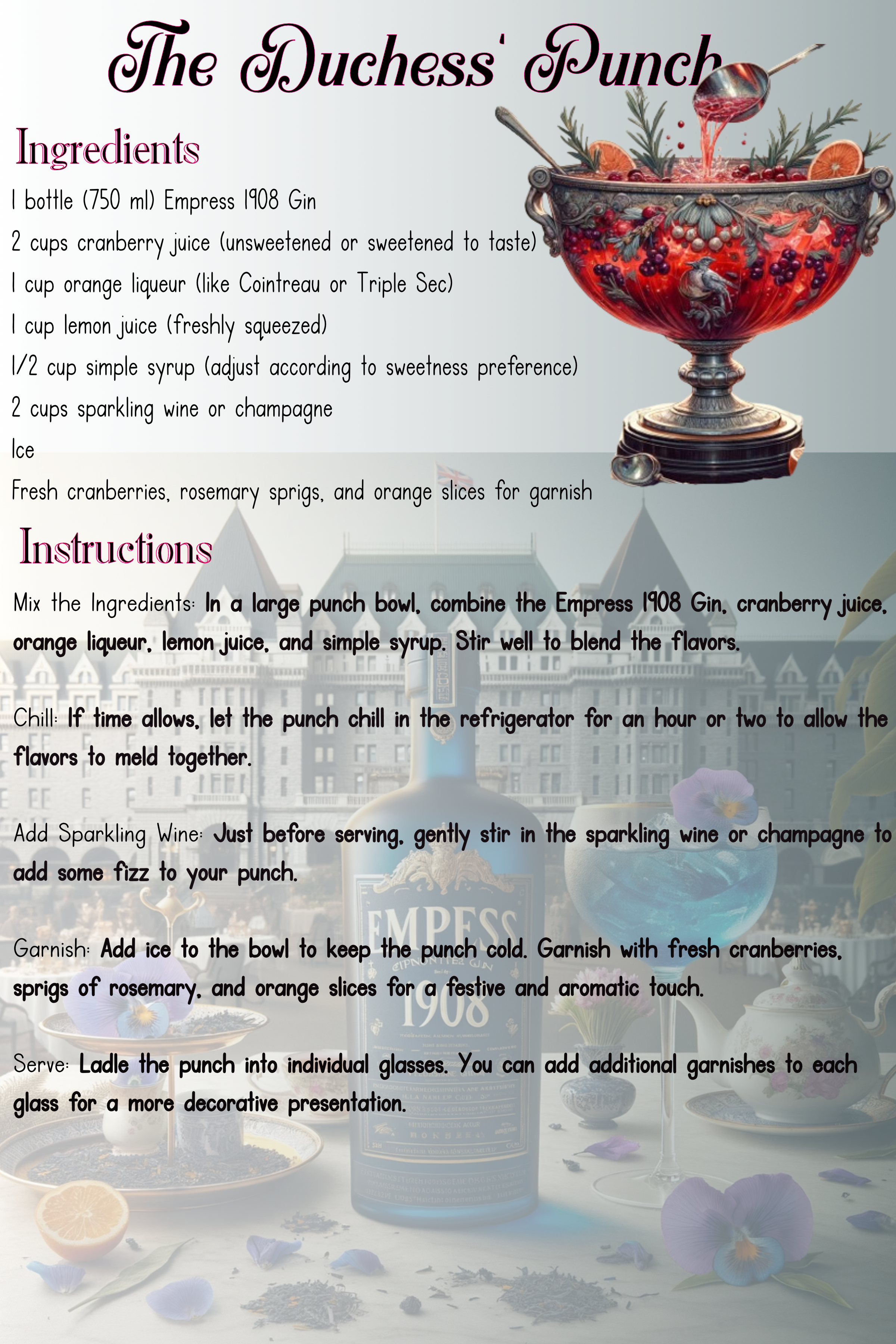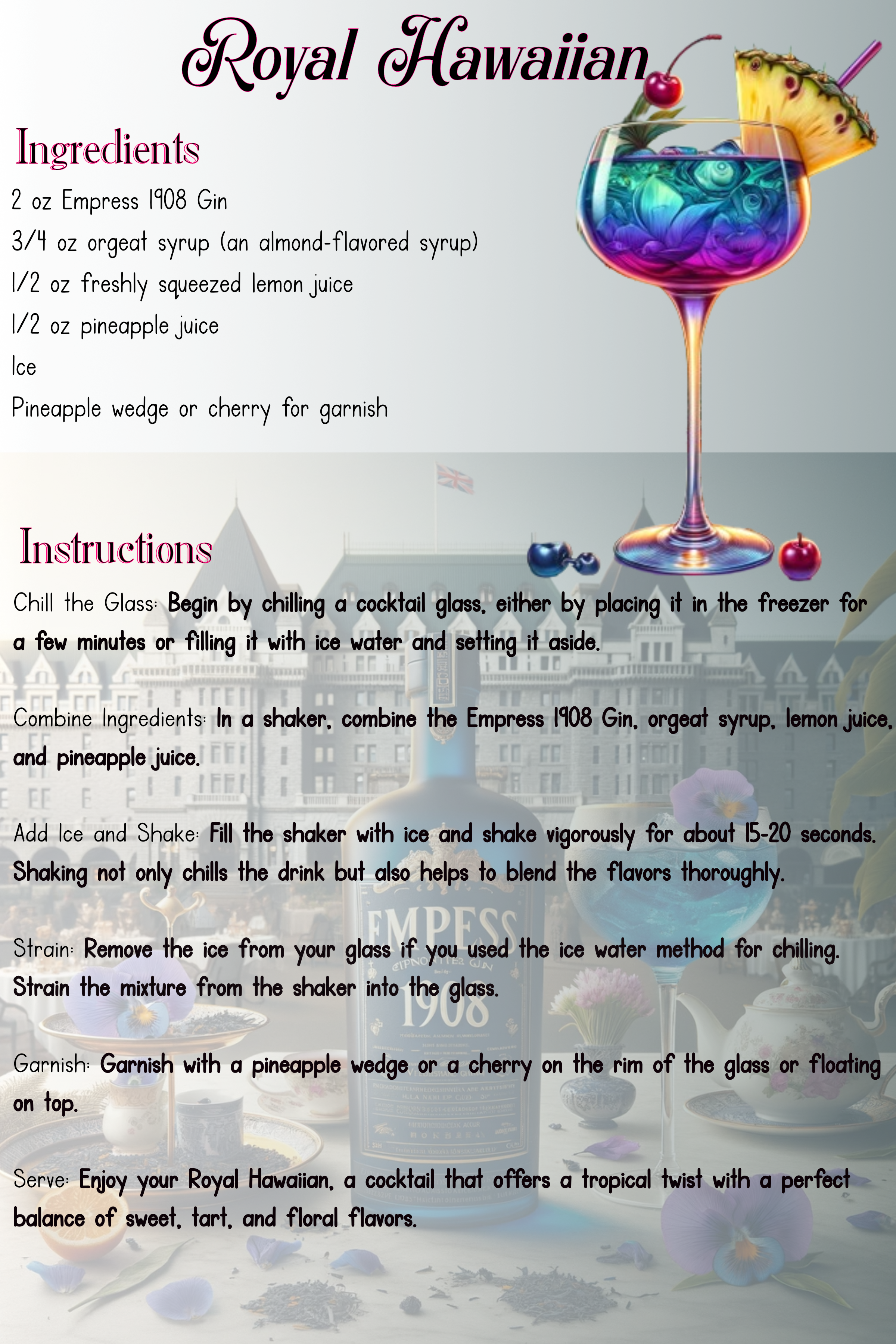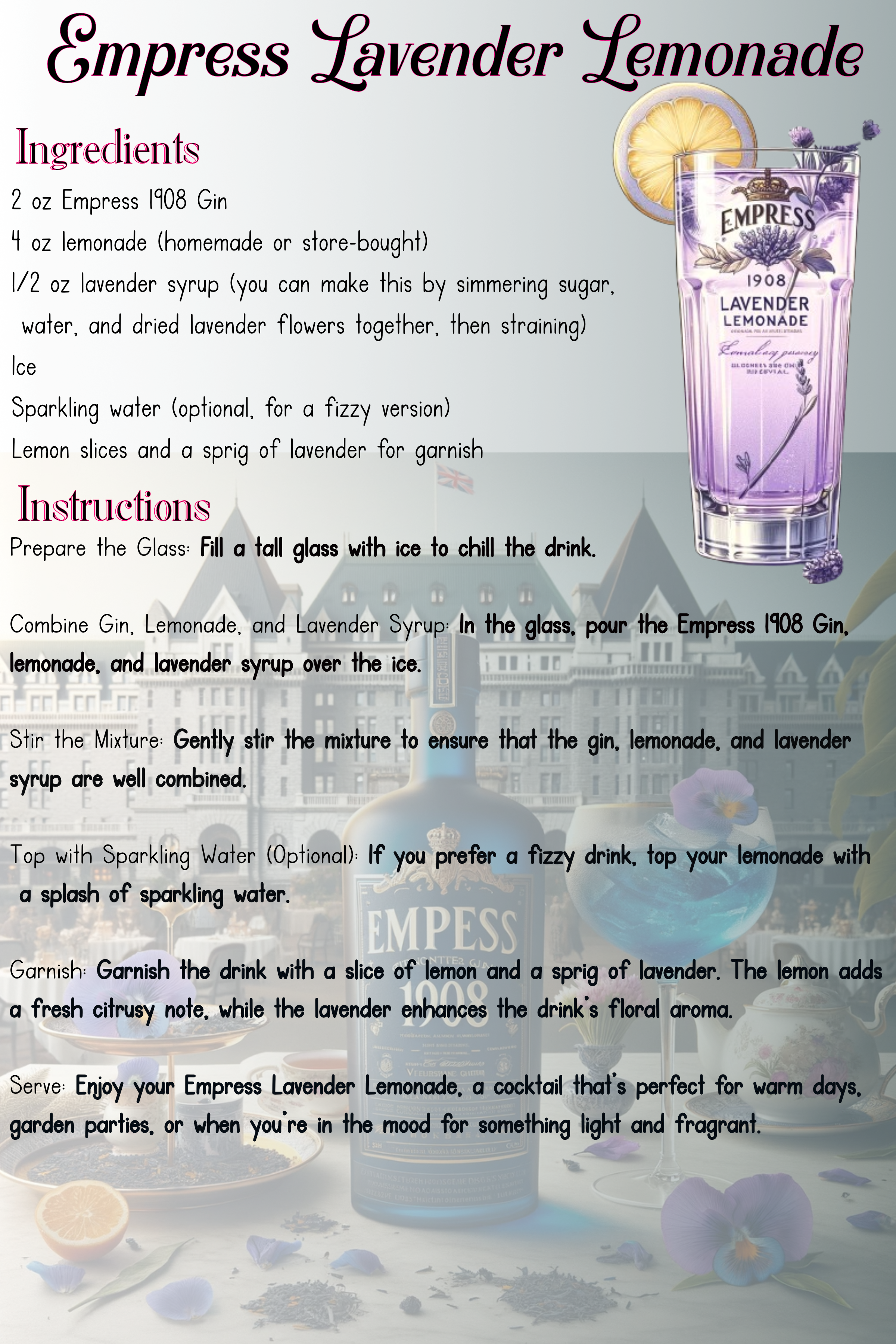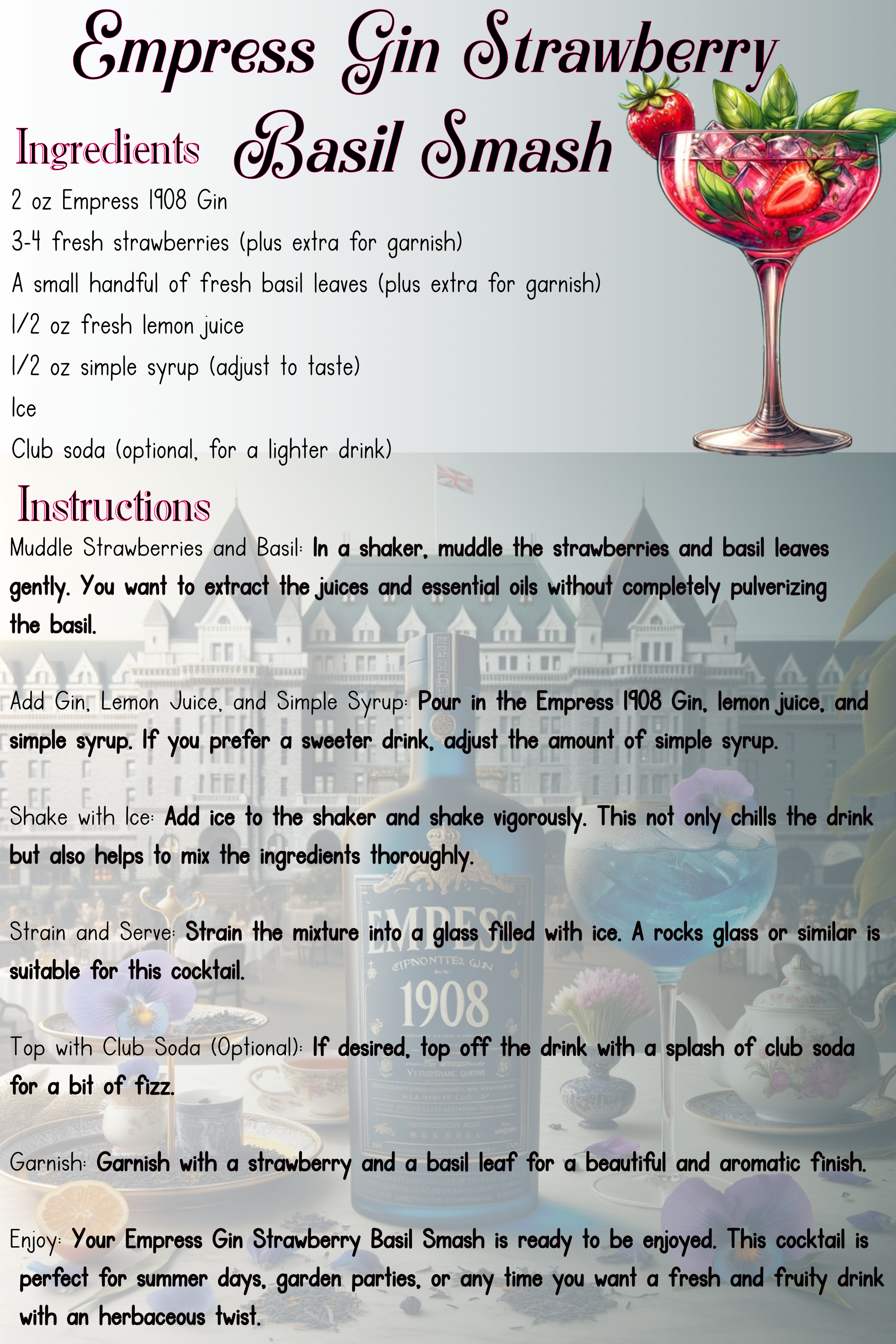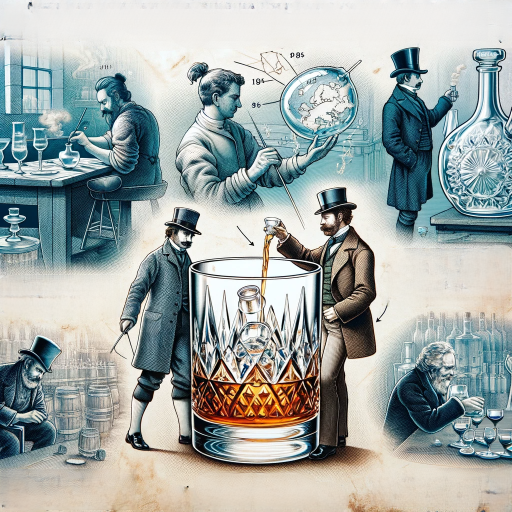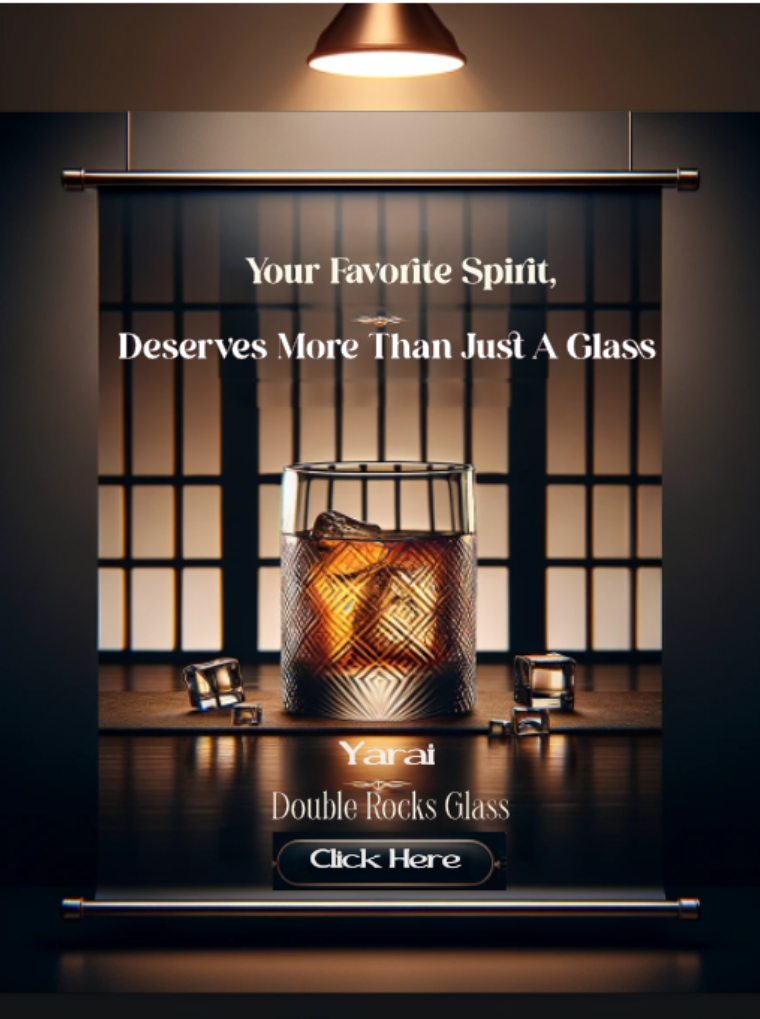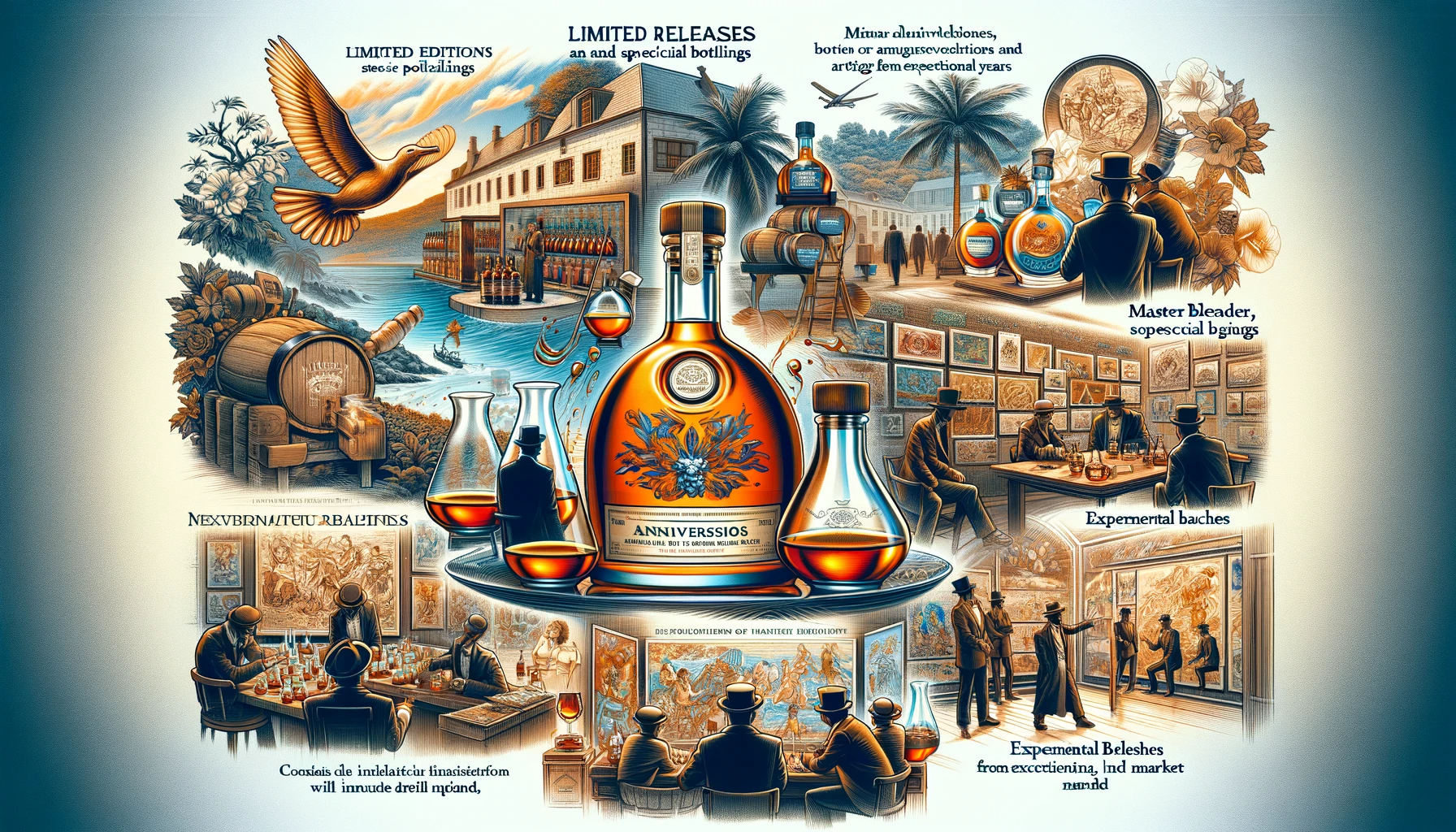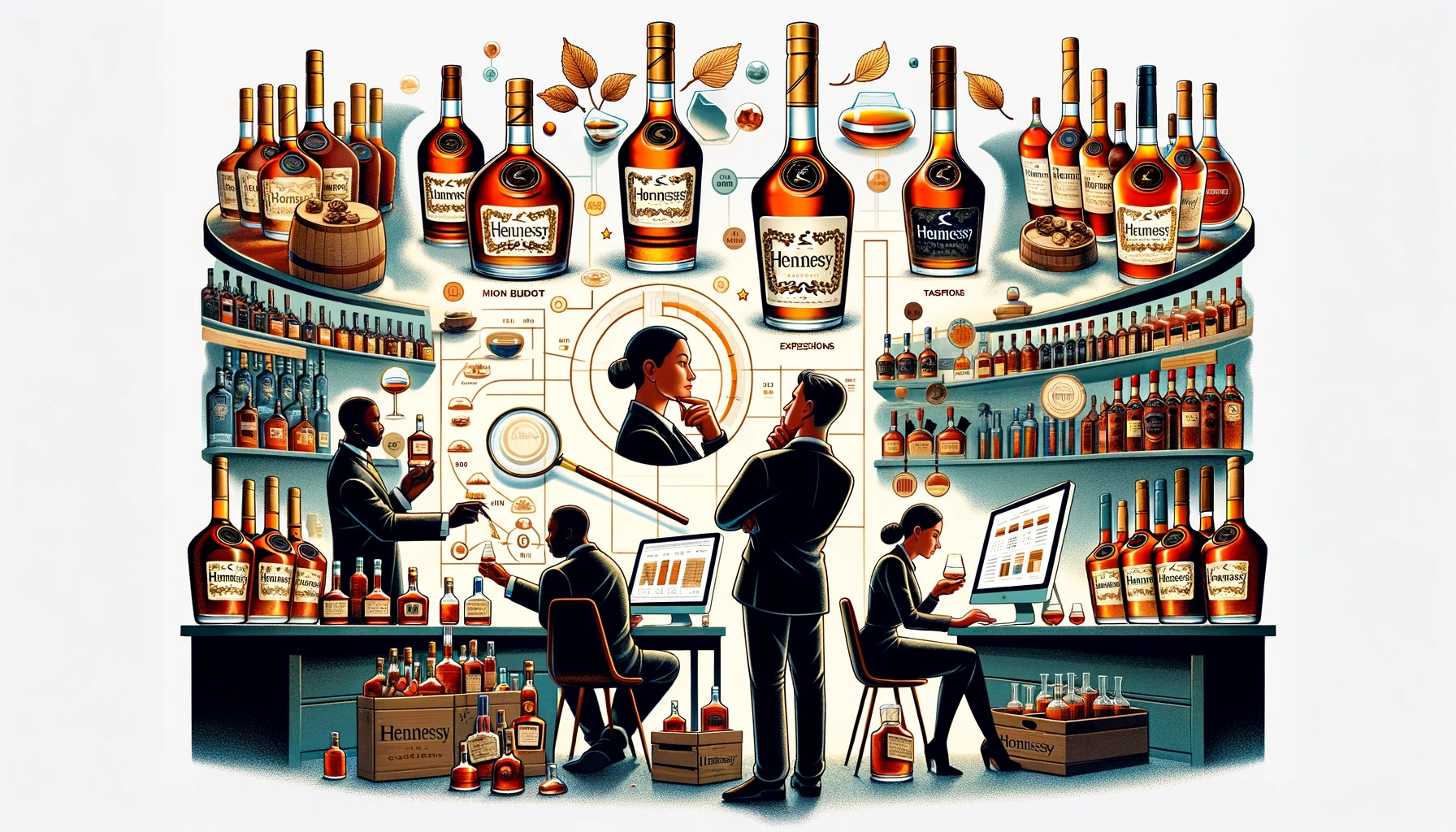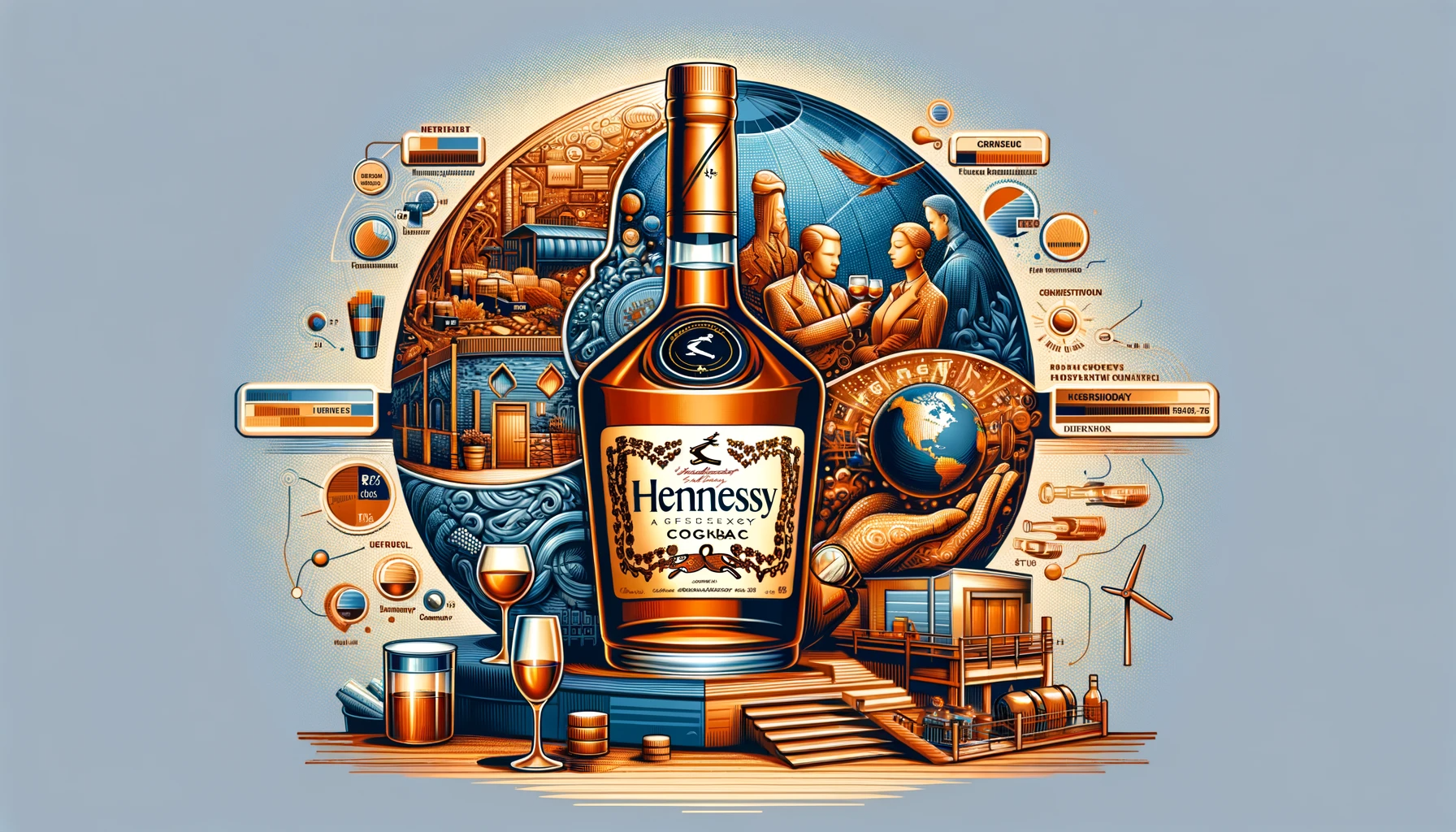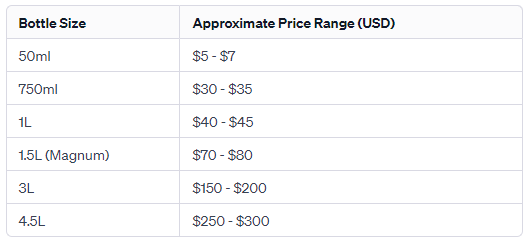jesuspreciado789
Maker’s Mark Cask Strength: Bold and Intense
Maker’s Mark Cask Strength is a high-proof bourbon. A favorite amongst many whiskey lovers because of its complex flavor profile and smooth finish. This wheated bourbon is non-chill filtered and aged in virgin American white oak for at least six years.
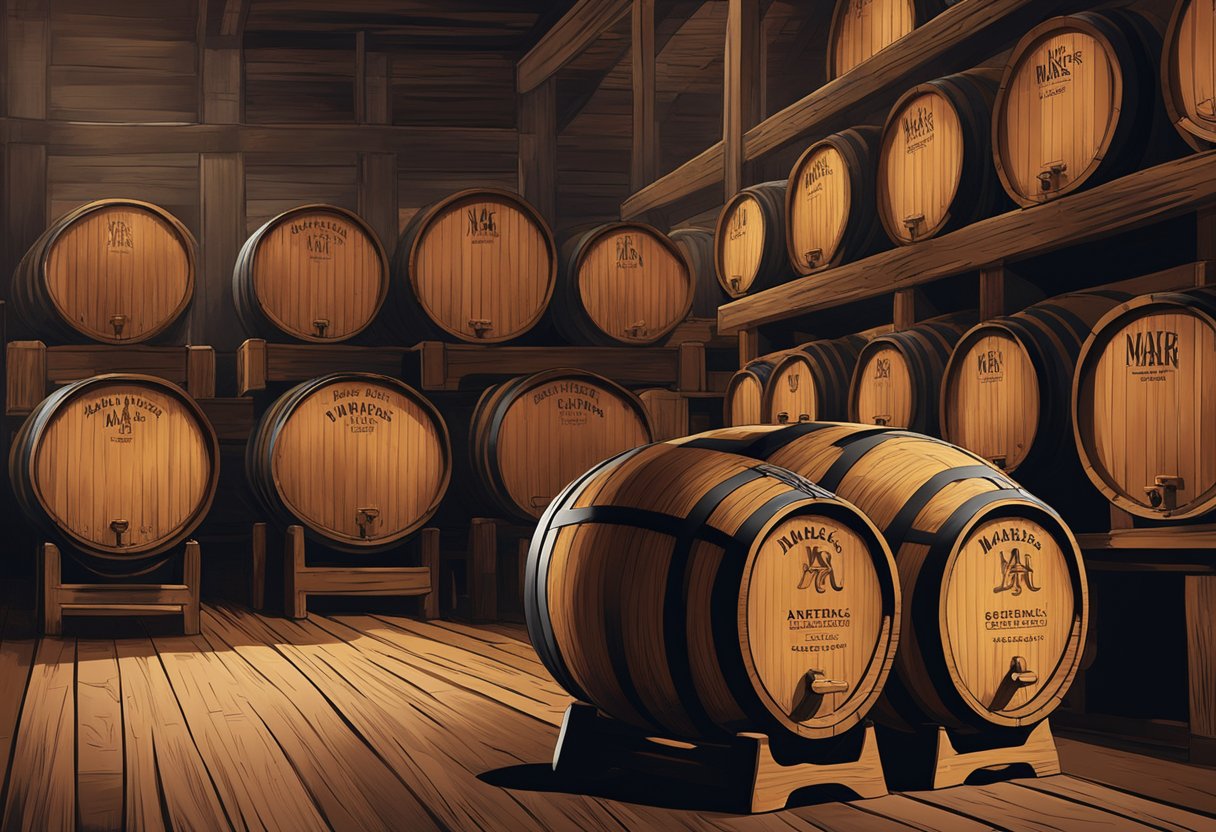
Exploring the Richness of Non-Chill Filtered Whisky
Whether you are for non-chilled filtered spirits or against non-chilled filter spirits. Normally whisky is chilled filtered before bottling. This process of letting the whisky cool to a low temperature and then the whisky is passed through a fine filter in order to remove certain fatty acids and proteins that could cause the whisky to become cloudy when cold or when ice or water is added.
Maker’s Mark Cask Strength skips this part when crafting these expressions because the argument is that by chill filtering the whisky, removing the certain fatty acids and proteins removes some of the aromas and flavors of the whisky.
You cannot deny that this non-chill filtered whisky offers a more complex and robust profile of flavor. However, the whisky becomes cloudy under cold conditions. Although, it does not affect the quality of the whisky, it does impact the tasting experience if you love the color of bourbon when held to the light. Because after all, the appearance is an important part of the tasting experience.
The Bold and Balanced World of Maker’s Mark Cask Strength Bourbon
Maker’s Mark Cask Strength is a bourbon that packs a punch. Depending on the barrel, the alcohol content can range from 108 to 114 proof. Because it is bottled directly from the barrel without being diluted to a lower proof.
Regardless of its high alcohol content, Maker’s Mark Cask Strength manages to maintain a balance of sweet and spicy flavors that make it a delight to sip on. You get the vanilla and caramel notes. These are complemented by hints of spice, Then, you get woody and sour notes that provide a nice balance to the sweetness.
If you are looking for a bourbon that is versatile enough to be enjoyed neat or in a cocktail, Maker’s Mark Cask Strength is an excellent choice. If you want to explore the world of barrel-proof whiskys and experience the full spectrum of flavors that can be found in a high-proof bourbon. This just might be your go-to drink.
History of Maker’s Mark
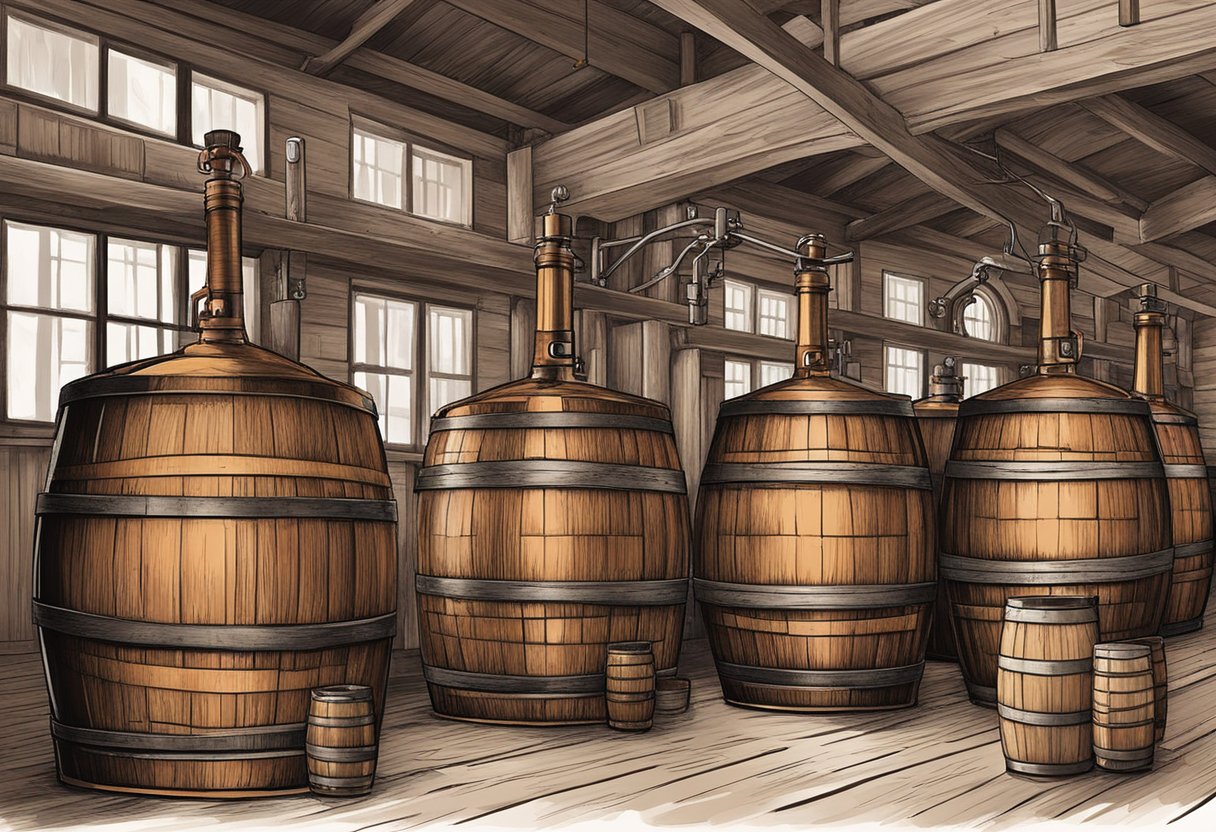
Origins and Founders
Maker’s Mark is a premium bourbon whisky brand that was founded in 1953 by Bill Samuels Sr. and his wife Margie Samuels. The brand was named after the family’s Scottish heritage, where the term “maker’s mark” refers to the signature emblem used to identify the maker of a piece of silverware.
Bill Samuels Sr. was a sixth-generation distiller who wanted to create a bourbon that was smooth and easy to drink. He experimented with different recipes and techniques until he found the perfect combination of grains, yeast, and water. Margie Samuels was responsible for the brand’s iconic packaging, which features a distinctive red wax seal.
Evolution of the Brand
Maker’s Mark quickly gained a reputation as a high-quality bourbon and became popular among bourbonists. It was the 1960s, the brand introduced its signature square bottle, which was designed to stand out on store shelves.
Maker’s Mark expanded its product line to include a 101-proof version of its bourbon, as well as a limited-edition “Black Label” bourbon in the 1980’s. In 2010, the brand was acquired by Beam Inc., which was later acquired by Suntory Holdings in 2014.
Today, Maker’s Mark is known for its smooth, sweet flavor and distinctive packaging. The brand’s signature red wax seal is still applied by hand to each bottle.
Distilling Process
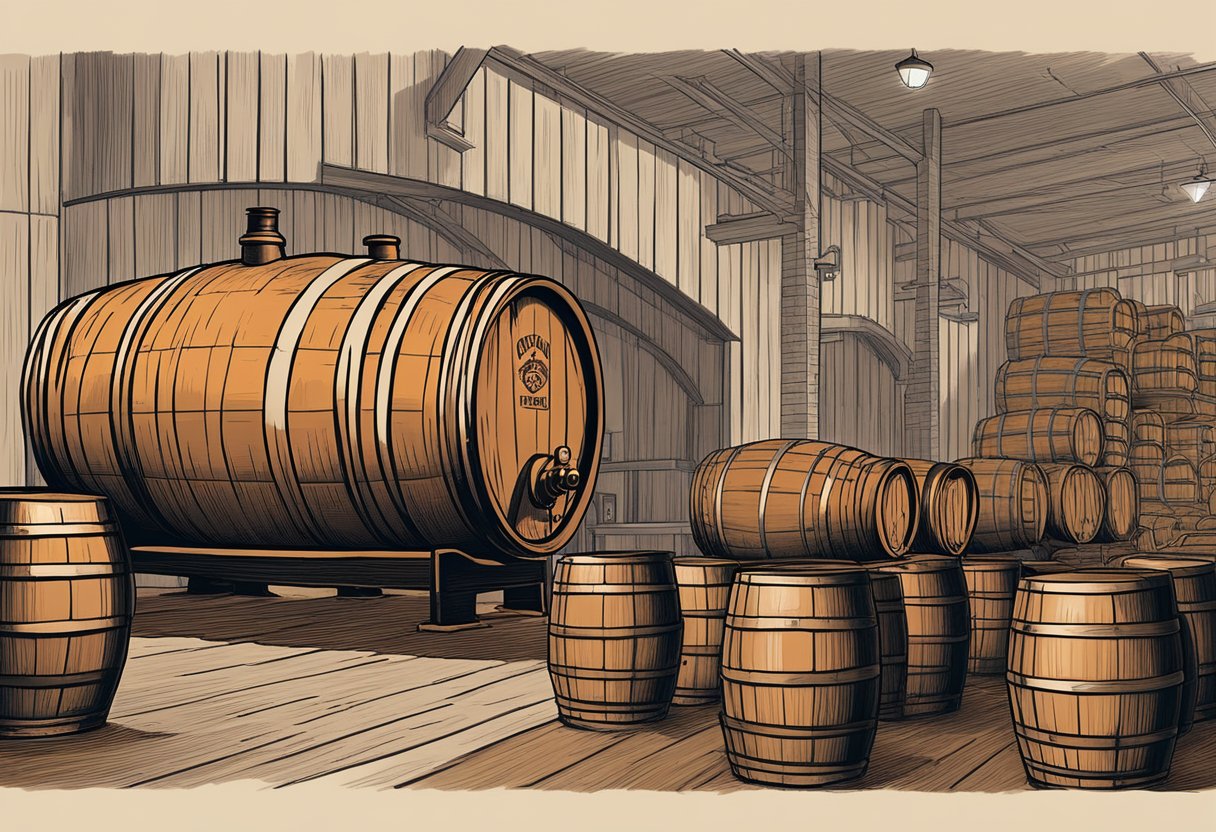
Ingredients and Recipe
Maker’s Mark Cask Strength is made using the same recipe as the regular Maker’s Mark bourbon. The mash bill is composed of 70% corn, 16% soft winter wheat, and 14% malted barley. The use of wheat instead of rye in the recipe gives Maker’s Mark its signature smooth and mellow taste.
The ingredients are carefully selected and sourced from local farms in Kentucky. The corn is ground into a fine meal, while the wheat and barley are malted and milled. The grains are then mixed with limestone-filtered water to create a mash.
Cask Strength Distillation
The factor that sets Maker’s Mark apart is other bourbons are distilled at the maximum 160 proof, Maker’s Mark is distilled to 130 proof. This is what allows their bourbons to be smoother with a more refine taste. Because the lower proof lets the flavors to slowly develop naturally.
Maker’s Mark Cask Strength is distilled in a copper column still that is 30ft x 3ft in size. The distillation process is carried out twice to achieve a high-quality spirit.
After distillation, Maker’s Mark Cask Strength is aged in charred, virgin American white oak barrels. The barrels are carefully selected and toasted to perfection to impart the perfect amount of oak flavor and color to the whisky. The aging process is closely monitored to ensure that the whisky achieves the perfect balance of flavors and aromas.
The use of wheat in the recipe, the lower proof distillation, and the aging in charred oak barrels all contribute to the unique taste and character of this exceptional whisky. Maker’s Mark Cask Strength is a time-honored tradition carefully crafted. The result is their high-quality, delicious bourbon.
Tasting Notes
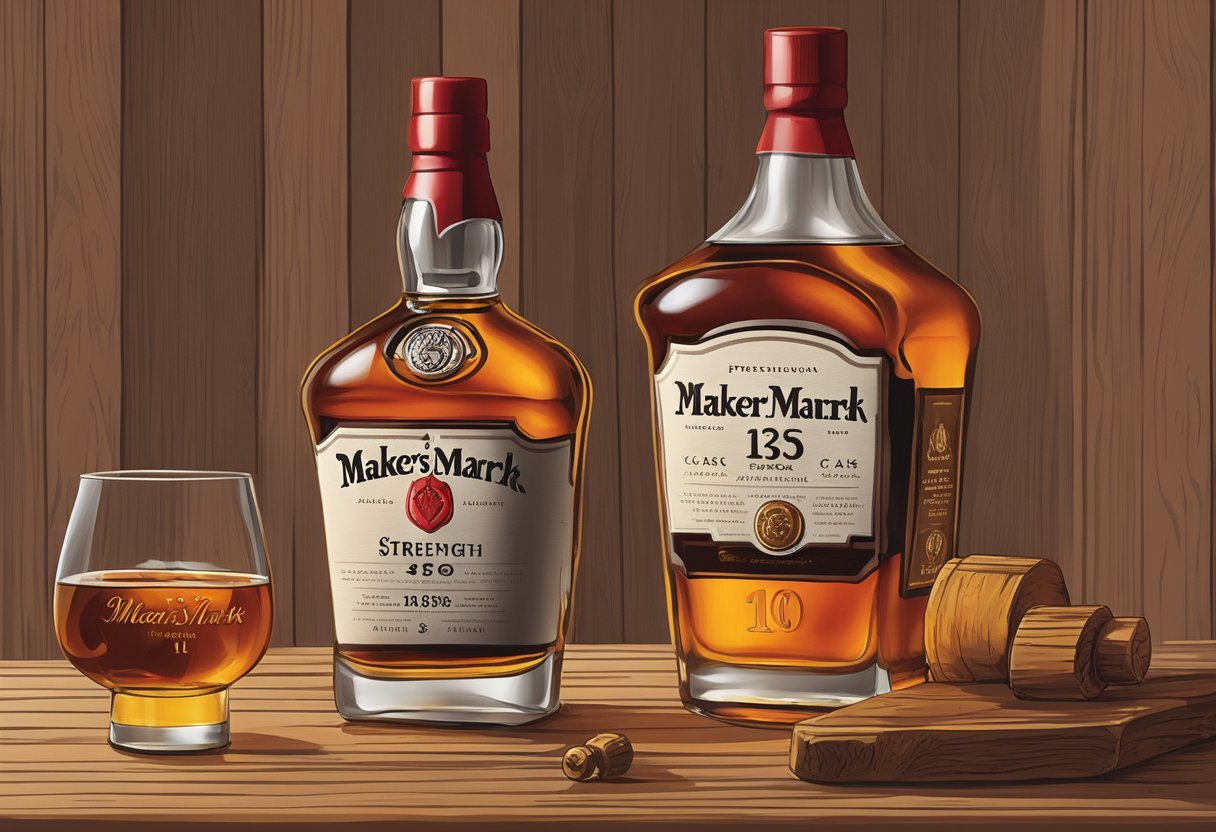
Aroma Profile
When you first bring the glass to your nose, you’ll notice a strong aroma of vanilla and caramel. There’s also a hint of oak, which gives the bourbon a slightly smoky quality. Overall, the aroma is welcoming and quite sweet.
Flavor Characteristics
The first thing you’ll notice when you take a sip of this Cask Strength offering is the strong alcohol burn. This is to be expected given the high proof, but it’s not overpowering. Once the initial burn fades, you’ll start to taste the sweet, rich flavors of vanilla and caramel. There’s also a noticeable oak flavor that gives the bourbon a slightly bitter edge.
The mouthfeel is quite thick and oily, which makes the bourbon feel luxurious and indulgent. The finish is long and warm, with a lingering sweetness that makes you want to take another sip.
Maker’s Mark Cask Strength
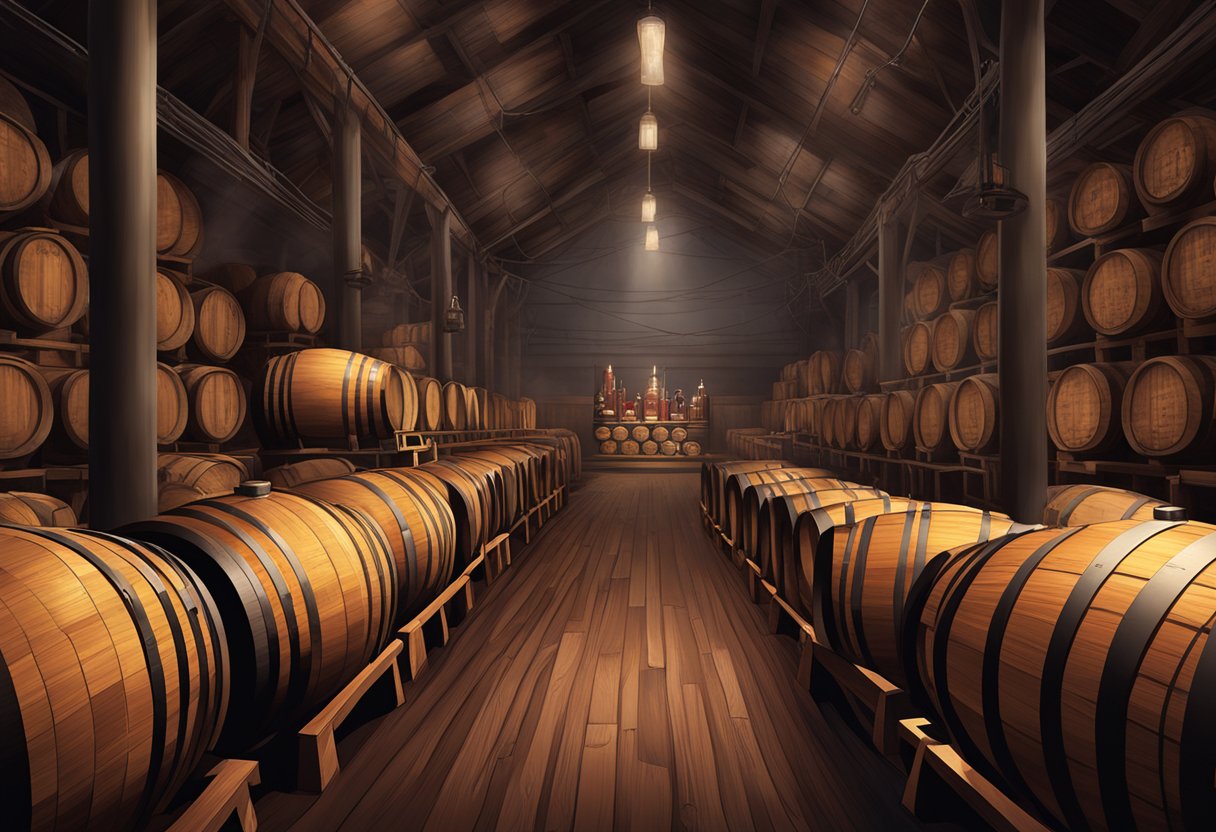
Maker’s Mark offering of their cask-strength version of its bourbon has some key features over their other expressions.
- Higher Alcohol Content: The alcohol content of Maker’s Mark Cask Strength varies from batch to batch, typically ranging between 108 to 114 proof (54% to 57% alcohol by volume). This higher proof brings a more intense flavor profile.
- Flavor Profile: Expect a richer and fuller taste compared to the standard Maker’s Mark. It typically features notes of caramel, vanilla, and oak, with a spicy kick due to the higher alcohol content.
- Non-Chill Filtered: This bourbon is usually non-chill filtered, retaining more of the natural flavors and compounds present in the whisky. This leads to a slightly cloudier appearance, especially when cold or mixed with water, but it also means a richer flavor profile.
- Handcrafted and Small Batch: Maker’s Mark is known for its handcrafted approach to bourbon making. The cask strength version is no exception, with each batch having slight variations, giving it a unique character.
- Packaging and Presentation: It usually comes in a bottle similar to the standard Maker’s Mark but with distinctive labeling to indicate its cask strength nature. The iconic red wax seal is a hallmark of Maker’s Mark bottles.
- Usage: A delicious bourbon that’s versatile in use. Its robustness is just right for sipping neat or on the rocks. And also strong enough to hold its flavor in cocktails.
If you appreciate a stronger, more unadulterated whisky experience. You are going to love this offering.
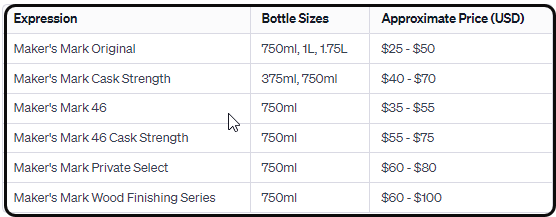
To ensure consistency in flavor, Maker’s Mark Cask Strength is blended from a selection of barrels that have been aged for different amounts of time. This allows the distiller to create a balanced and complex flavor profile that is unique to each batch.
Serving Recommendations
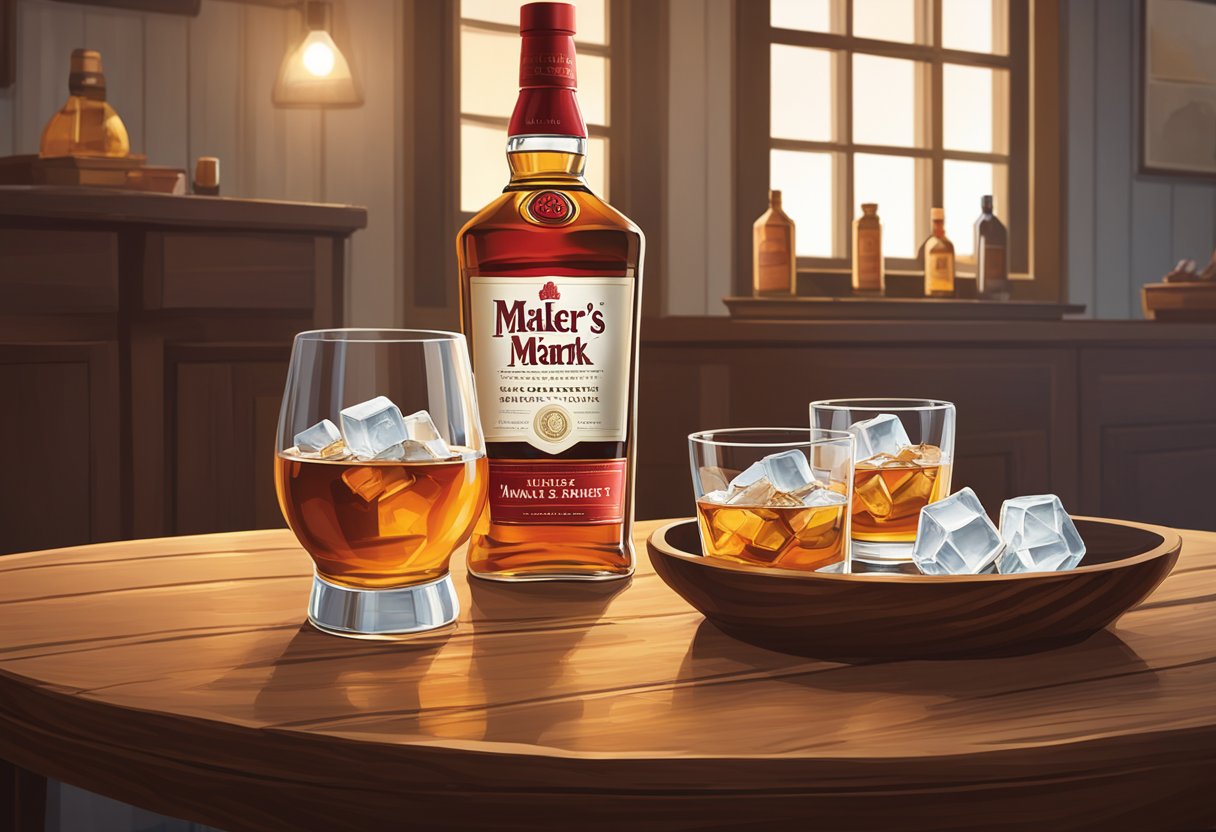
When it comes to enjoying Maker’s Mark Cask Strength, there are a few things to keep in mind to ensure the best possible experience. Here are some serving recommendations to help you get the most out of your bottle.
Ideal Glassware
To fully appreciate the color, aroma, and flavor of Maker’s Mark Cask Strength, it’s recommended that you serve it in a glass that allows you to appreciate these qualities. A rocks glass or a Glencairn glass are great options for sipping this bourbon. The rocks glass is a classic choice for serving whisky on the rocks, while the Glencairn glass is designed to enhance the aroma and flavor of the whisky.
Cocktails and Pairings
While Maker’s Mark Cask Strength is certainly enjoyable on its own, it can also be used to make some delicious cocktails. The high proof of this bourbon means that it can stand up to other bold flavors, making it a great choice for cocktails like an Old Fashioned or a Manhattan.
If you’re looking to pair Maker’s Mark Cask Strength with food, consider pairing it with something that can stand up to its bold flavor profile. A juicy steak or a rich chocolate dessert are both great options that can complement the flavors of this bourbon.
Understanding Whisky Labels
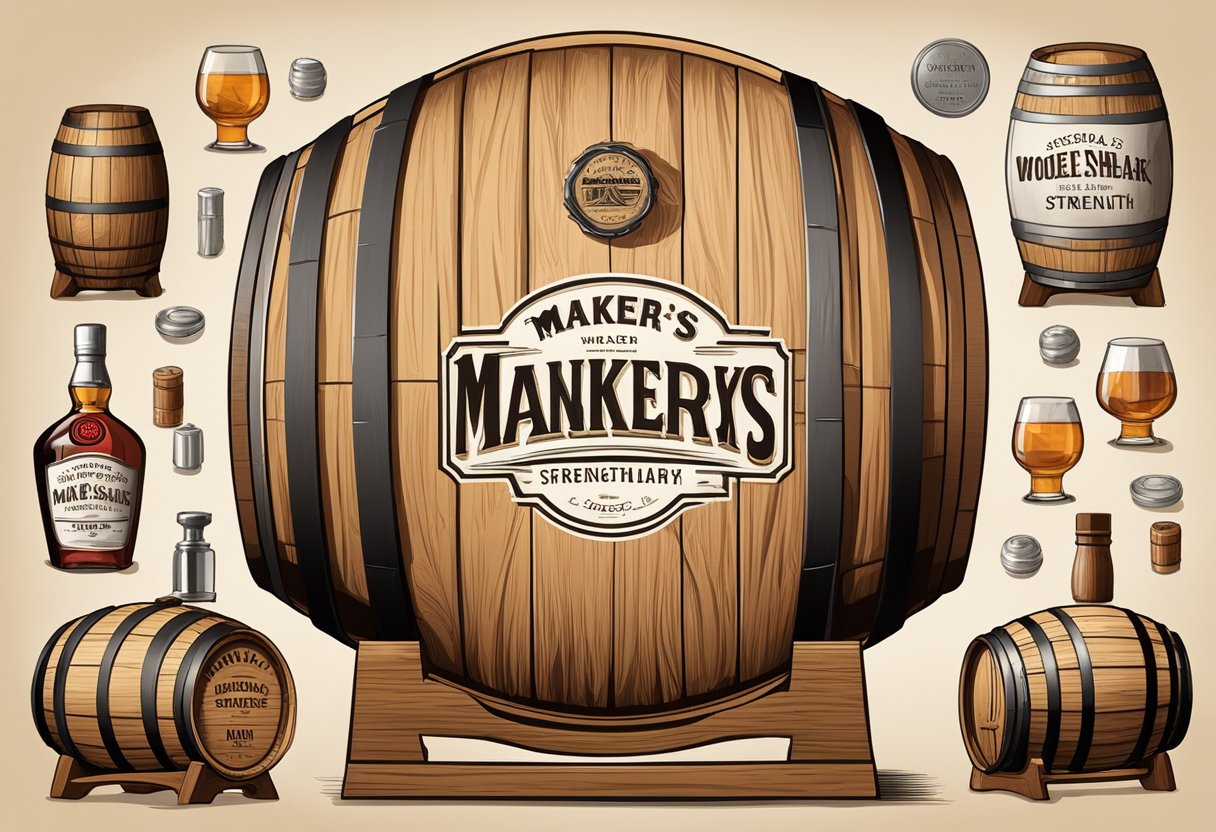
When it comes to understanding whisky labels, there are a few key things to keep in mind. In this section, we’ll cover some of the most important terminology and concepts you need to know.
Label Terminology
One of the most important things to understand when reading a whisky label is the terminology used. Here are a few key terms you should be familiar with:
- Bourbon: A type of American whisky that is made from at least 51% corn and aged in new, charred oak barrels.
- Cask Strength: Whisky that has not been diluted with water before bottling. This means that it is bottled at the same strength it was when it came out of the barrel.
- Proof: A measure of the alcohol content of a whisky. In the United States, proof is defined as twice the percentage of alcohol by volume (ABV).
Proof and Alcohol Content
Another important factor to consider when reading a whisky label is the proof and alcohol content. This information can help you understand how strong the whisky is and how it might taste.
For example, Maker’s Mark Cask Strength is bottled at barrel proof, the reason for 108 to 114 proof. This is significantly higher than the standard Maker’s Mark bourbon, which is bottled at 90 proof.
When it comes to alcohol content, Maker’s Mark Cask Strength has an ABV of around 54% to 57%, compared to the standard Maker’s Mark bourbon, which has an ABV of around 45%.
Understanding these terms and concepts can help you make informed decisions when choosing a whisky to try or buy. Keep them in mind the next time you’re browsing the whisky aisle or reading a label at a bar.
Purchasing Guide
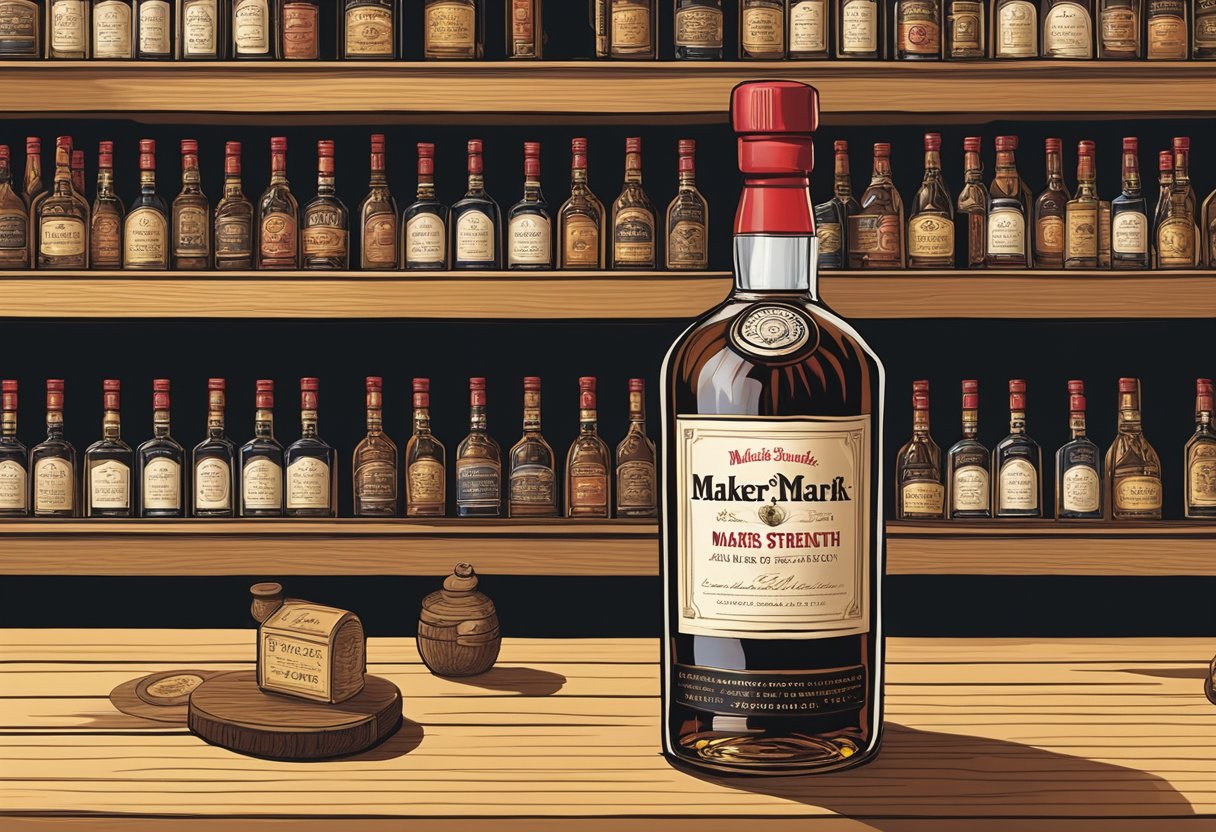
Where to Buy
Maker’s Mark Cask Strength is a premium bourbon that can be found at most liquor stores. You can also purchase it online from various retailers. Some popular online retailers include Drizly, Instacart, and Caskers. Be sure to check your local laws and regulations regarding the shipment of alcohol before purchasing online.
Price Comparison
The price of Maker’s Mark Cask Strength can vary depending on your location and the retailer you choose. On average, you can expect to pay around $36.89, prices can range from $38.99 to $73.00. It’s always a good idea to shop around and compare prices before making a purchase.
Here is a price comparison table for Maker’s Mark Cask Strength at various retailers:
| Retailer | Price |
|---|---|
| Drizly | $40.99 |
| Instacart | $42.99 |
| Caskers | $41.99 |
Keep in mind that prices may vary depending on your location and the availability of the product. It’s always a good idea to check with your local liquor store for current pricing and availability.
Responsible Consumption
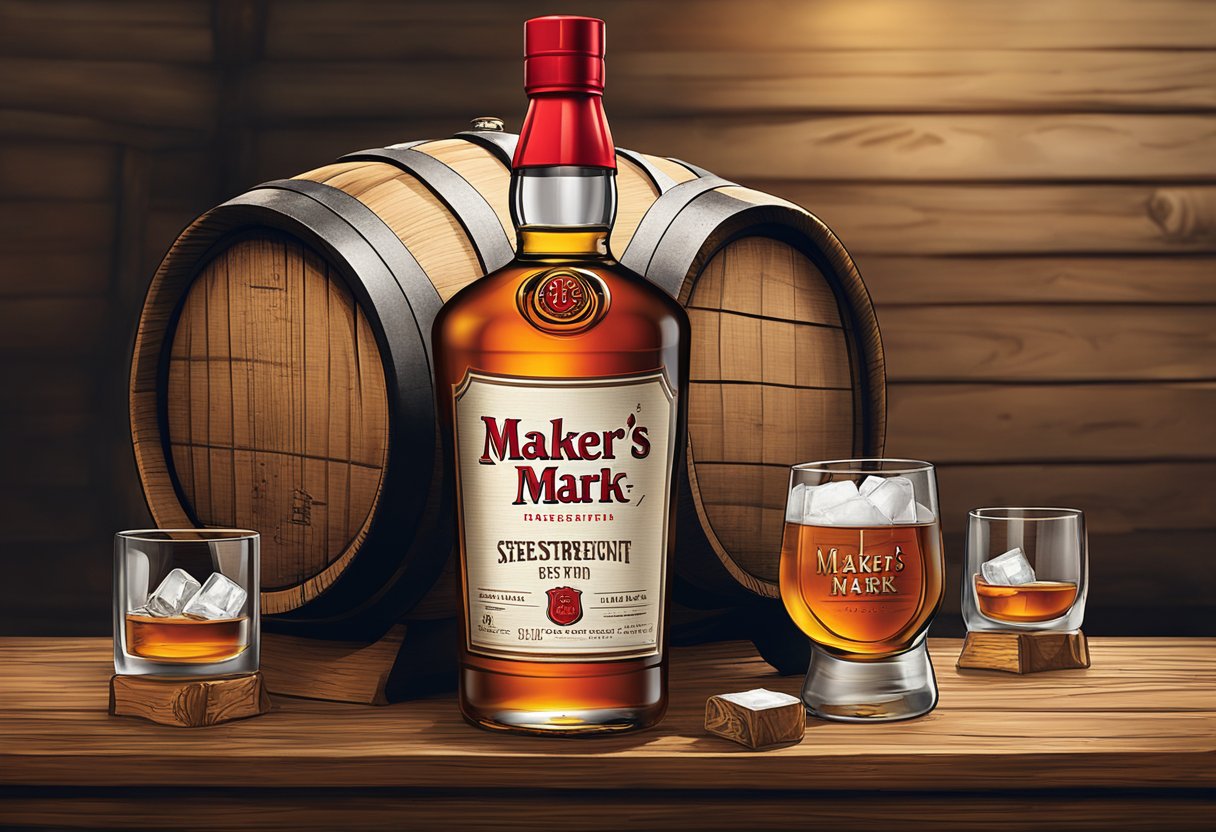
Enjoying Whisky Responsibly
When it comes to enjoying Maker’s Mark Cask Strength, it’s important to do so responsibly. This means drinking in moderation and being aware of your limits. The recommended serving size for whisky is typically 1.5 ounces, which is equivalent to one shot. It’s also important to pace yourself and avoid drinking too quickly.
To fully enjoy the flavors and aromas of this expression, it’s recommended to drink it neat or with a splash of water. Adding mixers or ice can dilute the whisky and mask its unique taste. Additionally, it’s important to savor the whisky slowly and appreciate its complexity.
Health Considerations
Moderate consumption of whisky has been associated with potential health benefits, such as reducing the risk of heart disease and stroke. However, excessive consumption can have negative effects on your health. It’s important to be aware of the risks associated with alcohol consumption, such as liver damage, high blood pressure, and addiction.
If you have any health concerns or are taking medication, it’s important to consult with your healthcare provider before consuming Maker’s Mark Cask Strength or any other alcoholic beverage. Pregnant women and individuals under the legal drinking age should avoid consuming alcohol altogether.
Overall, responsible consumption involves drinking in moderation, savoring the whisky slowly, and being aware of your limits and potential health risks.
Frequently Asked Questions
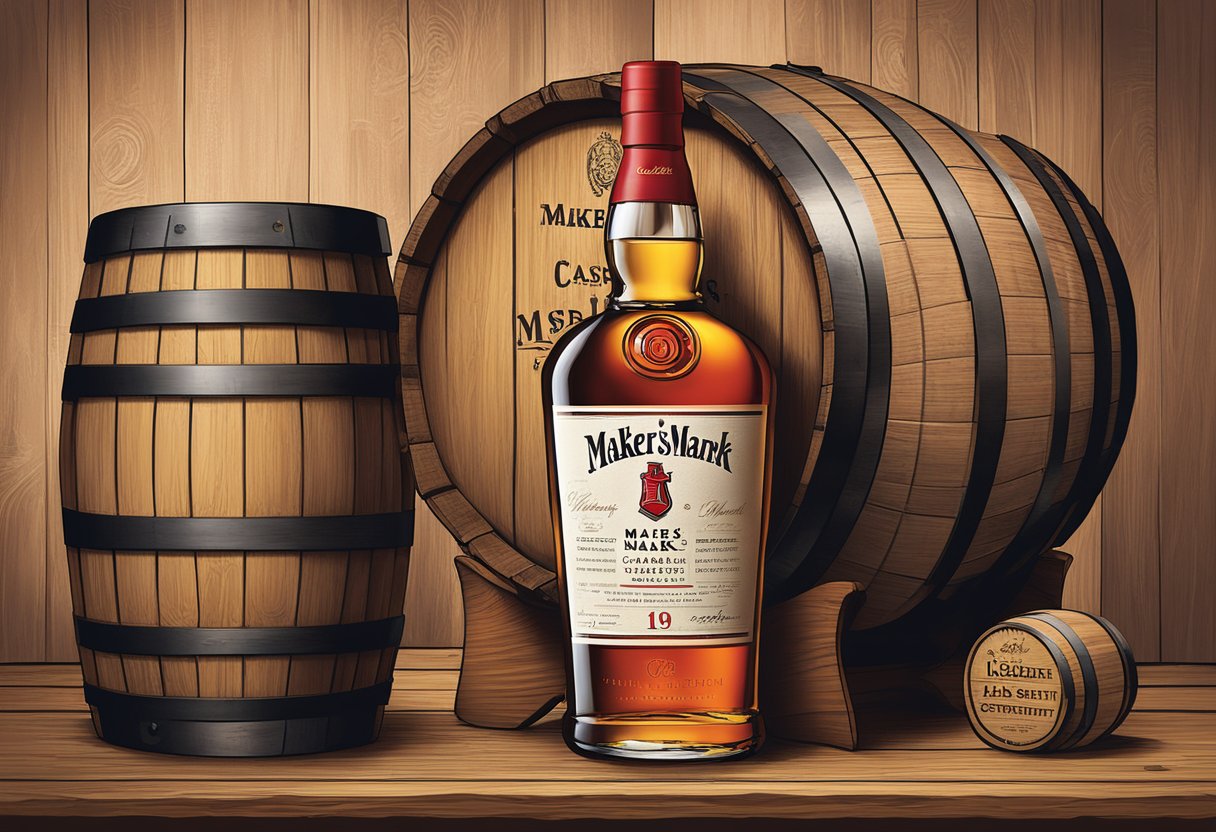
What is the typical proof range for Maker’s Mark Cask Strength?
Maker’s Mark Cask Strength is bottled at barrel proof, which means the proof can vary depending on the barrels. The typical proof range for Maker’s Mark Cask Strength is between 108 to 114 proof.
How does Maker’s Mark Cask Strength differ from Maker’s Mark 46?
Maker’s Mark Cask Strength is made from the same mash bill as Maker’s Mark, but it is bottled at a higher proof and is non-chill filtered. Maker’s Mark 46 is made by finishing Maker’s Mark in barrels with seared French oak staves.
What tasting notes are commonly associated with Maker’s Mark Cask Strength according to reviews?
According to reviews, Maker’s Mark Cask Strength is known for having a rich and full-bodied flavor with notes of vanilla, caramel, oak, and spice. It has a smooth and creamy mouthfeel with a long and warm finish.
Where can one purchase Maker’s Mark Cask Strength?
Maker’s Mark Cask Strength can be purchased at select liquor stores and online retailers. It is also available at the Maker’s Mark distillery in Loretto, Kentucky.
Is Maker’s Mark considered a premium whisky brand?
Maker’s Mark is considered a premium whisky brand by many whisky enthusiasts and critics. It is known for its high-quality ingredients, unique production process, and consistent flavor profile.
Home Bar Haven: Crafting Unforgettable Gatherings
Home Bar Bliss: Your Personal Retreat for Cheerful Toasts and Timeless Memories
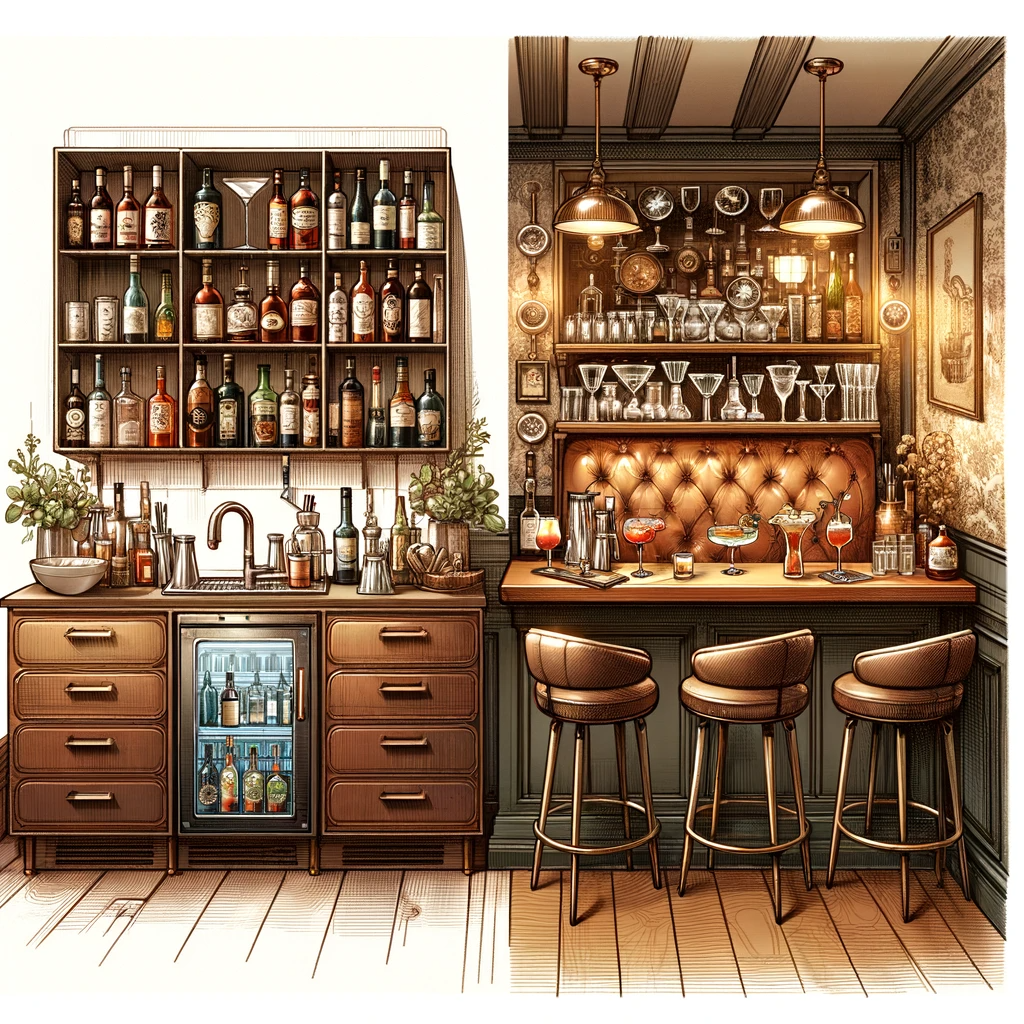
Have you ever wanted a bar you could call your own? Sometimes you want to go where everybody knows your name,” and what better place than your very own home bar? Invite some friends over and do what you do. Ah, the joy of walking into a space that greets you like an old friend, where the laughter is hearty, the ambiance cozy, and every drink tells a story.
Let the day’s worries melt away, and let’s embark on this delightful journey of transforming a part of your home into the most welcoming spot on the block.
Raise your glass to your personal haven of hospitality, where every pour is personal, and every guest leaves happier. Yes, we’re talking about creating your very own home bar.
From the sleek allure of a modern mini bar to the charming comfort of a classic pub corner, your home bar can be more than just a place to serve drinks; it can be a reflection of your personality, a centerpiece of your entertaining arsenal, and a tribute to the timeless art of mixology. Whether you’re dreaming of shaking up zesty cocktails or pouring smooth, aged whiskies, this is your golden ticket to a world where your home becomes synonymous with hospitality and style.
Your Toast, Your Haven: Crafting the Ultimate Personal Home Bar Experience

A home bar can be a delightful addition to your living space, offering a dedicated area for entertaining guests, enjoying drinks, and showcasing your taste in beverages and decor. Here are some key aspects to consider when thinking about a home bar:
Design and Style:
The design of your home bar can range from a classic pub-style setup to a modern, minimalist counter. It should reflect your personal style and the overall aesthetic of your home. You can opt for built-in cabinetry, a freestanding bar unit, or even a small cart if space is limited.
Essential Equipment:
A well-stocked home bar should have the basic equipment like shakers, jiggers, a strainer, a muddler, and bar spoons. Glassware is also important – having a variety of glasses suitable for different types of drinks (such as wine glasses, beer mugs, cocktail glasses) enhances the drinking experience.
Stocking the Bar:
The choice of spirits, wines, and beers will depend on your personal preference and the type of drinks you plan to serve. A basic selection might include vodka, gin, rum, tequila, whiskey, and a few mixers like vermouth, bitters, and soda. Don’t forget non-alcoholic options for guests who prefer them.
Seating and Layout:
Comfortable seating is crucial for a home bar. Bar stools or lounge chairs can be used, depending on the space and layout. The bar should be accessible and have enough space for people to gather without feeling crowded. Additionally, it’s important to contemplate the desired form of your bar. Various configurations are available for consideration, such as L-shaped, horseshoe-shaped, or linear bar designs.
Lighting and Ambiance:
Good lighting can greatly enhance the ambiance of your home bar. Soft, warm lighting creates a cozy and inviting atmosphere, while brighter lights can energize the space.
Accessories and Decor:
Adding personal touches like artwork, themed decor, or a display of your favorite bottles can make your home bar more inviting. Tools and accessories should be both functional and aesthetically pleasing.
Entertainment Options:
Some people like to include a TV, sound system, or games (like a dartboard) near their home bar to create an entertaining and social atmosphere.
Safety and Responsibility:
Always remember to serve and consume alcohol responsibly. It’s important to be mindful of the safety and comfort of your guests.
Budget Considerations:
Setting up a home bar can vary in cost, depending on the complexity and quality of the equipment and spirits you choose. It’s wise to plan your budget in advance.
DIY Options:
If you’re handy, you can consider building your own bar or customizing a piece of furniture to serve as a bar. This can be a fun project and also a way to tailor the bar to your specific needs and space.
Whether it’s for casual evenings at home or for hosting parties, a home bar can be a source of enjoyment and a way to express your hospitality and taste.
A Comprehensive Step-by-Step Guide to Help You Get Started

Starting a home bar can be an exciting project. Here’s a step-by-step guide to help you begin:
1: Assess Your Space
- Evaluate the Space: Decide where in your home the bar will be located. Consider factors like size, proximity to the seating area, and ease of access.
- Measure the Area: Ensure you know the dimensions of the space to determine what size bar furniture will fit.
2: Decide on the Type of Bar
- Bar Furniture Options: Choose between a built-in bar, a freestanding bar, or a bar cart, based on your space and needs.
- DIY or Purchase: Decide if you want to build your bar or buy pre-made furniture.
3: Gather Basic Equipment
- Bar Tools: Start with essential tools like a shaker, jigger, strainer, bar spoon, muddler, bottle opener, and corkscrew.
- Glassware: Get a basic set of glasses, including wine glasses, beer glasses, and a mix of cocktail glasses (highball, lowball, martini).
4: Stocking Your Bar
- Select Spirits: Begin with the basics: vodka, gin, rum, tequila, whiskey, and possibly brandy.
- Mixers and Garnishes: Stock up on common mixers (soda, tonic, juices) and garnishes like lemons, limes, and olives.
- Wine and Beer: Include a selection of red and white wines and a variety of beers.
5: Seating and Layout
- Seating: Choose comfortable seating that matches the height of your bar.
- Layout Planning: Arrange your space for easy access and movement. Ensure your guests have enough room.
6: Create the Right Ambiance
- Lighting: Install good lighting; adjustable lighting can be a great option.
- Decor: Personalize your space with decor that reflects your style and complements your home.
7: Learn Basic Mixology
- Cocktail Recipes: Learn to make a few classic cocktails. There are plenty of resources available online and in books.
- Tasting and Experimentation: Experiment with different flavors and combinations to create your signature drinks.
8: Plan for Safety and Responsibility
- Responsible Hosting: Always encourage responsible drinking.
- Non-Alcoholic Options: Make sure to have a variety of non-alcoholic drinks for those who prefer them.
9: Enjoy and Expand Gradually
- Entertain and Get Feedback: Host a few small gatherings to test out your setup and get feedback.
- Expand as Needed: As you become more comfortable, you can gradually add more spirits, tools, and decor.
Remember, the key to a successful home bar is not just about having a wide range of drinks but creating a welcoming and enjoyable space for you and your guests. Take your time to build it up according to your taste and budget. Cheers to your new home bar adventure!
Home Bar Ideas: From Classic Elegance to Modern Chic

Here are 15 home bar ideas that can cater to various styles and spaces:
1. Classic Pub Style:
Create a traditional pub atmosphere with dark wood, brass accents, and vintage pub memorabilia.
2. Modern Minimalist:
Opt for a sleek, contemporary look with clean lines, a neutral color palette, and minimal decor.
3. Wine Lover’s Nook:
Focus on wine storage with a built-in wine rack, wine fridge, and a small seating area for wine tasting.
4. Rustic Charm:
Use reclaimed wood, mason jar lights, and rustic metal stools for a cozy, country feel.
5. Speakeasy Vibes:
Design a hidden bar behind a bookcase or a secret panel for a Prohibition-era speakeasy theme.
6. Outdoor Oasis:
Set up an outdoor bar with weather-resistant materials, a grill area, and patio seating for summer entertaining.
7. Retro 1950s Bar:
Create a nostalgic feel with vintage 1950s decor, neon signs, and classic diner-style bar stools.
8. Industrial Edge:
Use elements like exposed brick, industrial lighting, and metal stools for a raw, industrial look.
9. Tiki Bar Theme:
Embrace a tropical vibe with bamboo furniture, tiki masks, and colorful tropical drinks.
10. Glamorous Cocktail Lounge:
Incorporate luxurious materials like velvet, mirrored surfaces, and ornate lighting for a touch of glamour.
11. Space-Saving Corner Bar:
Utilize a corner of your room with a compact bar cabinet and corner shelves to maximize space.
12. Sports Bar Setup:
Equip your bar with multiple TVs, sports memorabilia, and comfortable seating for watching games.
13. Art Deco Elegance:
Adopt an Art Deco style with geometric patterns, bold colors, and ornamental details.
14. Scandinavian Simplicity:
Go for a clean and simple Scandinavian design with light woods, white colors, and functional decor.
15. Bohemian Chic:
Create a relaxed, eclectic space with vintage furniture, colorful textiles, and unique artisanal decor.
Each of these ideas can be adapted to fit the space you have available, whether it’s a small corner unit in your living room or a dedicated room for your home bar. Remember, the best home bar is one that reflects your personal style and meets your entertainment needs.
The Collins Glass: A Fascinating Journey from A London’s Coffee House to Modern Cocktail Culture
Introduction to the Collins Glass
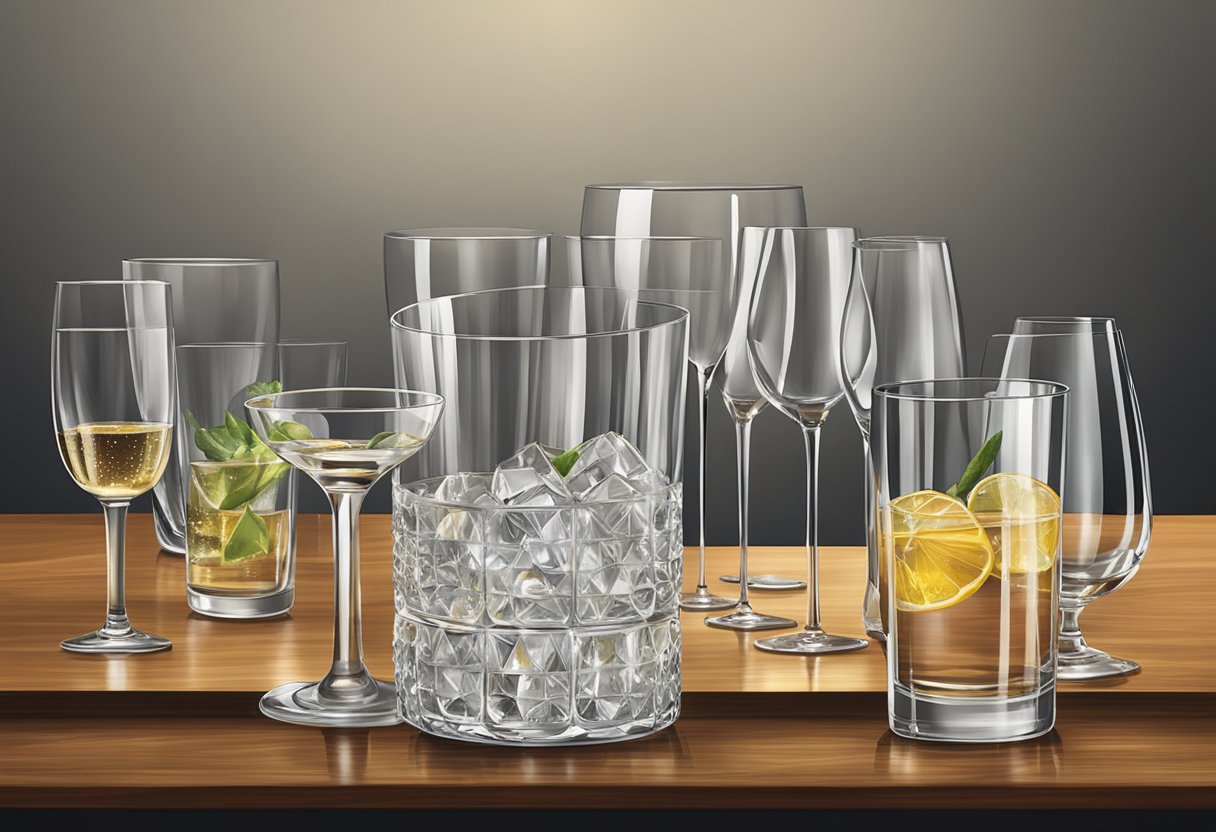
Glasses often get their names from shapes or uses. Sometimes, a cocktail inspires a glass’s name. The Collins glass is a prime example. Let’s delve into its history, starting with the cocktail itself.
Early Beginnings: The Gin Punch
Limmer’s Hotel and the Gin Punch Recipe
There was a coffee house that was located in London England, from 1782 until the 1860’s. It was south of Hanover Square, on the corner of Conduit Street and St. George Street. It was named Limmer’s Hotel. Limmer’s Hotel was known for their Gin Punch. Gin Punch typically is served in large punch bowls.
Gin Punch Recipe
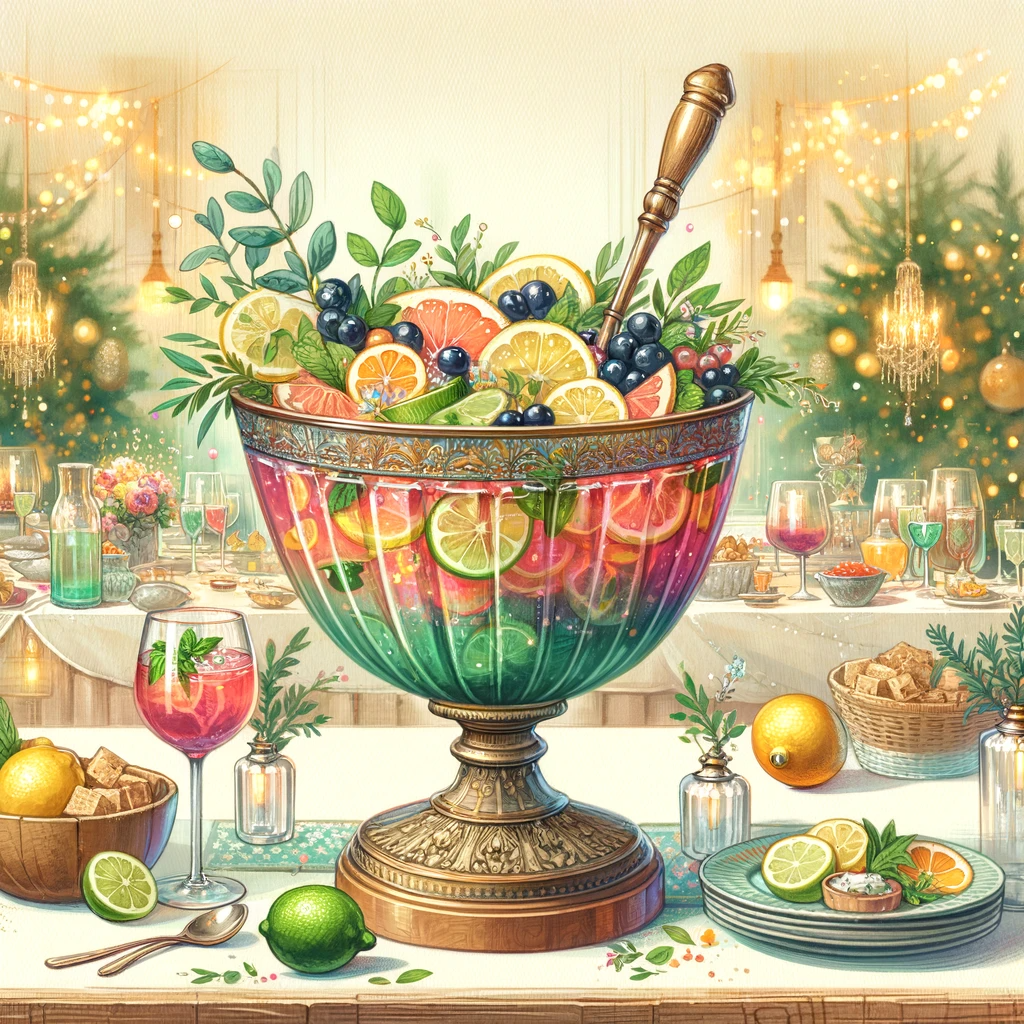
Ingredients
- 1 cup gin
- 1 cup lemon juice
- 1 cup orange juice
- 1 cup pineapple juice
- 1/2 cup simple syrup
- 1/2 cup maraschino liqueur
- 1/2 cup apricot nectar
- 1/2 cup sparkling wine
- 1/2 cup club soda
- 1 orange, sliced.
- 1 pineapple, sliced.
- 1 apricot, sliced.
- 1 lime, sliced.
- Ice
Instructions
- Combine the gin, lemon juice, orange juice, pineapple juice, simple syrup, maraschino liqueur, and apricot nectar in a large punch bowl.
- Add the sliced orange, pineapple, apricot, and lime to the bowl.
- Refrigerate the mixture for at least 4-5 hours.
- Just before serving, add the sparkling wine, club soda, and ice to the bowl.
The Birth of the John Collins Cocktail
Limmer’s hotel had a waiter by the name of John Collins who created a drink using Old Tom Gin that was similar to Gin Punch. The drink was known as a John Collins Cocktail in the early 1800’s.
The “Father of American Mixology”, Jerry Thomas memorialized the drink in writing in 1876.
“New and Improved Bartender’s Manual: Or How to Mix Drinks of the Present Style” was published in 1882, written by Harry Johnson. This was the earliest publication of a Collins recipe.
The Rise of the Tom Collins
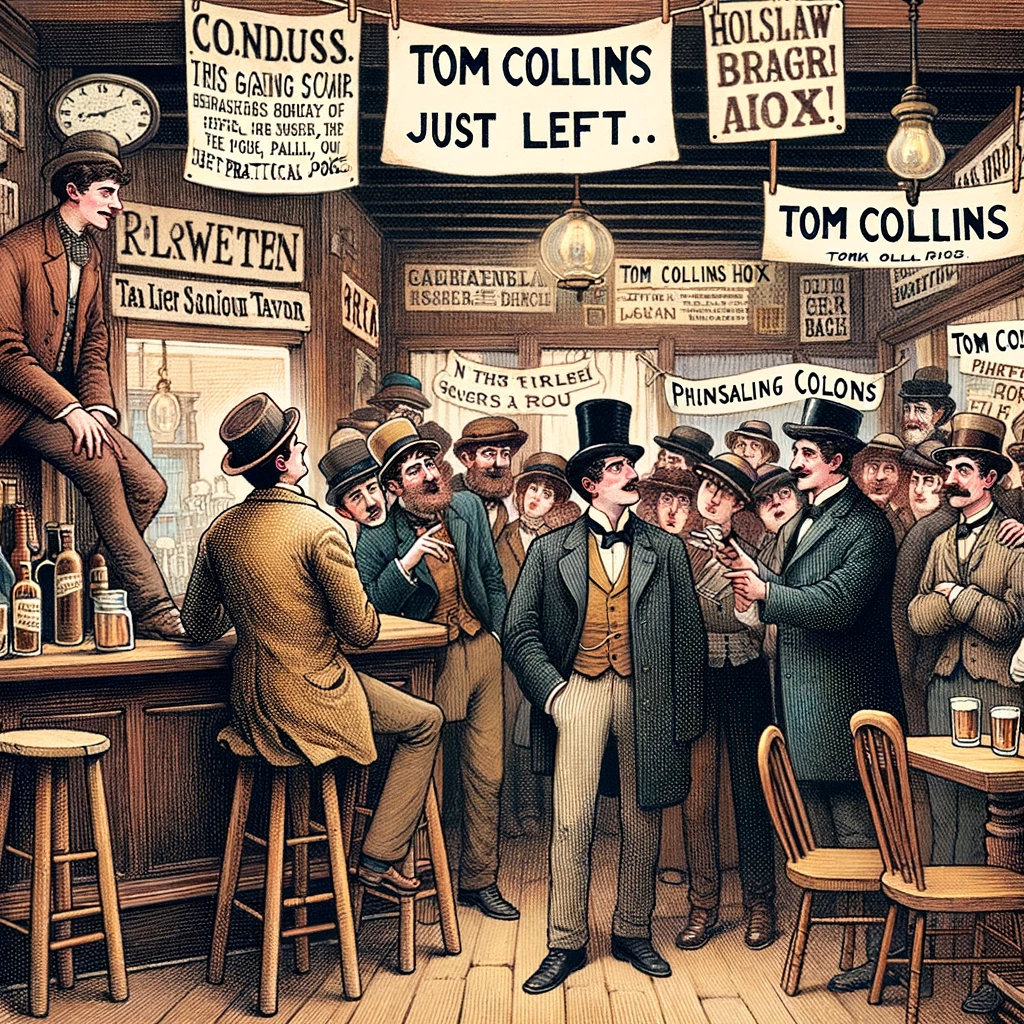
The Tom Collins Hoax
In 1874 there was a famous practical joke that became a widespread phenomenon in the United States, particularly in New York City and Philadelphia. Here’s how it worked:
- The Setup: The prank began with someone informing a friend or acquaintance that a man named Tom Collins was at a nearby bar or tavern, speaking slanderously about them. This person, supposedly named Tom Collins, was described as being very vocal in his criticisms and making outrageous and often personal remarks.
- The Reaction: The target of the joke, believing that someone was publicly slandering their reputation, would hurry to the named establishment to confront this Tom Collins.
- The Punchline: Upon arriving at the bar, the victim would inquire about Tom Collins, only to be met with confusion or being told that Tom Collins just left. And he was heading over to another establishment. The target would go from place to place looking for Tom Collins until they would realize Tom Collins doesn’t exist. The joke was that Tom Collins never existed; he was a fictional character created purely for the prank.
- The Spread of the Hoax: The hoax quickly spread and became so popular that it was reported in newspapers of the time. People would be sent from bar to bar in search of the elusive Tom Collins, only to become the laughingstock of those in on the joke.
The coincidence of the name “Tom Collins” being used in the popular hoax and the evolution of the John Collins cocktail into the Tom Collins likely led to the two becoming associated in the public’s mind. The notoriety of the hoax possibly helped to popularize the name of the cocktail, cementing it in cocktail culture.
Tom Collins Recipe
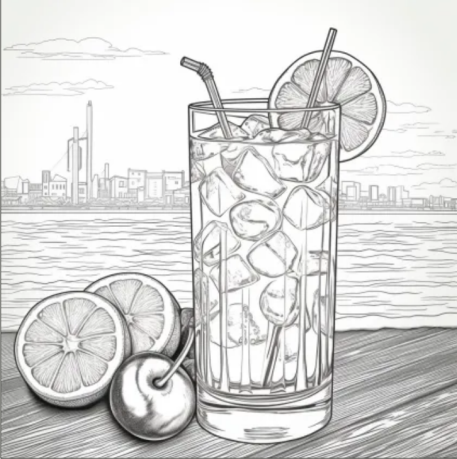
Ingredients:
- 2 oz (60 ml) Gin
- 1 oz (30 ml) Fresh Lemon Juice
- 1/2 oz (15 ml) Simple Syrup (adjust to taste)
- Club Soda or Carbonated Water
- Ice
- Lemon Slice and Maraschino Cherry for Garnish
Instructions:
- Chill the Glass: Start by chilling a Collins glass in the freezer.
- Mix the Ingredients: In a shaker, combine the gin, lemon juice, and simple syrup. Fill the shaker with ice and shake well.
- Prepare the Glass: Remove the Collins glass from the freezer. Fill it with ice cubes.
- Strain the Mix: Strain the mixture from the shaker into the glass over the ice.
- Top with Soda: Top off the glass with club soda or carbonated water. The amount can vary depending on how strong or weak you prefer your drink.
- Garnish and Serve: Garnish with a slice of lemon and a maraschino cherry. Optionally, you can also add a straw.
- Stir Gently: Give the drink a gentle stir to mix the soda with the rest of the ingredients.
The Evolution of Cocktail Glassware
The development of specialized glassware for different cocktails is a result of practical and aesthetic considerations. Each type of glass is designed to enhance the drinking experience of a particular cocktail. Some of the reasons are:
- enhancing flavors and aromas,
- temperature and dilution,
- presentation and tradition,
- volume and mixing,
- practicality and convenience.
As cocktails became more popular in the late 1800’s, the need for different types of glassware to enhance the drinking experience became apparent. Introducing glasses such as the highball glass.
The Collins Glass: A Highball Evolution
Tom Collins is a highball cocktail. Similarly to other highball drinks, which typically mix a base spirit with a larger portion of a non-alcoholic mixer, it is served in a highball glass. As the Tom Collins cocktail grew in popularity, the specific glass ideal for serving it, the highball glass, became synonymous with the drink. This association between a certain type of glass and a specific cocktail often evolves gradually. Consequently, over time, this glass was commonly referred to as the Collins glass, despite it still being a highball glass.
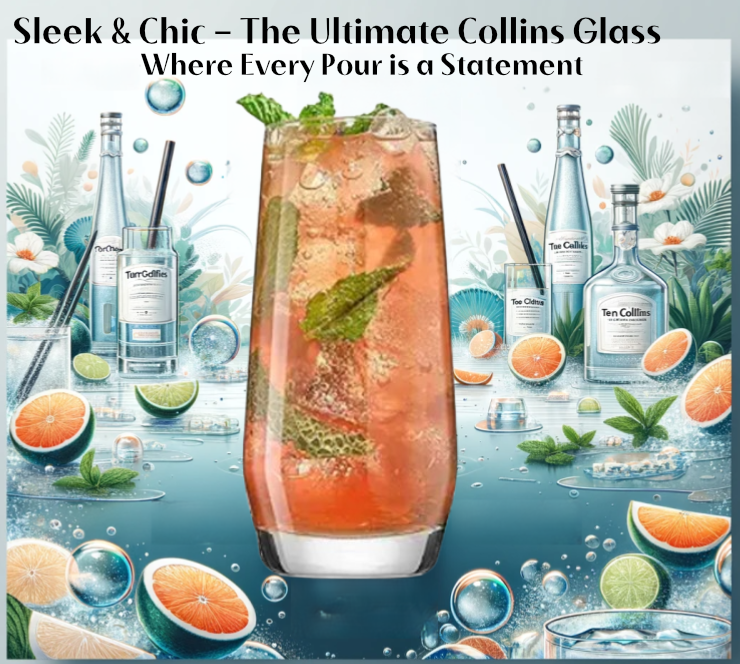
Post-Prohibition and the Collins Glass
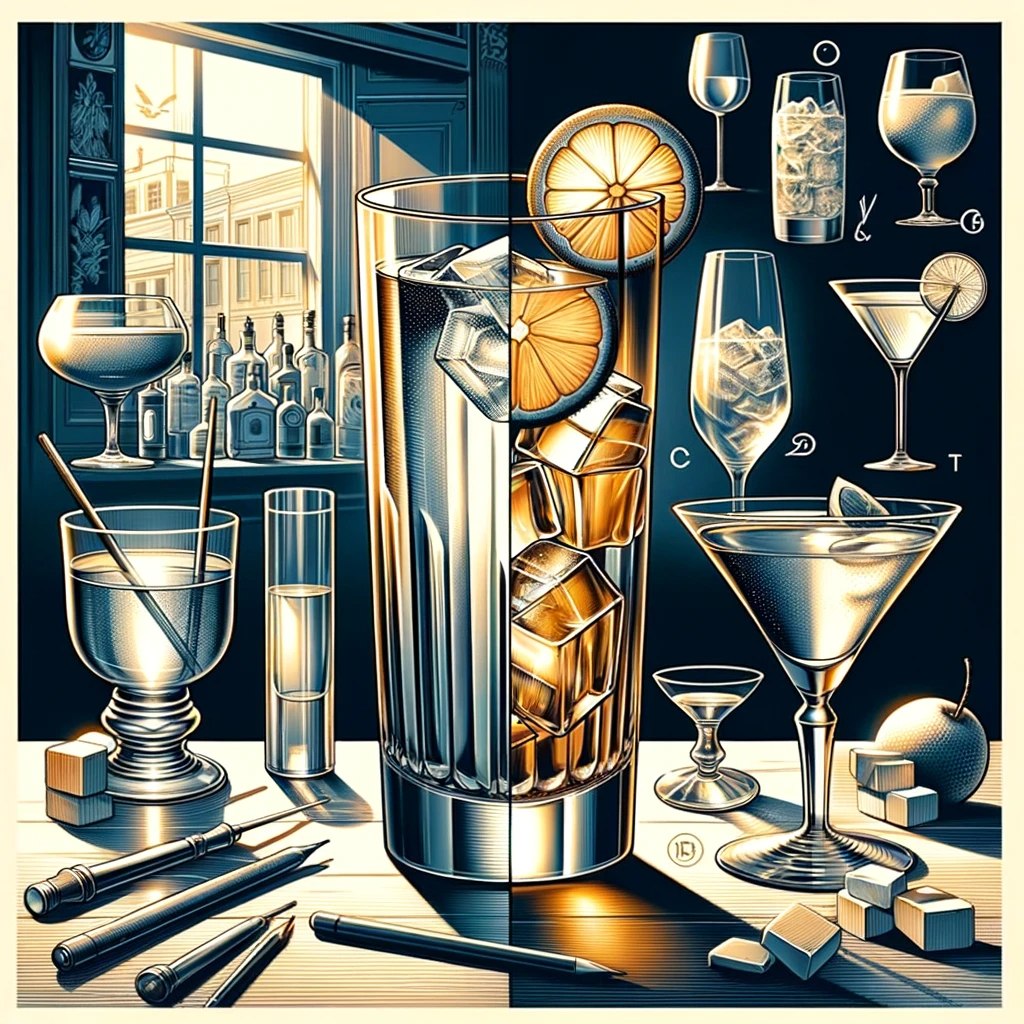
The Collins glass likely appeared after prohibition ended, when there was a rebirth in cocktail culture, and the need for specialized glassware became more pronounced. There was a trend of creating specific types of glassware for particular cocktails and drinks.
Distinct Features of the Collins Glass
The Collins glass is a different type of highball glass. And it does have a specific design that distinguishes it from the Highball glass, though the differences can be subtle. Here’s what sets the Collins glass apart:
- Height: The Collins glass is typically taller than the Highball glass. This height can vary but it’s generally designed to accommodate the drink’s combination of ice, gin, lemon juice, sugar, and carbonated water and more mixer without increasing the diameter of the glass.
- Volume: Collins glasses usually have a capacity ranging from 10 to 16 ounces, which is often slightly more than Highball glasses. This is to accommodate the traditional Collins cocktail recipes which often have a higher volume of soda or mixer. But larger sizes like 20 ounces are not uncommon. The key characteristics of a Collins glass are its tall and narrow shape, rather than its exact capacity.
- Presentation: Because of its taller size, the Collins glass may be chosen for drinks that benefit from a more visually striking presentation, such as those with layered ingredients.
- Shape: The Collins glass is usually straight up and down, whereas the Highball glass can sometimes taper inwards slightly towards the bottom or have a wider mouth.
- Diameter: While both glasses have a similar diameter, the Collins glass tends to be a bit narrower in proportion to its height, which can help maintain carbonation better than the highball glass.
Why the Shape Matters
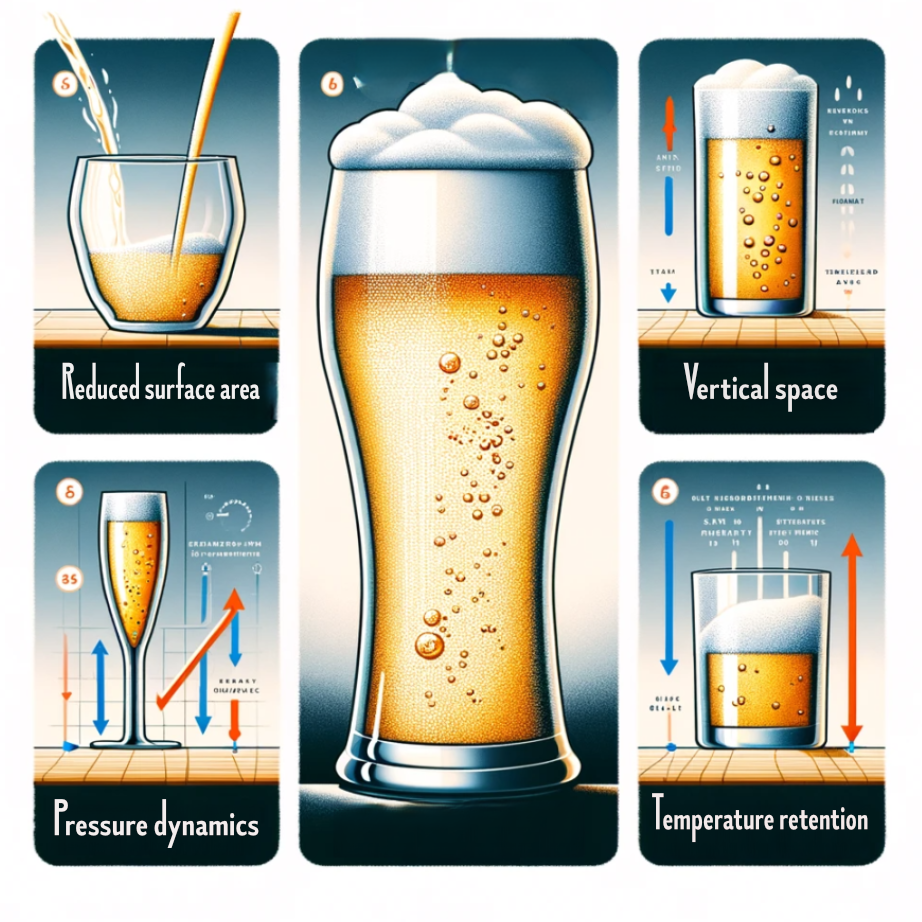
Here are some of the reasons why the shape helps to maintain carbonation:
- Reduced Surface Area: A narrow glass means there’s less surface area at the top of the drink compared to a wider glass. This reduces the area where carbonation can escape from the liquid to the air.
- Vertical Space: The taller shape allows bubbles more time to travel up through the liquid before reaching the surface. This prolonged journey can contribute to a more sustained release of bubbles, which we perceive as carbonation.
- Pressure Dynamics: In a narrower vessel, the liquid exerts more pressure on the carbonated gas, which can keep it dissolved for a longer period. Once the pressure is relieved (when you pour the drink), the gas stays in solution better in a narrow glass.
- Temperature Retention: Narrow glasses may also help keep the drink colder for longer because the drink’s surface area that’s exposed to air (and potentially warm hands) is smaller. A colder drink can hold carbonation better because gases are more soluble in colder liquids.
Cocktail Presentation and the Choice of Glass
In a cocktail experience the presentation and the subtleties of taste and texture are important. The choice of glass will enhance the enjoyment of the carbonated drink. However, most people are not going to notice the difference in a casual drinking setting.

Collins Glass VS Highball Glass
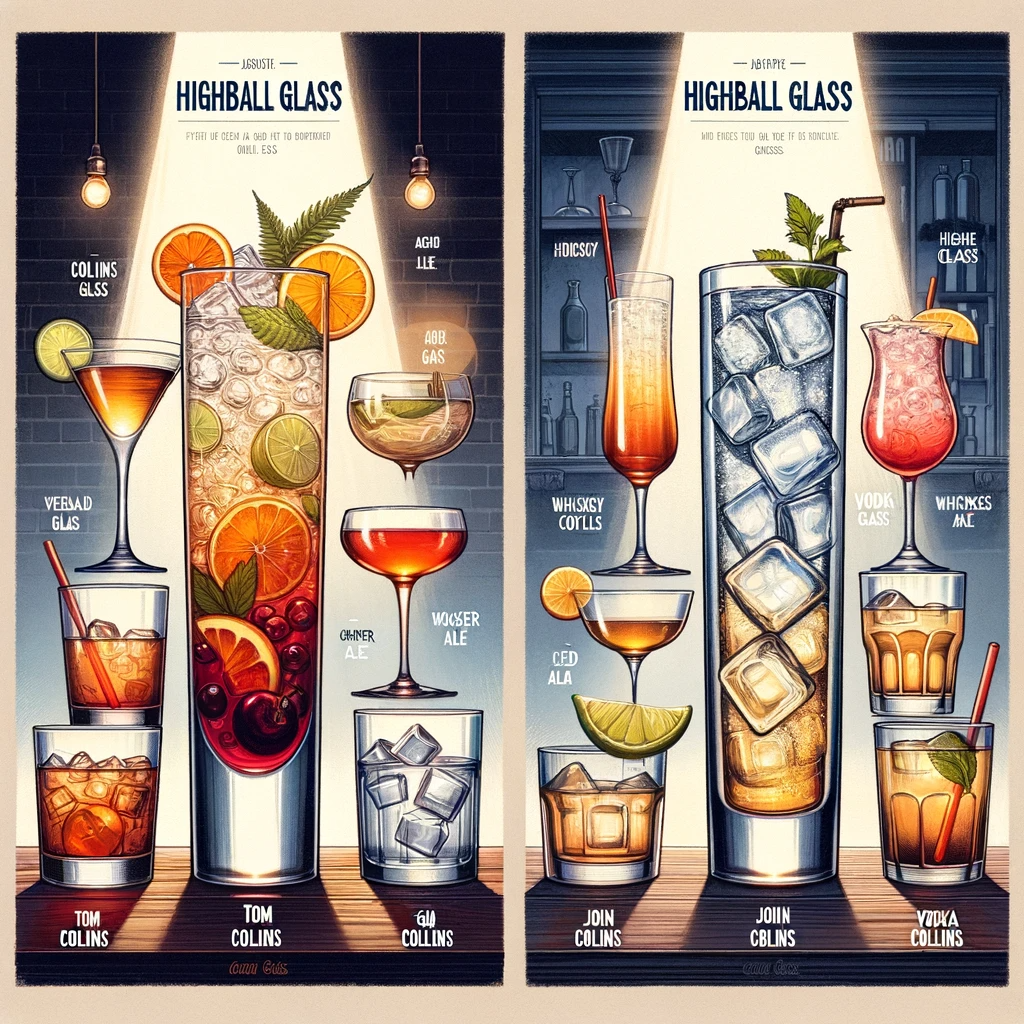
Uses of the Collins Glass
A Collins glass traditionally serves Collins family cocktails. These mixed drinks follow a simple formula: a base spirit, lemon juice, sugar, and soda water. The Collins glass complements this classic combination perfectly. Some of the most popular Collins family cocktails are:
- Tom Collins: Made with gin, lemon juice, sugar, and soda water.
- John Collins: Similar to the Tom Collins but made with bourbon or whiskey instead of gin.
- Vodka Collins: Uses vodka as the base spirit in place of gin or whiskey.
- Rum Collins: Features rum as the main alcoholic ingredient.
- Tequila Collins (also known as “Juan Collins”): Made with tequila as the base spirit.
- Sloe Gin Collins: A variation that uses sloe gin (a plum-flavored spirit) in place of regular gin.
- Whiskey Collins: Essentially the same as a John Collins, emphasizing whiskey as the base spirit.
- Lemon Collins: This is a variation where the focus is more on the lemon flavor, often using additional lemon-based ingredients.
These drinks, renowned for their refreshing and balanced taste, are perfect for warm weather or as an aperitif, stimulating the appetite. In addition to Collins Family cocktails, Collins glasses can be used with:
- Tall Mixed Drinks: Any mixed drink that requires a larger volume, typically involving a combination of a spirit and a greater proportion of mixers like soda, tonic water, or juice.
- Fizzy and Carbonated Beverages: The tall shape is good for preserving the fizz in carbonated drinks, making it suitable for sodas, sparkling water, and even beer in some cases.
- Iced Tea and Lemonade: Non-alcoholic beverages that are served in larger quantities can also be served in a Collins glass, especially if they’re iced.
Highball Glass Uses
A highball glass is used for “highball” drinks, which consist of a base spirit and a larger proportion of a non-alcoholic mixer. These are some of the typical uses for a highball glass:
- Highball Cocktails: Classic examples include the Gin and Tonic, Whiskey and Ginger Ale, Vodka and Tonic, and Rum and Coke. These are simple mixed drinks with one or two ingredients added to the base spirit.
- Non-Alcoholic Mixers: Beverages that mix non-alcoholic ingredients like sodas, juices, and tonic water are well-suited for highball glasses because of their moderate size.
- Iced Beverages: Similar to the Collins glass, the highball is suitable for iced tea, lemonade, and other refreshing beverages served cold with plenty of ice.
- Beer and Cider: Some bars serve certain types of beer or cider in highball glasses, especially if the drink is a mixed beer drink like a shandy.
- Mocktails: Highball glasses are also the go-to choice for non-alcoholic cocktail variations. These mocktails, which replicate the structure of highball cocktails minus the spirits, find their perfect match in highball glasses.
The highball glass, known for its versatility, suits both alcoholic and non-alcoholic drinks. Ideal for beverages served over ice, it perfectly balances the mixer and the spirit, ensuring a refreshing and well-diluted drink.

Conclusion: Choosing the Right Glass
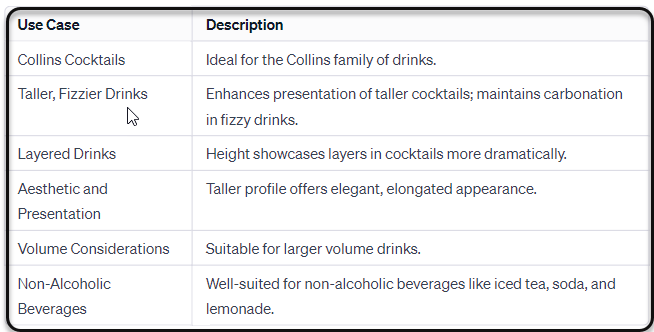
When choosing between a Collins glass and a Highball glass, the decision often hinges on the specific drink being served and the desired presentation. While these glasses are frequently interchangeable, certain situations particularly call for a Collins glass.
- Collins Cocktails: Naturally, the Collins glass is the go-to choice for the Collins family of drinks, as mentioned above.
- Taller, Fizzier Drinks: The taller and slightly narrower design of the Collins glass enhances the presentation of taller cocktails and more effectively maintains the carbonation in fizzy drinks. It’s ideal for drinks that have a higher proportion of carbonated mixers like soda water or tonic.
- Layered Drinks: The height of the Collins glass can showcase the layers in a layered cocktail more dramatically than a Highball glass.
- Aesthetic and Presentation: In some cases, the choice might simply come down to the visual appeal. A Collins glass, due to its taller profile, can make a drink appear more elegant and elongated. This can be desirable in a formal setting or if you’re aiming for a specific visual presentation.
- Volume Considerations: If a recipe calls for a larger volume that fits better in a taller glass, a Collins glass would be the preferred choice over a Highball glass.
- Non-Alcoholic Beverages: The Collins glass, much like the Highball glass, serves well for non-alcoholic beverages such as iced tea, soda, and lemonade. This preference for larger servings makes the use of the Collins glass particularly advantageous.
In summary, people often choose the Collins glass for its aesthetic appeal in presenting taller, carbonated, or layered drinks, as well as for serving traditional Collins cocktails. Its versatility adds to the visual experience of these beverages.

Buchanan’s Pineapple: A Tropical Twist on Scotch Whisky.
Blending scotch Whisky
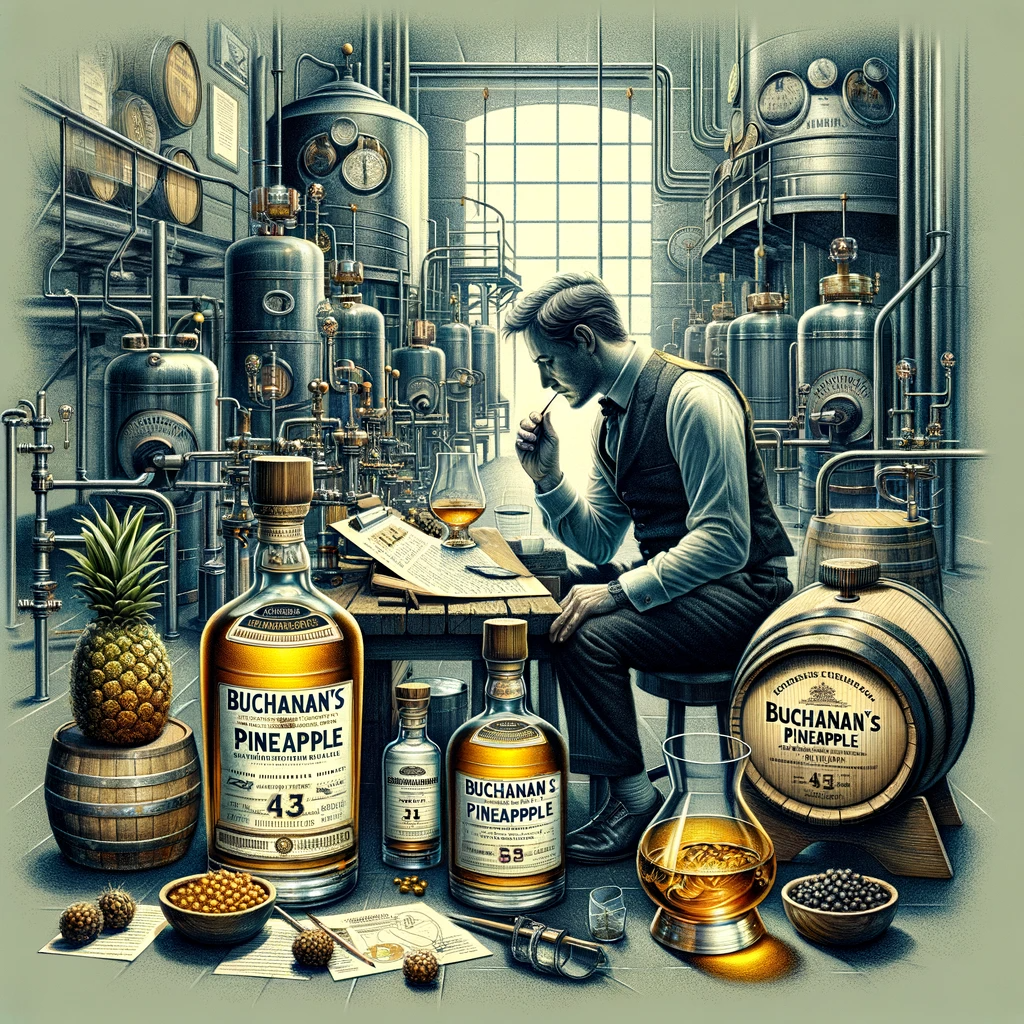
If you’re someone who admires the craftsmanship of a master distiller in producing a fine batch of whiskey, then you’ll likely find the skills of a master blender equally fascinating, particularly with creations like Buchanan’s Pineapple.
Blending Scotch, such as Buchanan’s Pineapple, requires a remarkable level of skill and expertise. This process involves intricately mixing various single malts and grain whiskies to craft exceptional blends. The master blender’s understanding goes beyond just knowing how different whiskies will blend; it delves into how they will age and evolve together over time.
Master blenders play a pivotal role in shaping the final flavor profile of a blend. Consider the precision required in blending: taking three individually perfect batches of whisky and combining them. If not done with expertise, the resulting flavor profile could miss the mark entirely, producing an unpleasant taste instead.
For a brand that boasts unique offerings like Buchanan’s Pineapple, ensuring that each blend matches the expected flavor profile is crucial. A misstep here can lead to disappointed customers and potentially damage the brand’s reputation. Thus, achieving a consistent and characteristic flavor profile is not just a process but an art form, mastered by these skilled blenders.
Buchanan’s History
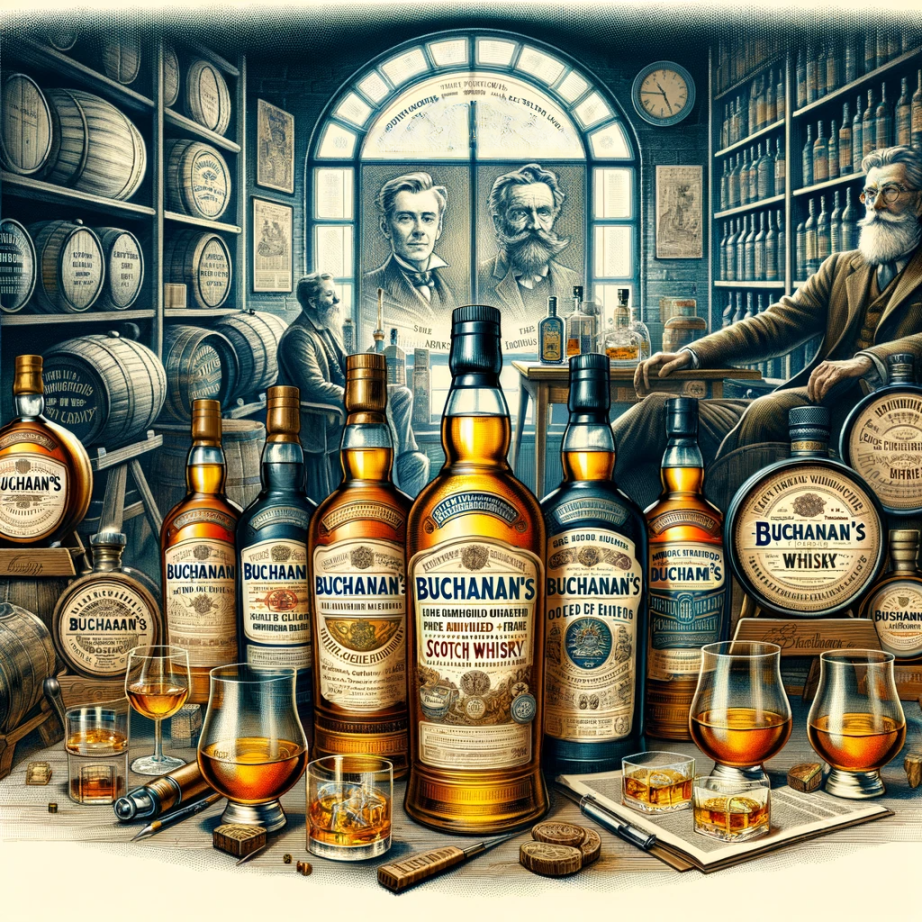
One brand who specialize in blended scotch whisky is Buchanan’s. Their portfolio showcases a range of quality blended scotch whiskies that have their own distinctive flavor. The brand is focused on creating high-quality blends.
Buchanan’s has a long history dating back to the 19th century. It was founded by James Buchanan. James Buchanan was a scotch whisky merchant. As a brand, Buchanan’s doesn’t operate a dedicated single distillery.
Their blended scotch whisky is crafted from a variety of single malt and grain whiskies from a selected range of sources within Scotland’s whisky producing regions. The blending approach allows a consistent profile across batches and years. It’s a common blending approach in the production of scotch whisky.
Originally, James Buchanan sourced whisky from different distilleries to create his unique blends. His dedication to crafting high quality blends is why his blends were smooth and flavorful. The notoriety for Buchanan’s blended scotch whisky’s smoothness and flavor gained the brand popularity, quickly.
Production process
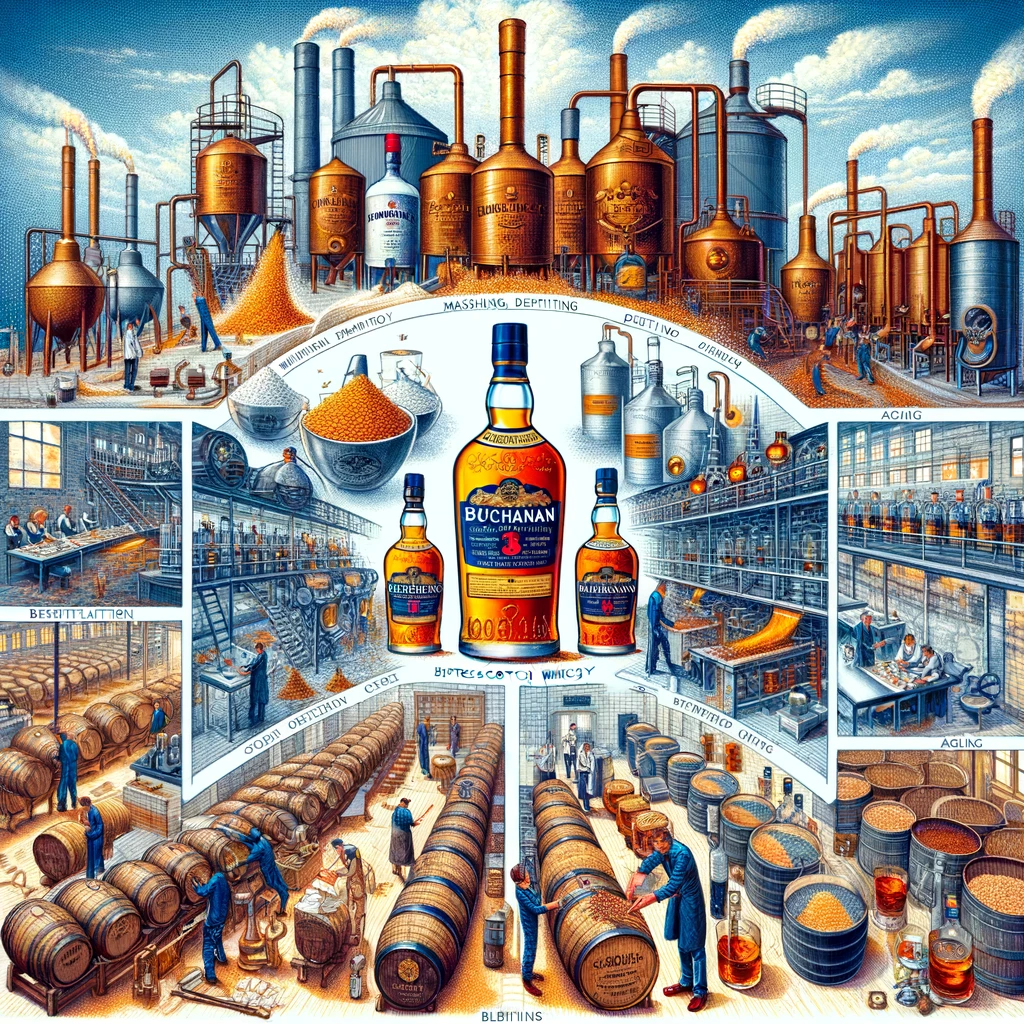
Malting, Mashing, Fermentation, and Distillation
So, we know in the production process, the single malt and grain whiskies are not crafted by Buchanan’s, they are selected from different sources from Scotland’s whisky -producing regions. The exact sources are proprietary. It is closely guarded information. So, the malting, mashing, fermentation, and distillation are being done from the selected few of Buchanan’s sources.
Aging
The aging of the single malt and grain whiskies are done at Buchanan’s sources respective housing. Each distillery will have its own methods and choice of casks for aging.
Blending
Blended Scotch whisky adheres to strict legal standards set by Scottish and international laws. In Scotland, the whiskies must comply with regulations that define what can be labeled as “Scotch whisky.” These regulations cover aspects such as the ingredients, distillation process, and aging.
Like all Scotch whiskies, blended Scotch must be aged in oak barrels for at least three years. Many blends are aged for longer periods, which contributes to the depth and richness of the final product.
The initial stages are crucial. The ones that have been chosen need to be on top of their game. Because if the source drops the ball, Buchanan’s cannot say, “we didn’t produce the whiskies, we just blend them.”
There are multiple whiskies to a blend, the master blender needs to know a lot about each whisky. I don’t know the specifics, but I am pretty sure blending whiskies is more than just dumping the whiskies in a big cauldron and wooden spoon.
Master blenders skillfully combine various whiskies to achieve a consistent and balanced flavor profile, showcasing their deep understanding of flavor and aroma.
This is where Buchanan’s expertise comes into play. The art of blending is critical in achieving a consistent flavor and quality that is characteristic of the Buchanan’s brand. The master blender must have a deep understanding and knowledge of how different whiskies will combine and mature together.
Bottling
Finally, the whisky is diluted to the desired strength, filtered, and bottled. Some whiskies may undergo chill filtration to remove certain oils and fats, which can cloud the whisky when it’s cold. The decision to chill filter depends on the brand and the desired profile of the whisky.
Buchanan’s is also known for its distinctive packaging, which often features its signature canteen-shaped bottle and a red seal, symbolizing its heritage and quality.
Buchanan’s Pineapple Blend
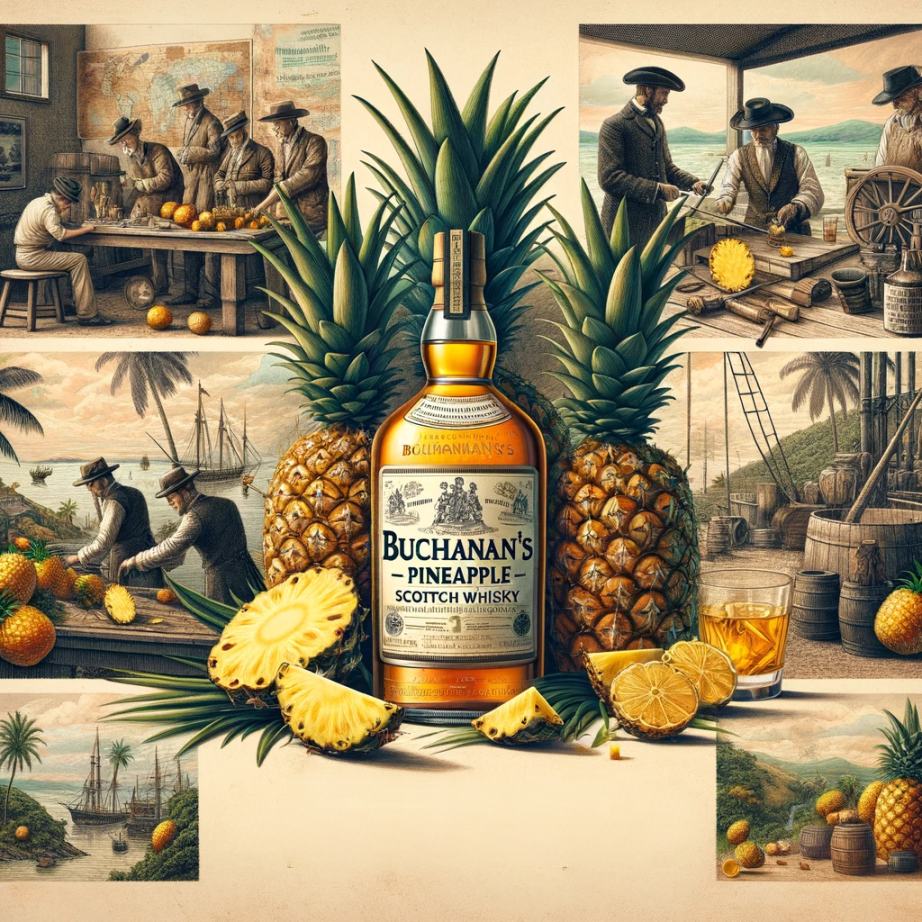
Buchanan’s Pineapple is a unique blend of pineapple, citrus notes, and Buchanan’s renowned Scotch whisky offers a fresh twist to traditional whisky.
The addition of pineapple flavor to the whisky creates a sweet and fruity taste that is perfect for those who enjoy a sweeter whisky.
Origins of Pineapple Infusion
The history of pineapple-infused whisky dates back centuries, when explorers and traders introduced distillation techniques to countries where pineapples were abundant. The fruit’s unique flavor profile made it an ideal ingredient for infusing into spirits, giving birth to the creation of pineapple-infused whiskies. The infusion process involves soaking the pineapple in whiskey for a period of time, allowing the flavors to meld together.
Buchanan’s has an impressive lineup and Buchanan’s Pineapple blended scotch whisky is an exciting addition. It’s another fine blend with high-quality ingredients.
Buchanan’s Pineapple Scotch whisky is a testament to the evolving world of whisky, where traditional flavors meet modern tastes. A bold move in the whisky world, blending traditional and modern tastes. Catering to both whisky enthusiasts looking for something different and new drinkers seeking a more accessible entry point into the world of Scotch.
Buchanan’s Pineapple Production Process
To create the unique flavor of Buchanan’s Pineapple, a carefully orchestrated production process is followed. This process involves selecting the finest pineapples and using infusion techniques to create a spirit that captures the essence of pineapple in every sip.
Pineapple Selection
The first step in the production process is selecting the finest pineapples. These pineapples are handpicked at their peak ripeness to ensure the best flavor. Only the highest quality pineapples are used to create Buchanan’s Pineapple blended scotch whisky.
Infusion Techniques
After carefully choosing the pineapples, integrate them into the whisky to give Buchanan’s Pineapple its distinct taste. This infusion method entails incorporating the pineapple into the whisky and permitting it to steep for a certain duration. During this time, the pineapple’s flavors permeate the whisky, resulting in a spirit that is both smooth and rich in flavor.
The infusion process is carefully monitored to ensure that the flavor of the pineapple is perfectly balanced with the whisky. This attention to detail ensures that every bottle of Buchanan’s Pineapple has a consistent and delicious flavor.
Buchanan’s Pineapple Tasting Notes
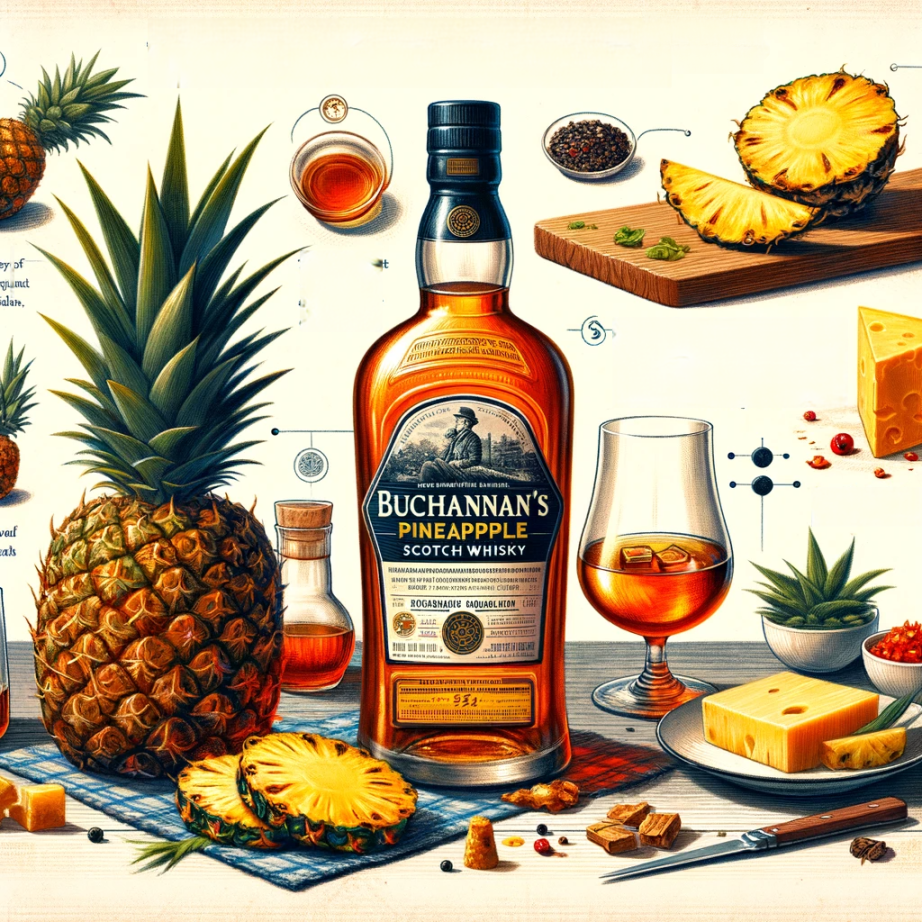
- Primary Flavors: The predominant flavor is the sweet and tangy taste of pineapple, blended with the traditional smoky and malty notes of Scotch whisky.
- Aroma: Expect a fragrant bouquet that combines the fruity sweetness of pineapple with the subtle, peaty undertones typical of Scotch.
- Palate and Finish: On the palate, it should offer a smooth, slightly sweet experience with a blend of fruity pineapple and the classic warmth of whisky. The finish might include a lingering sweetness with a hint of Scotch whisky’s traditional smokiness.
Pairing Suggestions
Buchanan’s Pineapple is a versatile drink that can be enjoyed on its own or in a variety of cocktails. Its unique flavor profile makes it an excellent choice for pairing with a variety of foods. Here are some suggestions:
Grilled Pineapple: The sweet and tangy notes of grilled pineapple complement the flavors of Buchanan’s Pineapple perfectly. The smoky flavor of the grilled pineapple adds depth to the drink, making it a perfect pairing for a summer barbecue.
Spicy Foods: The sweetness of Buchanan’s Pineapple balances the heat of spicy foods, making it a perfect pairing for dishes like spicy chicken wings, tacos, or curries.
Cheese: The sweetness of the whisky pairs well with sharp and salty cheeses like cheddar or gouda. The combination of flavors creates a unique and delicious taste experience.
Tips for purchasing Buchanan’s Blended Scotch Whisky
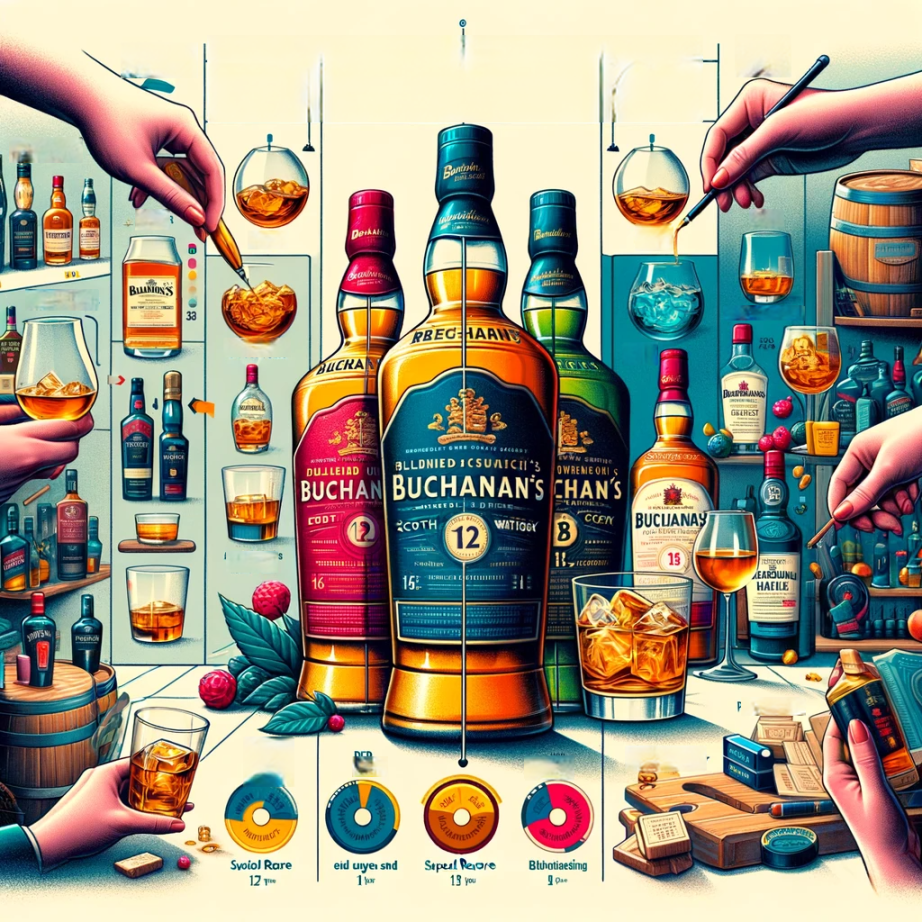
When buying Buchanan’s blended Scotch whisky, there are several factors to consider to ensure you get good value for your money:
-
Understanding the Brand:
Buchanan’s is a midrange blended Scotch under the Diageo group. Their blends are known for being sweeter and smoother, catering to a broad range of palates.
2. Choosing the Right Variant:
Buchanan’s offers several types of Scotch, each with its own flavor profile and age statement. For instance,
- Buchanan’s DeLuxe Aged 12 Years is noted for its affordability and versatility, suitable for drinking neat, on the rocks, or in cocktails. It has notes of vanilla, caramel, floral, and citrus flavors.
- Buchanan’s Special Reserve Aged 18 Years, on the other hand, is smoother with more caramel and citrus notes.
Other varieties include:
- Buchanan’s Red Seal,
- Select 15 Years Old Blended Malt, and
- Master Blended Scotch Whisky.
Here is a table that shows Buchanan’s different expressions plus the expressions flavor profile.

-
Price Points:
Prices vary depending on the variant. For instance, the DeLuxe Aged 12 Years usually costs under $40 for a 750-mL bottle, while the Special Reserve Aged 18 Years and Red Seal are pricier. It’s important to balance your budget with the type of Scotch experience you’re looking for.
This table shows the bottle size and price range.

-
Drinking Preferences:
Consider how you prefer to enjoy your Scotch. Buchanan’s is versatile and can be enjoyed in various ways – neat, on the rocks, or in cocktails. Classic cocktail options include Highballs, Rob Roys, or Rusty Nails.
5. Gift Option:
Buchanan’s 12 Year Old is a good option for gifting due to its high quality and affordability. It has a complex flavor profile that appeals to both new Scotch drinkers and connoisseurs.
6. Where to Buy:
Generally, blended Scotch is more affordable and widely available than single malt Scotch. Buchanan’s can be purchased from:
- Major retailers like Walmart, CVS, or Walgreens.
- Grocery stores, not all but, if you happen to shop at Kroger, Safeway, or Food 4 Less. You can check on a bottle the next time you go to the grocery store.
- Online retailers, there are many to choose from. For instance, Drizly, Caskers, Instacart.
- .Walking-in will most likely be the cheapest route. The recommendation is to call the location to inquire about Buchanan’s Pineapple Scotch Whisky. If it is not available, you’ll save yourself a trip.
Ideal Serving Conditions
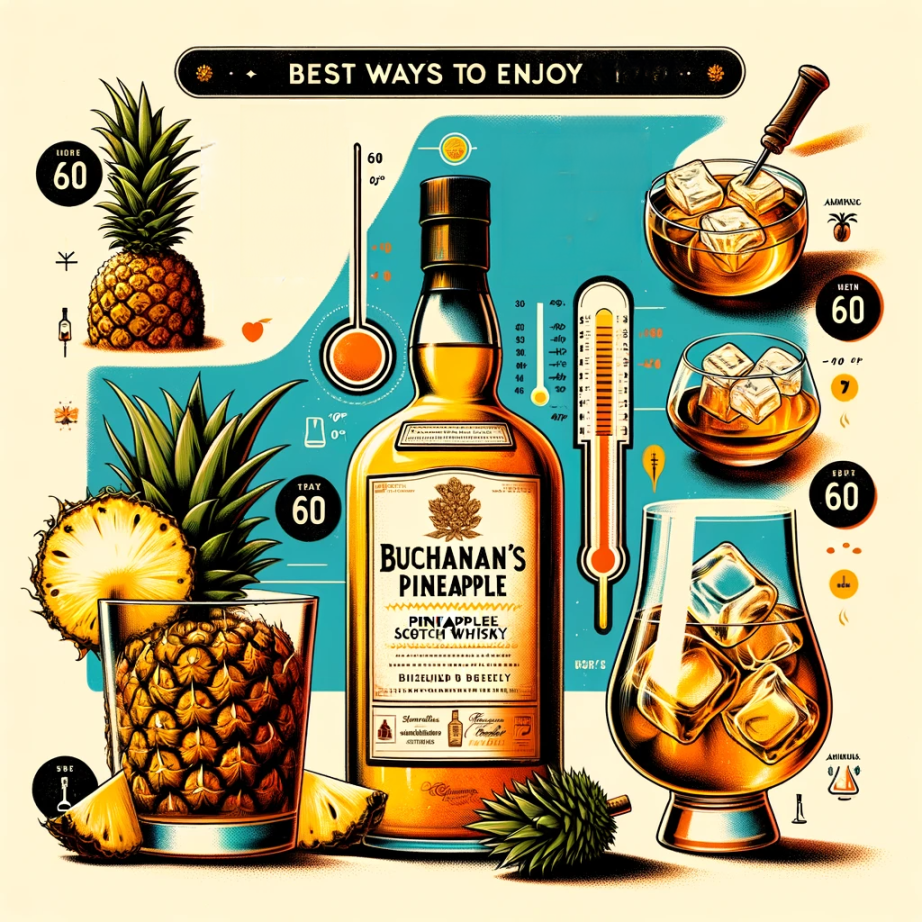
Enjoy Buchanan’s Pineapple best over ice or in cocktails, served ideally between 60-65°F. This temperature range helps fully appreciate the whisky’s flavors without the chill or heat overwhelming them.
Serve Buchanan’s Pineapple in a whiskey glass with a wide mouth to fully appreciate its aroma, enhancing the overall drinking experience.
Cocktail Recipes
You can use Buchanan’s Pineapple in a variety of cocktails, thanks to its versatility as a whisky. Here are a few recipes to try:
Pineapple Old Fashioned
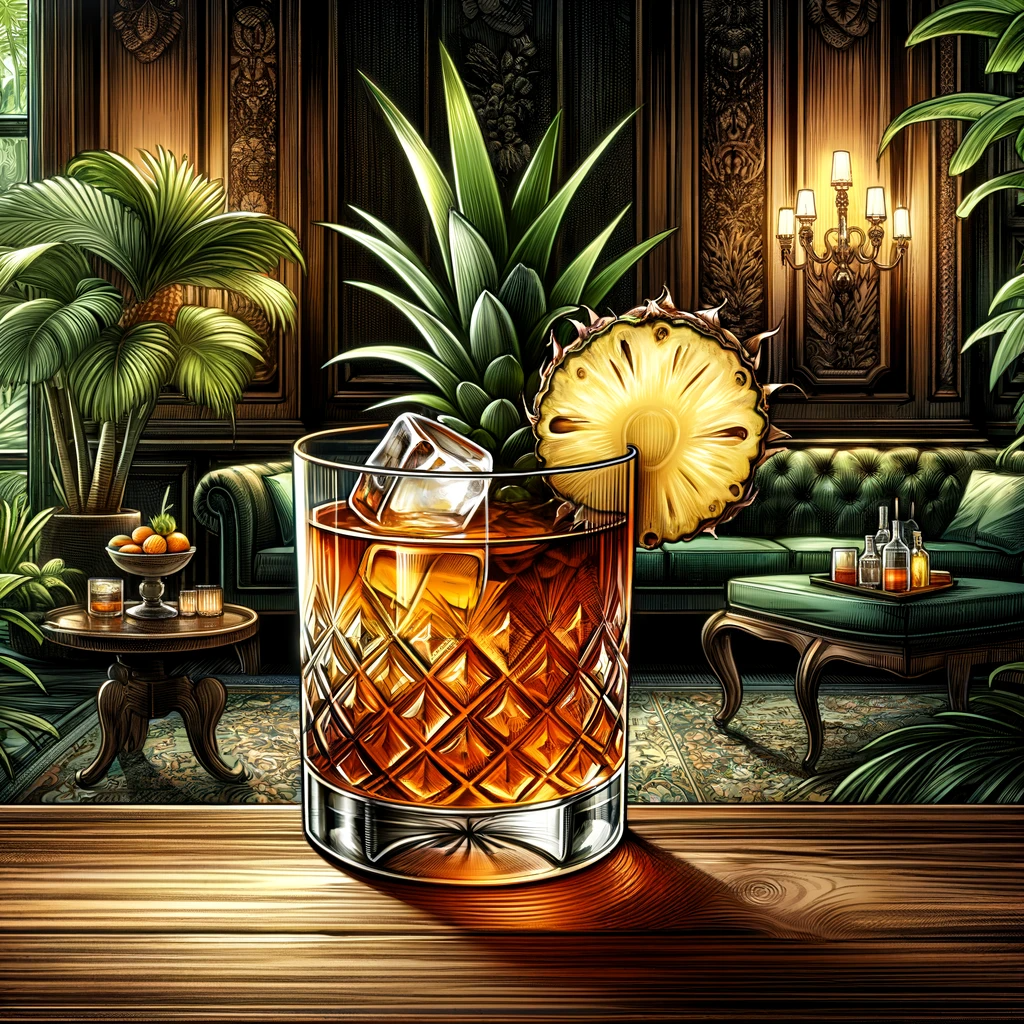
Ingredients
- 2 oz Buchanan’s Pineapple
- 1/2 oz simple syrup
- 2 dashes Angostura bitters
- 1 slice of fresh pineapple
Instructions
- Prepare the Glass: Start by placing a sugar cube in an Old Fashioned glass, or pour in 1/2 oz of simple syrup.
- Add Bitters: Add 2-3 dashes of Angostura bitters.
- Muddle: If using a sugar cube, muddle it with the bitters until it’s mostly dissolved. If you’re using simple syrup, just stir it with the bitters to combine.
- Add Scotch: Pour 2 oz of Buchanan’s Pineapple Scotch into the glass.
- Add Ice: Fill the glass with large ice cubes. The larger the cubes, the slower they melt, reducing dilution.
- Stir Gently: Stir the mixture gently in the glass. The goal is to chill the drink and combine the ingredients without diluting it too much.
- Garnish: Garnish with an orange twist or a pineapple slice. The orange twist will add a citrus aroma, while the pineapple slice can enhance the tropical character of the drink.
- Serve: Serve the cocktail immediately.
Rob Roy

Ingredients:
- 2 oz Buchanan’s Pineapple Scotch
- 3/4 oz Sweet Vermouth
- A dash of Angostura Bitters
- Ice
- Maraschino cherry or a twist of orange peel for garnish
Instructions:
- Chill the Glass: Start by chilling your cocktail glass. You can do this by filling it with ice water and setting it aside while you prepare the drink.
- Mix the Drink:
- In a mixing glass, combine 2 ounces of Buchanan’s Pineapple Scotch, 3/4 ounce of sweet vermouth, and a dash of Angostura bitters.
- Add a handful of ice to the mixing glass.
- Stir: Stir the mixture gently for about 30 seconds. Stirring, as opposed to shaking, will chill the drink without diluting it too much and will maintain the clarity of the cocktail.
- Prepare the Glass: Discard the ice water from your cocktail glass and strain the cocktail into the glass.
- Garnish: Garnish with a maraschino cherry or a twist of orange peel. The citrus aroma complements the pineapple flavor of the Scotch nicely.
- Serve: Serve immediately and enjoy responsibly.
Pineapple Margarita

Ingredients
- 2 oz Buchanan’s Pineapple Scotch
- 1 oz Fresh Lime Juice
- 1/2 oz Triple Sec or Cointreau
- 1/2 oz Simple Syrup or Agave Syrup
- Fresh Pineapple Juice (optional, for added pineapple flavor)
- Salt for the rim (optional)
- Lime wedge and Pineapple slice for garnish
Instructions
- Prepare the Glass: If you’re using salt on the rim, start by running a lime wedge around the rim of the glass and then dipping it in salt. Set the glass aside.
- Combine Ingredients:
- In a shaker, combine 2 ounces of Buchanan’s Pineapple Scotch, 1 ounce of fresh lime juice, 1/2 ounce of Triple Sec or Cointreau, and 1/2 ounce of simple syrup or agave syrup.
- If you desire a stronger pineapple flavor, add a splash of fresh pineapple juice.
- Shake: Add ice to the shaker. Shake the mixture vigorously for about 15-20 seconds to chill and dilute the drink properly.
- Fill the Glass with Ice: Add fresh ice to your prepared glass.
- Strain and Serve: Strain the cocktail into the glass over the ice.
- Garnish: Garnish with a lime wedge and a slice of pineapple.
- Enjoy: Serve immediately and enjoy your Pineapple Scotch Margarita.
Rusty Nail
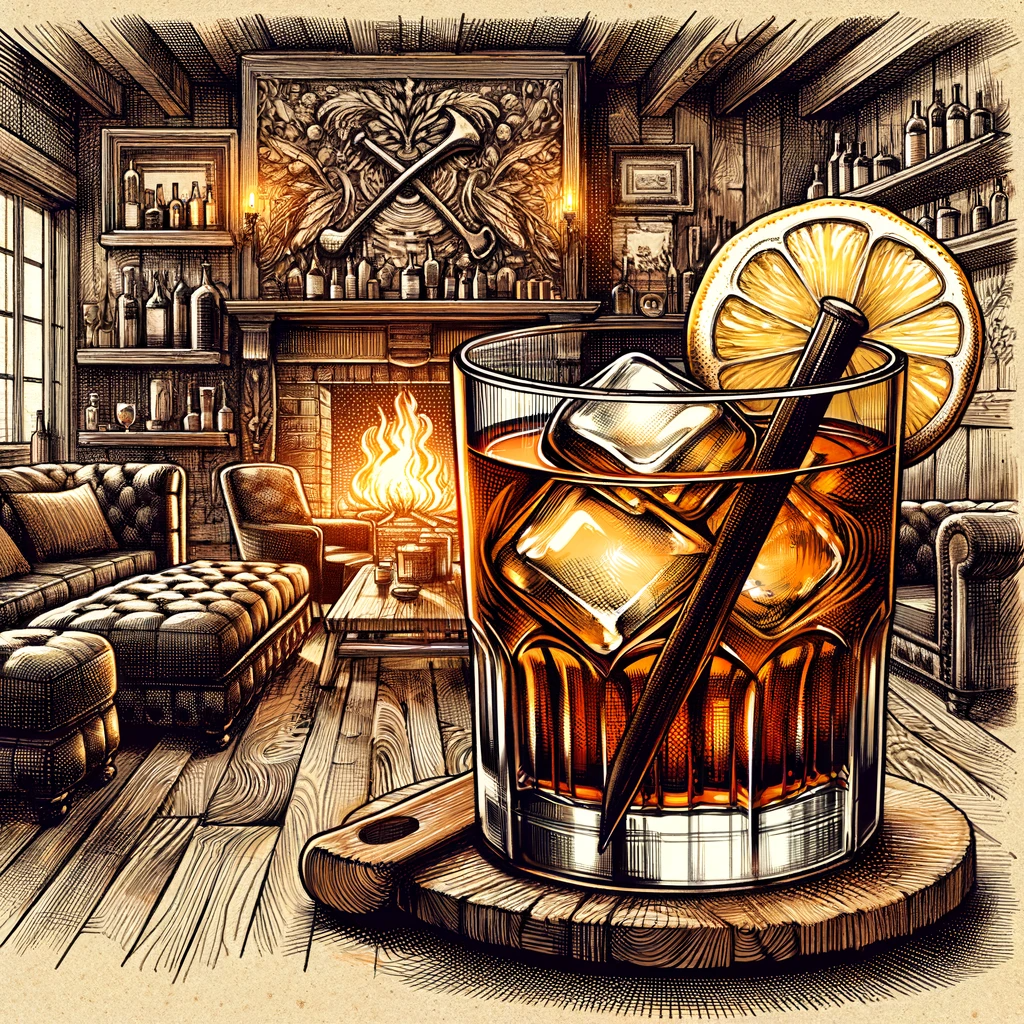
Ingredients:
- 2 oz Buchanan’s Pineapple Scotch
- 1/2 oz Drambuie
- Ice
- Lemon twist or pineapple slice for garnish (optional)
Instructions:
- Fill the Glass with Ice: Add ice to an old-fashioned glass or a small tumbler to cool the glass.
- Add the Ingredients:
- Pour 2 ounces of Buchanan’s Pineapple Scotch over the ice.
- Add 1/2 ounce of Drambuie.
- Stir: Stir the mixture gently in the glass. This combines the Scotch and Drambuie while chilling the drink. The goal is to cool the drink and meld the flavors without diluting it too much.
- Garnish: Garnish with a lemon twist or a small slice of pineapple. The lemon twist adds a hint of citrus aroma which can complement the pineapple flavor, while a pineapple slice would enhance the tropical character of the drink.
- Serve: Serve the cocktail immediately.
Highball Cocktail
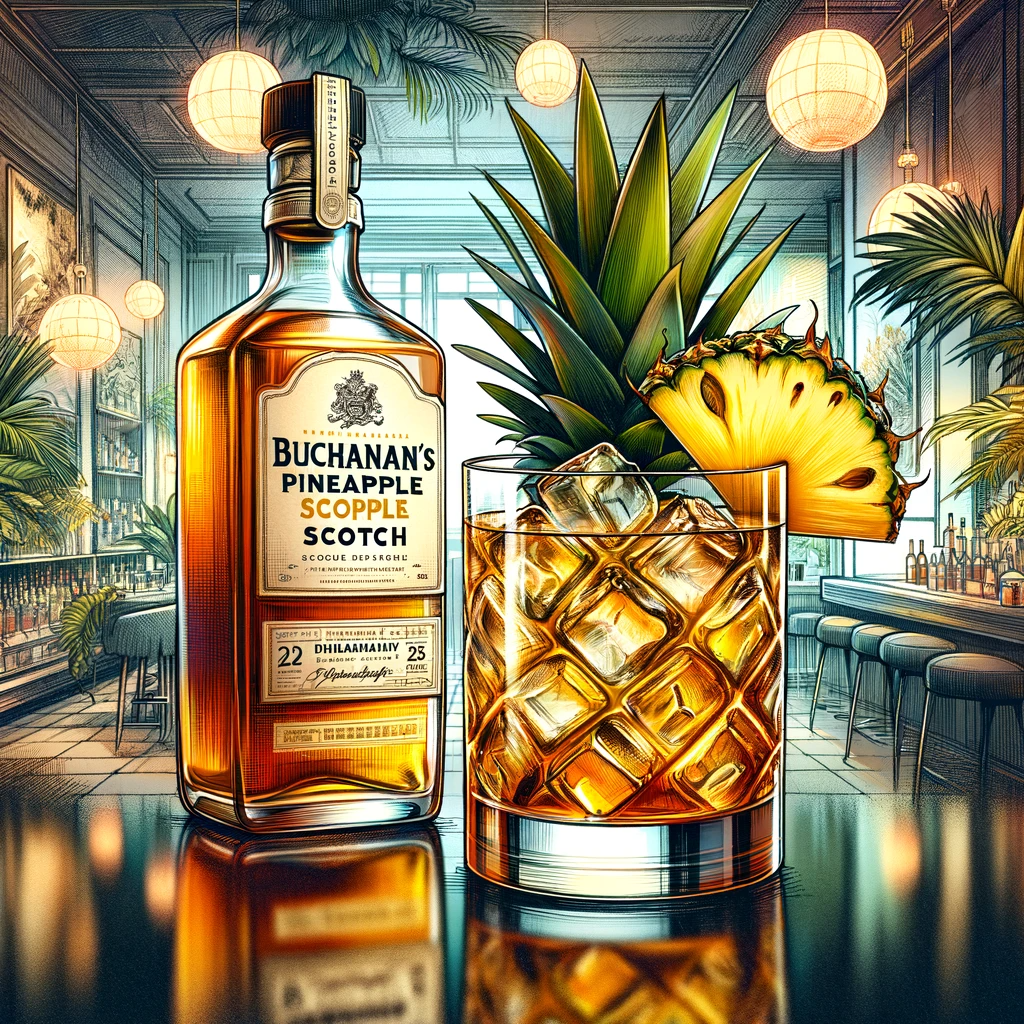
Ingredients:
- 2 oz Buchanan’s Pineapple Scotch
- 4 to 6 oz Club Soda or Sparkling Water (adjust to taste)
- Ice
- Lemon or lime wedge for garnish (optional)
Instructions:
- Chill the Glass: Start by chilling your highball glass. You can do this by putting the glass in the freezer for a few minutes or filling it with ice water while you prepare the ingredients.
- Add Ice: Fill the chilled highball glass with ice cubes. The ice should come near the top of the glass.
- Pour the Scotch: Measure and pour 2 ounces of Buchanan’s Pineapple Scotch over the ice.
- Add Club Soda: Slowly pour 4 to 6 ounces of club soda or sparkling water into the glass. Adjust the ratio of Scotch to soda based on your preference. More soda will make a lighter, more refreshing drink, while less soda will allow the flavors of the Scotch to be more prominent.
- Stir Gently: Give the drink a gentle stir to mix the Scotch and soda. It’s important to stir gently to retain as much carbonation as possible.
- Garnish: Garnish with a lemon or lime wedge. The citrus provides a nice aromatic contrast to the sweet, tropical notes of the pineapple Scotch.
- Serve: Serve immediately and enjoy. A highball is a perfect drink for sipping and socializing, especially in warm weather.
Think of recipes as just a starting point. Feel free to experiment with your own combinations of flavors to find your perfect drink.
Frequently Asked Questions

What is the price range for Buchanan’s Pineapple across different retailers?
The price range for Buchanan’s Pineapple varies depending on the retailer and location. However, on average, a 750ml bottle of Buchanan’s Pineapple can cost between $30 and $40. It is always recommended to check with your local liquor store or online retailer for the most up-to-date prices.
Can you provide a classic recipe that includes Buchanan’s Pineapple?
Certainly! One classic recipe that includes Buchanan’s Pineapple is the Pineapple Sour. To make this cocktail, you will need:
- 2 oz Buchanan’s Pineapple
- 1 oz fresh lemon juice
- 1 oz pineapple juice
- 1/2 oz simple syrup
- Pineapple wedge and cherry for garnish
Add all the ingredients into a shaker filled with ice. Shake well and strain into a glass filled with ice. Garnish with a pineapple wedge and cherry. Enjoy!
Where can I find Buchanan’s Pineapple Scotch in stores?
Buchanan’s Pineapple is a limited edition Scotch whisky, so it may not be available in all stores. It is best to check with your local liquor store or online retailer to see if they carry it. You can also use the “Find Near You” feature on the Buchanan’s website to locate stores near you that carry Buchanan’s Pineapple.
What are the tasting notes and flavor profile of Buchanan’s Pineapple?
Buchanan’s Pineapple is a smooth and sweet Scotch whisky with tropical fruit flavors. It has notes of pineapple, vanilla, and caramel, with a hint of oak and smoke. The finish is long and fruity, with a touch of spice. Overall, it is a well-balanced and enjoyable whisky.
Is Buchanan’s Pineapple edition a permanent addition to their product line?
No, Buchanan’s Pineapple is a limited edition Scotch whisky. It was introduced in 2019 as a summer release and may not be available year-round. However, it is always possible that Buchanan’s may decide to bring it back in the future.
What is the alcohol content in Buchanan’s Pineapple whisky?
Buchanan’s Pineapple has an alcohol content of 40% ABV (80 proof), which is standard for Scotch whisky. As always, it is important to drink responsibly and in moderation.
Ketel One Vodka Price and Excellence Explored, Savor the Spirit
Are you considering buying a bottle of Ketel One? Then you are going to need to know what Ketel One Vodka Price is. Ketel One is a premium vodka brand that is distilled using pot stills and marketed as a gin-like product. It’s known for its smooth and crisp taste, making it a popular choice for those who enjoy vodka.
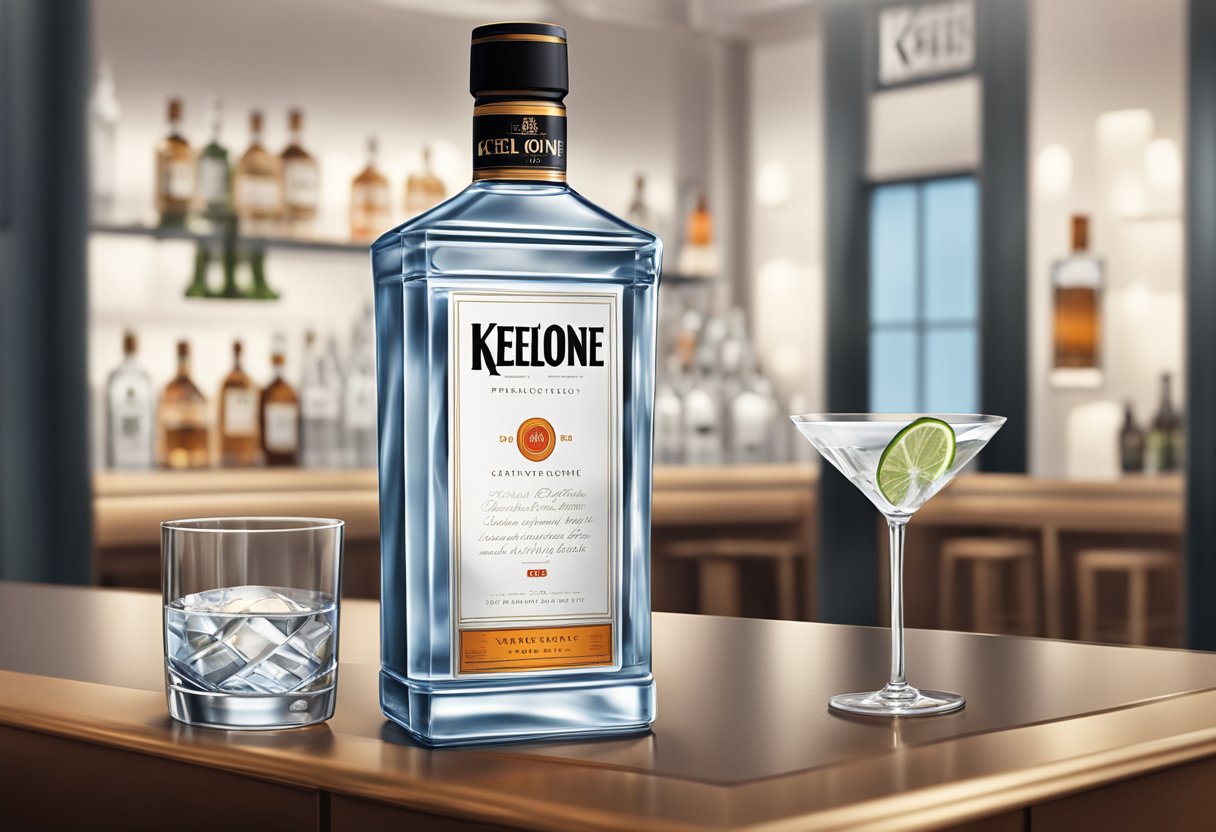
Ketel One Vodka price, of course is going vary on the size of the bottle. And walking into a local brick and mortar is going to be the cheapest route. However, if you’re deciding to go with an online retailer for the convenience, Caskers offers a 750 ml bottle of Ketel One for $23.99. If you want to go bigger, $37.99 will get you a 1L bottle. Although, you can also find Ketel One in 1.75L bottles, which can cost up to $50.
You could potentially discover a more favorable deal through Instacart, as it collaborates with numerous local retailers in a consumer’s vicinity. Consequently, the availability of retailers is contingent on your geographical location. Moreover, the price of Ketel One Vodka varies based on the pricing strategies of individual retailers. It’s important to compare prices to secure the most advantageous offer. For further information about Instacart, click here.
History of Ketel One Vodka
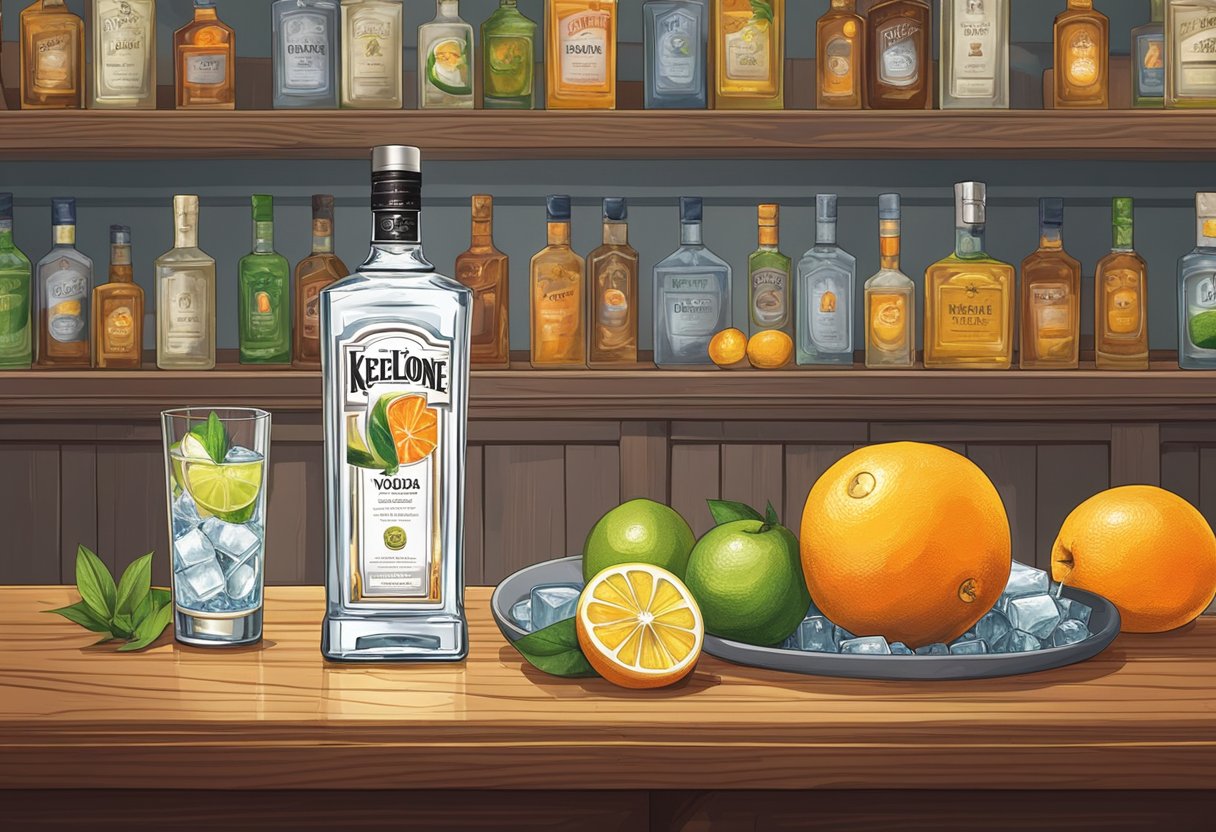
Brand Origins
Ketel One Vodka has a rich history that dates back to 1691 when the Nolet family started producing spirits in Schiedam, Amsterdam, Netherlands. The family’s patriarch, Joannes Nolet, was a French refugee who founded the Dutch distillery. The company initially produced jenever, which is gin’s forefather, and has remained in the family for centuries. Joannes worked hard to make a mark in the country, and his dedication and passion for quality spirits passed down to his descendants.
The name “Ketel One” comes from the original copper pot still, “Distilleerketel #1,” which the family used to produce their vodka. The Nolet family’s commitment to quality and innovation has made Ketel One Vodka a favorite amongst passionate connoisseurs worldwide.
Evolution Over Time
Over the years, Ketel One Vodka has undergone several changes to meet the demands of the market. The family-owned distillery has evolved from producing jenever to creating vodka that is distilled from 100% wheat in copper pot stills. The vodka is then filtered over loose charcoal and rests in tile-lined tanks until ready.
Ketel One Vodka has become a household name, and its popularity has led to the creation of several flavored versions of the spirit, including Citroen, Oranje, and Peach & Orange Blossom. The brand has also expanded its product line to include Ketel One Botanicals, which are infused with natural botanicals and are perfect for those who prefer a lighter, more refreshing drink.
Another online retailer, Flaviar, offers the flavored versions of the spirit. They currently do not offer the traditional Ketel One, but you will find a selection of their flavored vodkas. Flaviar is more of a Whiskey and Premiere Spirits club. You may find deals, but the deals and savings are reserved for their members. But a 750 ml bottle of any of Ketel One’s flavored vodka for $23.99.
Currently Flaviar offers Citroen, Oranje, Peach & Orange Blossom, Botanical Cucumber & Mint, and/or Botanical Grapefruit & Rose Vodka.
Despite the changes, the Nolet family has remained committed to producing high-quality spirits that reflect their passion for distilling. Today, Ketel One Vodka is a brand that is synonymous with quality, innovation, and excellence.
Influencing Ketel One Vodka Price
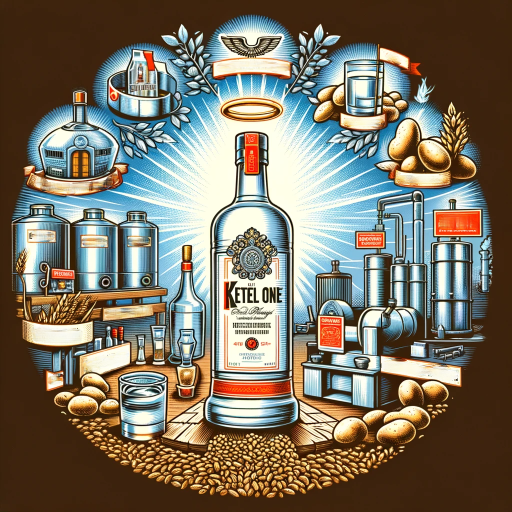
The key to making sure that you are getting your money’s worth, is to understand the factors that influence the price of vodka.
Factors Influencing Price
The following are some of the factors that can influence the price of vodka:
- Brand Prestige: Renowned vodka brands, like Ketel One, known for their exceptional quality and taste, often command higher prices due to their established brand recognition and esteemed reputation.
- Quality of Ingredients: The price of vodka can be influenced by the caliber and variety of ingredients used in its production. For instance, vodka crafted from premium grains or potatoes typically costs more than those made from ingredients of lesser quality.
- Production Method: The method of distillation plays a significant role in determining the price of vodka. Brands that utilize extensive distillation or filtration techniques may have higher prices, reflecting the extra time and resources invested in their production.
- Packaging and Promotion: The design and marketing of a vodka bottle can also contribute to its cost. Bottles featuring distinctive designs or innovative packaging, as well as those backed by substantial marketing efforts, tend to be priced higher.
Production Process
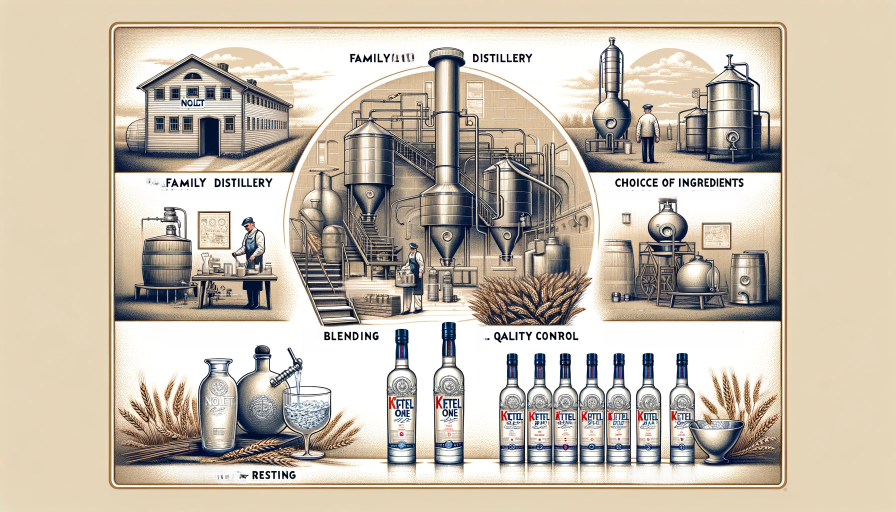
Ketel One Vodka Varieties
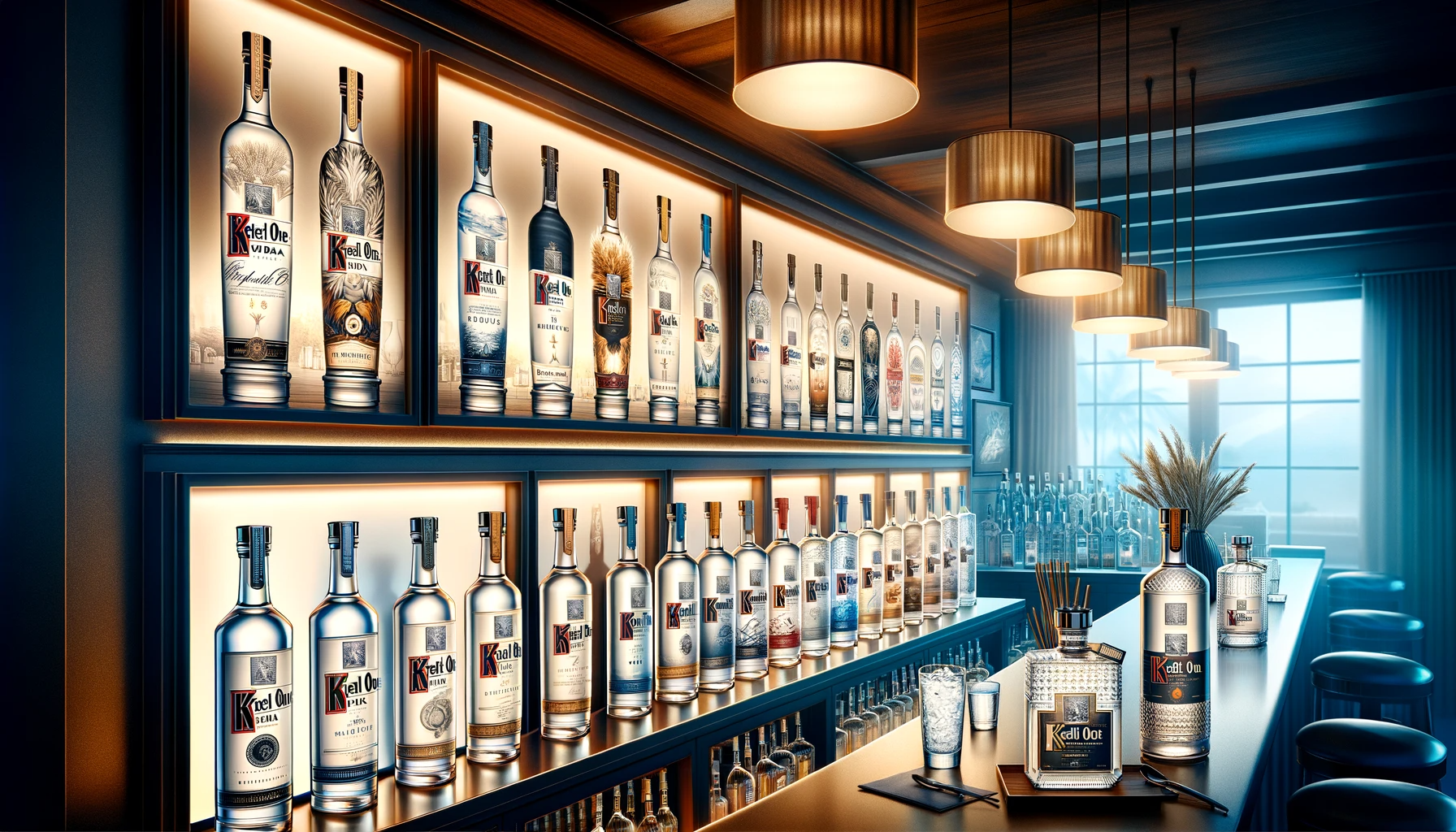
Ketel One Vodka is a premium vodka brand that has been around for over 300 years. They offer a range of vodka varieties that cater to different tastes.
Flavored Varieties
Ketel One offers a range of flavored vodkas that are perfect for those who want to add a twist to their cocktails. The flavors include Grapefruit & Rose, Cucumber & Mint, Peach & Orange Blossom, and Botanical. These flavored vodkas are made using natural ingredients and are distilled with the same care and attention to detail as the Classic Vodka.
- Ketel One’s Grapefruit & Rose vodka has a refreshing taste that is perfect for summer cocktails.
- The Cucumber & Mint vodka has a subtle taste that pairs well with gin and tonics.
- The Peach & Orange Blossom vodka has a sweet and fruity taste that is perfect for mixing in mimosas.
- The Botanical vodka has a complex taste that is perfect for mixing in martinis.
Whether you prefer a classic vodka or a flavored variety, Ketel One has something for everyone.
Ketel One Vodka Spritz
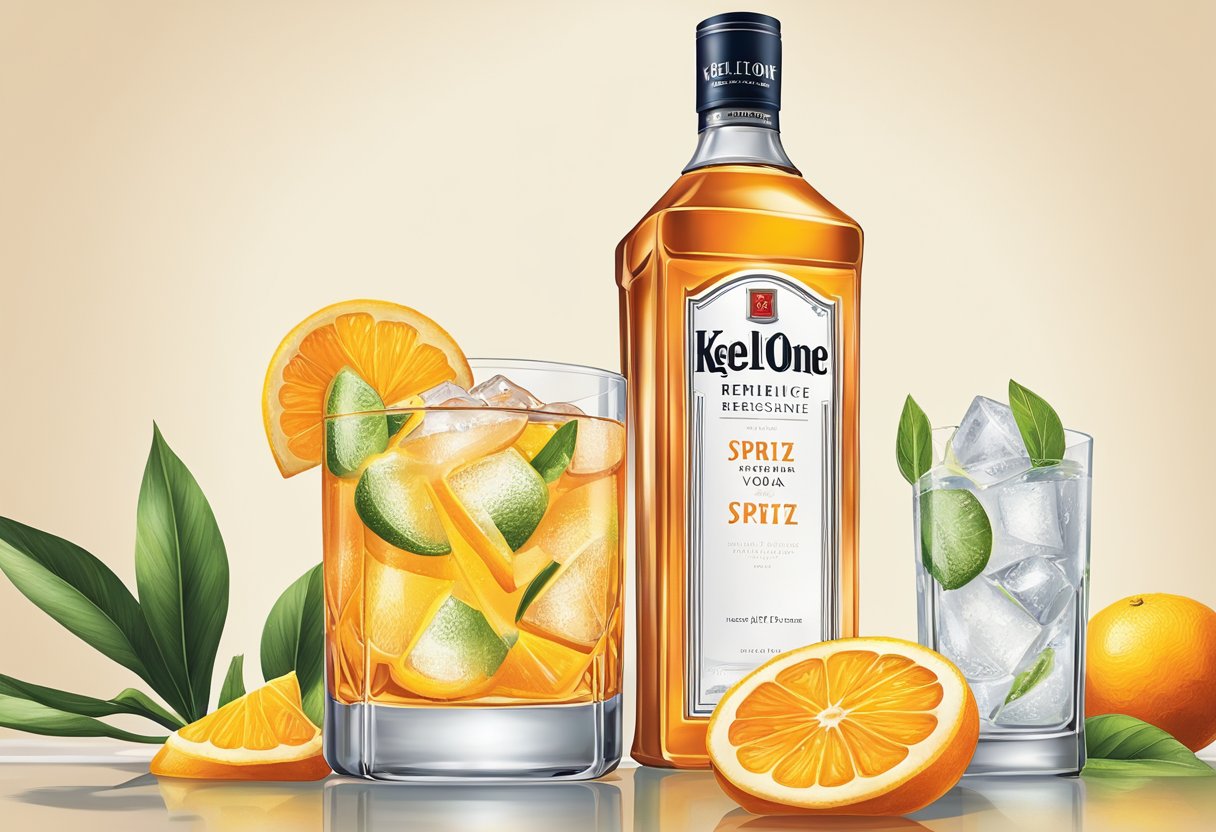
If you’re looking for a refreshing and easy-to-drink cocktail, Ketel One Vodka Spritz is worth trying. This ready-to-drink cocktail is made with Ketel One Vodka and natural flavors. Here are the product details and tasting notes to help you decide if this is the right drink for you.
Product Details
Ketel One Vodka Spritz is available in four flavors: Peach & Orange Blossom, Cucumber & Mint, Grapefruit & Rose, and Botanical. Each flavor has its unique taste and aroma, making it perfect for different occasions.
You can purchase Ketel One Vodka Spritz in two sizes: a single 12 fl. oz can or a 4-pack of 12 fl. oz cans. The suggested retail price for a single can is $3.99, and a 4-pack is $14.99. It is a perfect drink for outdoor events, picnics, and barbecues.
Tasting Notes
Ketel One Vodka Spritz is a light and refreshing drink that is perfect for hot summer days. Here are the tasting notes for each flavor:
- Peach & Orange Blossom: This flavor has a sweet and fruity aroma with a hint of citrus. The taste is a combination of peach and orange blossom with a subtle hint of vodka.
- Cucumber & Mint: This flavor has a refreshing and crisp aroma with a hint of cucumber and mint. The taste is a combination of cucumber and mint with a subtle hint of vodka.
- Grapefruit & Rose: This flavor has a citrusy and floral aroma with a hint of grapefruit and rose. The taste is a combination of grapefruit and rose with a subtle hint of vodka.
- Botanical: This flavor has a botanical and herbal aroma with a hint of juniper and citrus. The taste is a combination of botanical and herbal flavors with a subtle hint of vodka.
Tasting Notes of Ketel One Traditional
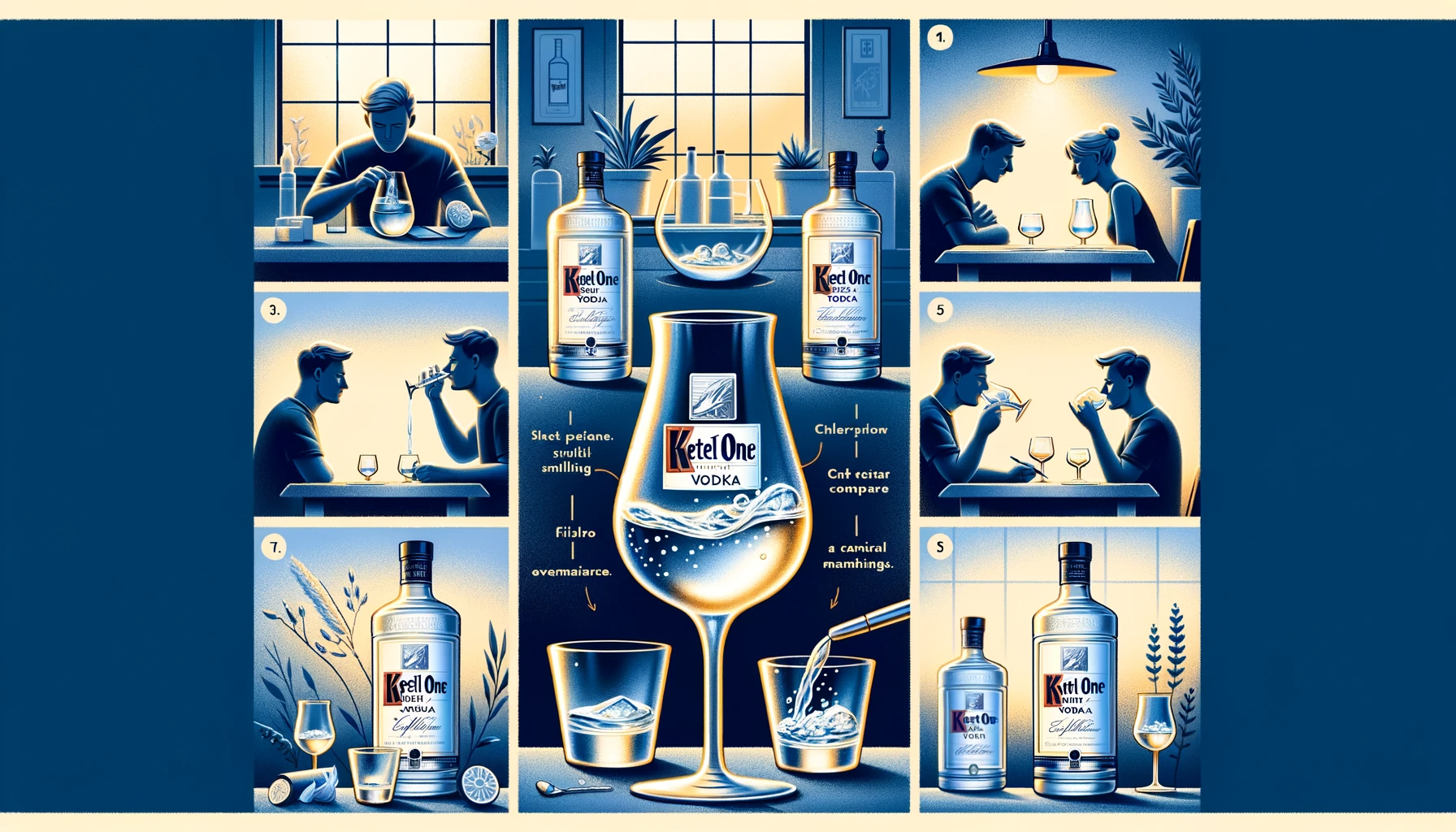
A tasting experience with Ketel One Vodka can be a delightful journey through subtle flavors and textures. Here’s a way to fully appreciate the nuances of this premium vodka:
Preparing for the Tasting
- Selecting the Right Setting: Opt for a tranquil, cozy area where distractions are minimal. Adequate lighting and an odor-free environment will help you concentrate on the vodka’s scent and flavor.
- Glassware Preparation: Choose a pristine, transparent tasting glass, preferably tulip-shaped to capture the aroma effectively. The glass should be at a neutral temperature to maintain the vodka’s inherent qualities.
Examining the Vodka
- Visual Inspection: Gently pour a modest amount of Ketel One into your glass. Notice its clarity and thickness. By swirling the glass lightly, observe the formation of legs or tears, which can indicate the levels of alcohol and sugar.
Sensing the Aroma
- Aromatic Assessment: Gently inhale near the glass to catch the initial aroma. Ketel One typically offers a sharp, clear scent with citrus notes. Swirl again and inhale, trying to pick up secondary aromas like grain or mild fruit tones.
The Tasting Process
- First Taste: Take a tiny sip and let the vodka spread across your tongue. Ketel One is recognized for its smooth, subtly sweet flavor, complemented by citrus and honey undertones.
- Enjoying the Texture: Hold the vodka in your mouth briefly, focusing on its texture, which should feel smooth and silky. Be aware of any developing tastes or intricate nuances.
- The Finish: During swallowing, observe the finish. Ketel One is known for its pure, sharp ending with minimal harshness.
Post-Tasting Reflections
- Contemplation: After you swallow, spend a moment reflecting on the aftertaste, which should be invigorating and slightly lasting, with a harmonious sweetness.
- Comparative Analysis: If available, try contrasting it with other vodka brands. Note how Ketel One differs in aspects like smoothness and flavor profile.
Optional: Modifying the Experience
- Optional Dilution: For additional exploration, consider adding a few water drops or an ice cube to your vodka. This might unveil new aromas and mellow the alcohol’s impact, revealing different flavors.
Concluding Thoughts
Engaging in a Ketel One vodka tasting involves savoring the nuances of a meticulously crafted spirit. Focus on what your senses tell you and relish the experience. Remember, taste perceptions are personal, so concentrate on what you discern and enjoy in the vodka.
Price Range and Buying Guide
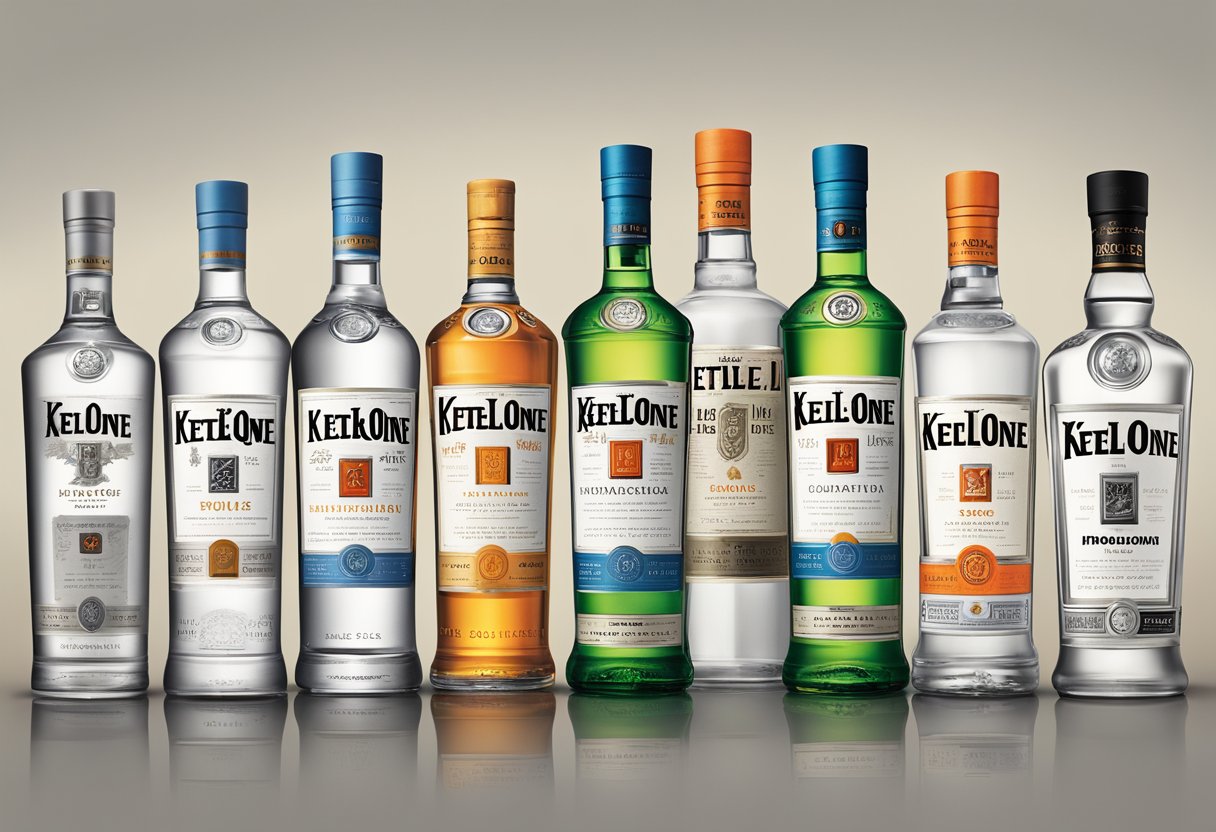
Average Retail Prices
If you’re looking for a premium vodka that won’t break the bank, Ketel One is a great option. On average, a 750ml bottle of Ketel One vodka costs between $25 and $35. For instance Caskers offers Ketel One 750ml bottle for $23.99.
If you’re looking for a larger bottle, a 1 liter bottle of Ketel One vodka typically costs between $35 and $45.
At Caskers, 1 liter is $37.99. Keep in mind that larger bottles may not be available at all stores, so be sure to check with your local liquor store or online retailer.
Where to Buy
Ketel One vodka can be found at most liquor stores, grocery stores and online retailers. Some popular options include , Drizly, Caskers and Flaviar.
In addition to physical stores and online retailers, Ketel One vodka can also be found at many bars and restaurants. If you’re interested in trying Ketel One before committing to a full bottle, consider ordering a Ketel One martini or other cocktail at your favorite bar or restaurant.
When purchasing Ketel One vodka, be sure to compare prices and shop around to find the best deal. Keep in mind that some stores may offer discounts or promotions on certain sizes or flavors of Ketel One vodka.
Overall, Ketel One vodka is a high-quality, premium vodka that is worth the investment for those who enjoy a smooth, clean taste.
Serving and Enjoyment
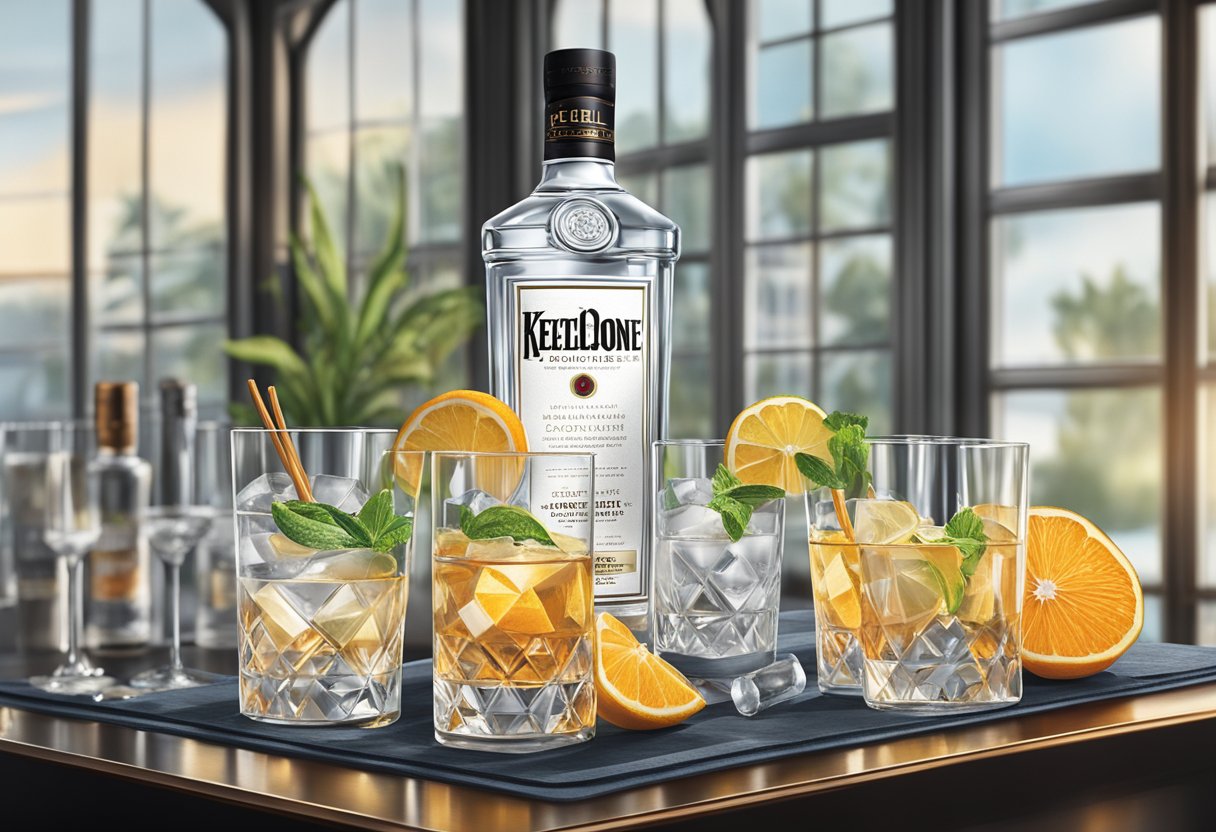
Proper Serving Techniques
When it comes to serving Ketel One Vodka, it is important to remember that it is a premium vodka that deserves to be served properly. The best way to enjoy Ketel One Vodka is by serving it chilled, straight up, or on the rocks. You can also add a splash of soda or tonic water to enhance the flavor of the vodka.
To serve it chilled, store the bottle in the freezer for a few hours before serving. The recommended serving size is 1.5 ounces, which is equivalent to one shot glass. Pour the vodka into a chilled glass and enjoy the smooth taste of Ketel One Vodka.
Cocktail Recipes
Ketel One Vodka is a versatile spirit that can be used to create a variety of cocktails. Here are a few cocktail recipes that you can try with Ketel One Vodka:
Ketel One Bloody Mary
Ingredients:
- 1.5 oz Ketel One Vodka
- 3 oz tomato juice
- 0.5 oz lemon juice
- 2 dashes Worcestershire sauce
- 2 dashes Tabasco sauce
- Salt and pepper
- Ice
- Celery stalk and lemon wedge for garnish
Directions:
- Fill a shaker with ice.
- Add Ketel One Vodka, tomato juice, lemon juice, Worcestershire sauce, Tabasco sauce, salt, and pepper to the shaker.
- Shake well and strain into a glass filled with ice.
- Garnish with a celery stalk and lemon wedge.
Ketel One Martini
Ingredients:
- 2.5 oz Ketel One Vodka
- 0.5 oz dry vermouth
- Ice
- Lemon twist or olives for garnish
Directions:
- Fill a shaker with ice.
- Add Ketel One Vodka and dry vermouth to the shaker.
- Shake well and strain into a chilled martini glass.
- Garnish with a lemon twist or olives.
Ketel One Cosmopolitan
Ingredients:
- 1.5 oz Ketel One Vodka
- 0.5 oz triple sec
- 0.5 oz lime juice
- 1 oz cranberry juice
- Ice
- Lime wedge for garnish
Directions:
- Fill a shaker with ice.
- Add Ketel One Vodka, triple sec, lime juice, and cranberry juice to the shaker.
- Shake well and strain into a chilled martini glass.
- Garnish with a lime wedge.
These are just a few examples of the many cocktails you can make with Ketel One Vodka. Experiment with different ingredients and find your own favorite recipe.
If you’re looking for a quick and easy way to enjoy these classic cocktails at home, Ketel One has launched a line of ready-made cocktails that includes the Cosmopolitan and the Espresso Martini.
The Ketel One Cosmopolitan is a classic cocktail is made with Ketel One vodka, cranberry juice, and triple sec. The Ketel One Espresso Martini is a coffee-flavored cocktail is made with Ketel One vodka and coffee
Responsible Drinking
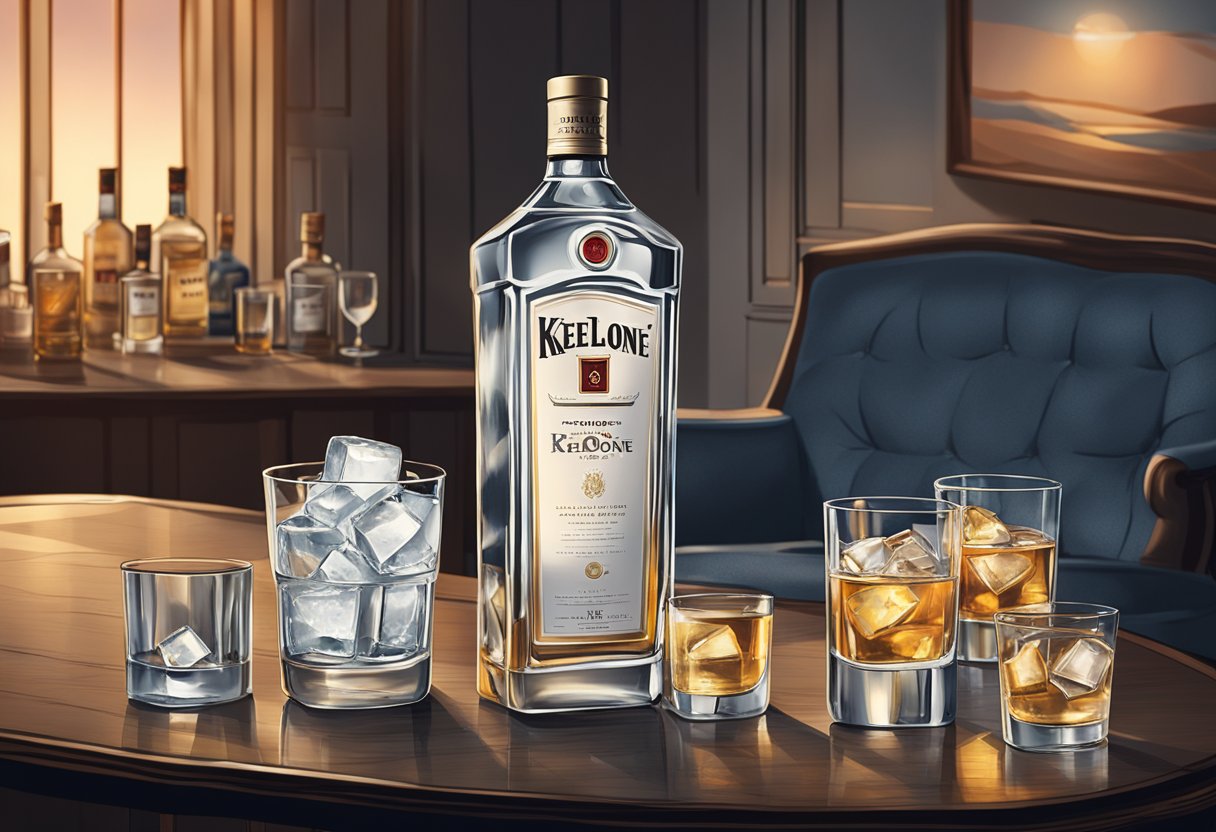
When it comes to enjoying Ketel One Vodka, it’s important to drink responsibly. Here are some tips to help you stay safe and healthy while enjoying your favorite drink.
Understanding Limits
Knowing your limits is key to responsible drinking. It’s important to pace yourself and avoid overindulging. The recommended daily limit for alcohol consumption is one and up to two drinks per day. However, it’s important to note that this limit varies based on factors such as age, weight, and overall health.
Health Considerations
Drinking alcohol can have both positive and negative effects on your health. On the positive side, moderate alcohol consumption has been linked to a reduced risk of heart disease and stroke. However, excessive alcohol consumption can lead to a range of health problems, including liver disease, high blood pressure, and certain types of cancer.
If you have any concerns about how alcohol may be affecting your health, it’s important to speak with your healthcare provider. They can help you understand the risks and benefits of drinking, and provide guidance on how to drink responsibly.
Remember, drinking responsibly is not only good for your health, but also for the safety of those around you. Always plan ahead and make sure you have a designated driver or alternative transportation if you plan on drinking.
Frequently Asked Questions
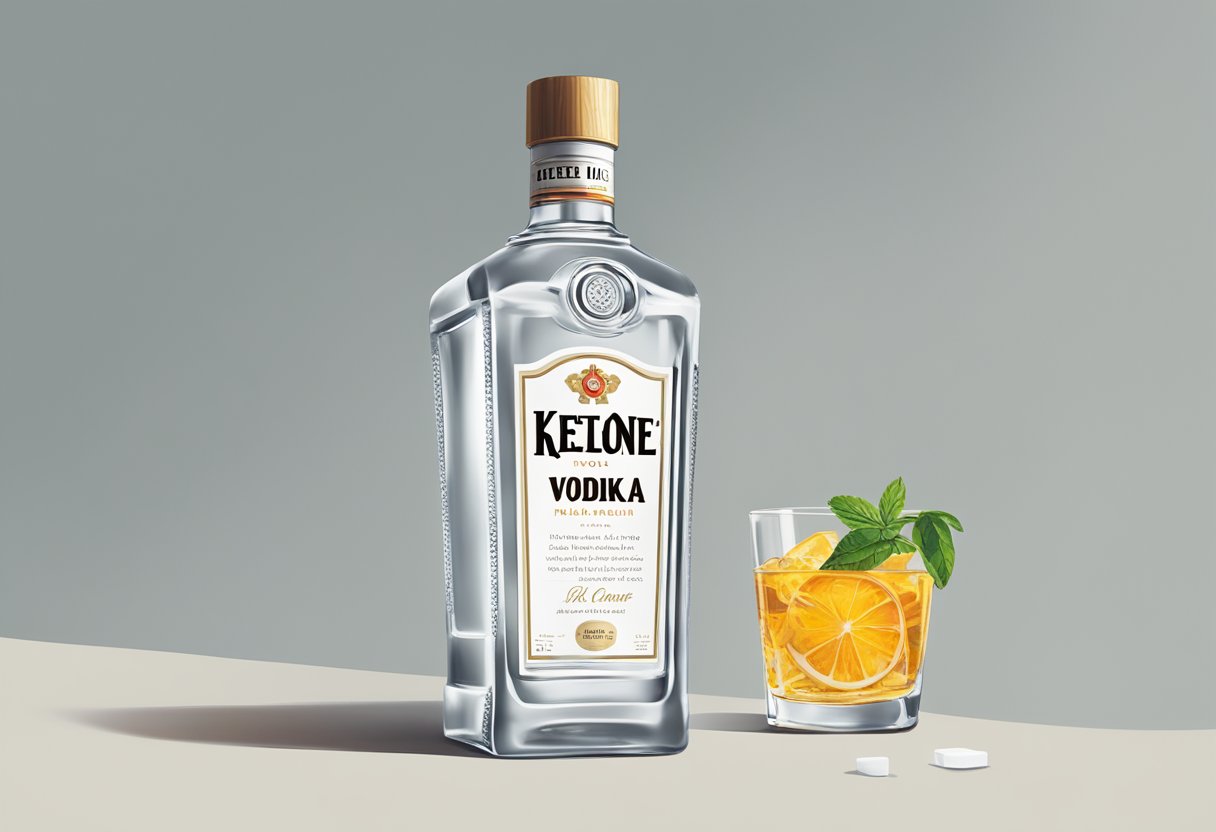
What is the price range for a 1-liter bottle of Ketel One Vodka?
The price range for a 1-liter bottle of Ketel One Vodka is $35 to $45 for a 1-liter bottle of Ketel One Vodka.
How much does a 1.75-liter bottle of Ketel One Vodka cost?
On average, you can expect to pay around $50 to $60 for a 1.75-liter bottle of Ketel One Vodka.
Can you list the available flavors of Ketel One Vodka?
Ketel One Vodka is available in several flavors including:
- Ketel One Original
- Ketel One Citroen
- Ketel One Oranje
- Ketel One Botanical Peach & Orange Blossom
- Ketel One Botanical Cucumber & Mint
- Ketel One Botanical Grapefruit & Rose
- Ketel One Botanicals Spritz Grapefruit & Rose
What is the alcohol content percentage in Ketel One Vodka?
Ketel One Vodka has an alcohol content percentage of 40%.
What makes Ketel One Vodka distinct from other brands?
Ketel One Vodka is known for its smooth taste and crisp finish. It is made from 100% non-GMO European wheat and is distilled using traditional methods. Ketel One Vodka is also known for its commitment to sustainability and reducing its carbon footprint.
Bulleit Bourbon Price: How Much Does a Bottle Cost?
For aficionados of bourbon, it’s common knowledge that Bulleit Bourbon stands out as a top choice among today’s bourbon brands. Celebrated for its premium ingredients and notably smooth and mild flavor, this Kentucky straight bourbon whiskey has earned its reputation. However, you might wonder about the Bulleit Bourbon price and the most advantageous locations to purchase this well-regarded whiskey at competitive prices.
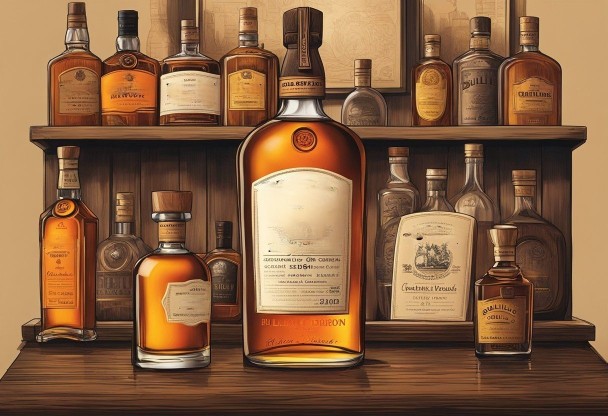
Since the cost of Bulleit Bourbon might fluctuate based on your geographical area and the specific retailer, it’s advisable to compare prices across different stores to secure the best value for your preferred bourbon.
For both experienced bourbon enthusiasts and those new to the realm of whiskey, being aware of Bulleit Bourbon’s pricing is crucial for making savvy buying choices. By investing time in research and price comparison, you can discover excellent bargains on this sought-after spirit, allowing you to savor its smooth, gentle taste without straining your finances.
History of Bulleit Bourbon
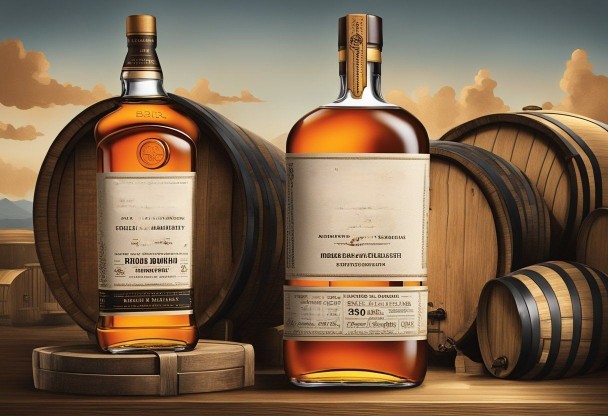
Tracing its origins to the 1830s, Bulleit Bourbon boasts a storied past. Augustus Bulleit crafted the inaugural batch around 1830, pioneering the distillation of high-rye bourbon whiskey in Kentucky. His legacy persisted until his demise in 1860, and his recipe was carefully handed down through generations. It was Tom Bulleit, Augustus’ great-great-grandson, who revived the family recipe in 1987.
Now, Bulleit Bourbon is produced at the esteemed Stitzel-Weller Distillery in Louisville, Kentucky. The brand has garnered numerous accolades, including bagging a gold medal at the 2021 San Francisco World Spirits Competition, as noted by Liquor Laboratory.
Renowned for its distinctive high-rye mash bill, Bulleit Bourbon offers a spicy and robust flavor profile. The brand’s diverse range includes Bulleit Rye, Bulleit Bourbon 10 Year, and Bulleit Bourbon Barrel Strength.
In summary, Bulleit Bourbon, with its extensive and rich heritage, continues to delight whiskey aficionados globally with its array of high-quality offerings.
Bulleit Bourbon Varieties
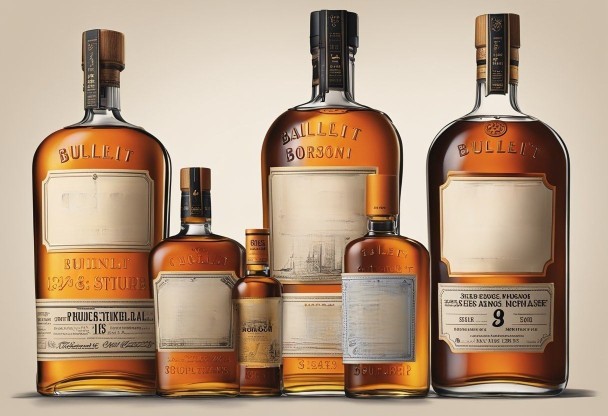
Bulleit Rye
Bulleit Rye offers a spicy and intricate taste, ideal for enjoying neat or as part of a delightful cocktail. Boasting a significant rye composition of 95%, this whiskey stands out with its robust and unique flavor profile. Its aging process, extending over four years in charred American oak barrels, imparts a smooth and soothing finish.
For those in search of a whiskey with a strong character, Bulleit Rye is an excellent choice. It’s a gratifying experience for both long-time whiskey aficionados and those new to the spirit world.
Bulleit Whiskey
Bulleit Whiskey, a quintessential bourbon, is celebrated for its smooth and well-rounded taste. Composed of 68% corn, 28% rye, and 4% malted barley in its mash bill, it offers a subtly sweet and spicy flavor, making it highly adaptable. It’s perfect in cocktails, over ice, or simply enjoyed neat.
Similar to Bulleit Rye, this whiskey undergoes at least four years of aging in charred American oak barrels, enriching it with a deep and multifaceted flavor.
In summary, both Bulleit Rye and Bulleit Whiskey stand as prime selections for those in search of top-tier bourbon. Whether your preference leans towards a bold and spicy note or a more mellow and harmonious profile, Bulleit caters to all palates. Sampling both types is the best way to truly appreciate their distinct qualities.
Tasting Notes and Flavor Profile
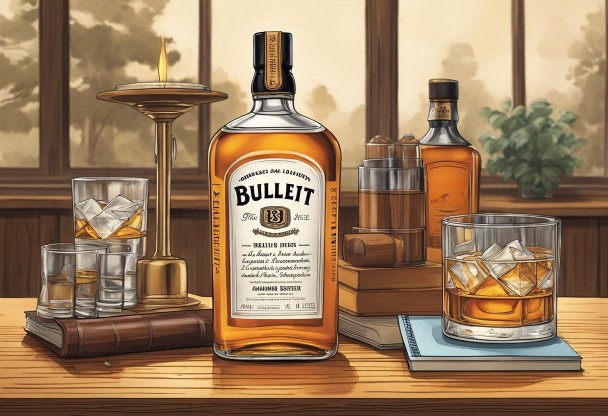
Bulleit Bourbon is immediately recognizable for its distinctive flavor profile, a result of its mash bill comprising 68% corn, 28% rye, and 4% malted barley. This combination gives it a unique taste that distinguishes it from other bourbons.
This bourbon presents a medium amber hue, which is both aesthetically pleasing and inviting. At 90 proof (45% ABV), it strikes the perfect balance between strength and smoothness.
The aroma is a delightful mix of sweet oak and a hint of spice. On tasting, you’ll enjoy a smooth and rich palate with hints of maple, oak, and nutmeg. It finishes long and dry, leaving a subtle toffee aftertaste.
For lovers of classic cocktails, Bulleit Bourbon shines in an Old Fashioned. Its distinctive flavors add a refreshing twist to this traditional drink, making it a must-try for bourbon enthusiasts.
In essence, Bulleit Bourbon offers a harmonious and rich taste experience, setting it apart from others in its category. Its unique composition and flavor nuances make it a standout choice for those exploring bourbons.
How to Drink Bulleit Bourbon

As previously noted, Bulleit Bourbon is a flexible whiskey that suits various drinking preferences. Whether you savor it neat, with ice, or mixed in a cocktail, there’s an ideal Bulleit Bourbon beverage for everyone. Below are some of the ways to relish this classic American whiskey:
Bulleit Old Fashioned
The Bulleit Old-Fashioned is a classic cocktail that’s perfect for sipping on a lazy afternoon or a relaxing evening. To make a Bulleit Old Fashioned, you’ll need:
Ingredients:
- 2 oz. Bulleit Bourbon
- 1 sugar cube
- 2 dashes Angostura bitters
- Orange peel
- Ice
Instructions:
- Place the sugar cube in an Old-Fashioned glass and add the bitters.
- Muddle the sugar and bitters until the sugar is dissolved.
- Add ice to the glass.
- Pour in the Bulleit Bourbon.
- Stir until the ingredients are well combined.
- Garnish with an orange peel.
Bulleit Old Fashioned Cocktail
If you’re in the mood for a cocktail but don’t want to go through the hassle of making a traditional Old Fashioned, try the Bulleit Old Fashioned Cocktail. This ready-to-serve cocktail is made with Bulleit Bourbon, sweet oak, nutmeg, and light toffee notes. Simply pour it over ice and enjoy.
No matter how you choose to drink it, Bulleit Bourbon is a smooth and flavorful whiskey that’s perfect for any occasion.
Price Range and Availability

Bulleit Bourbon is a popular brand of whiskey that has been around for over 150 years. It is known for its high-quality ingredients and smooth, mellow character. If you are interested in purchasing this bourbon, you may be wondering about its price range and availability.
Price Range
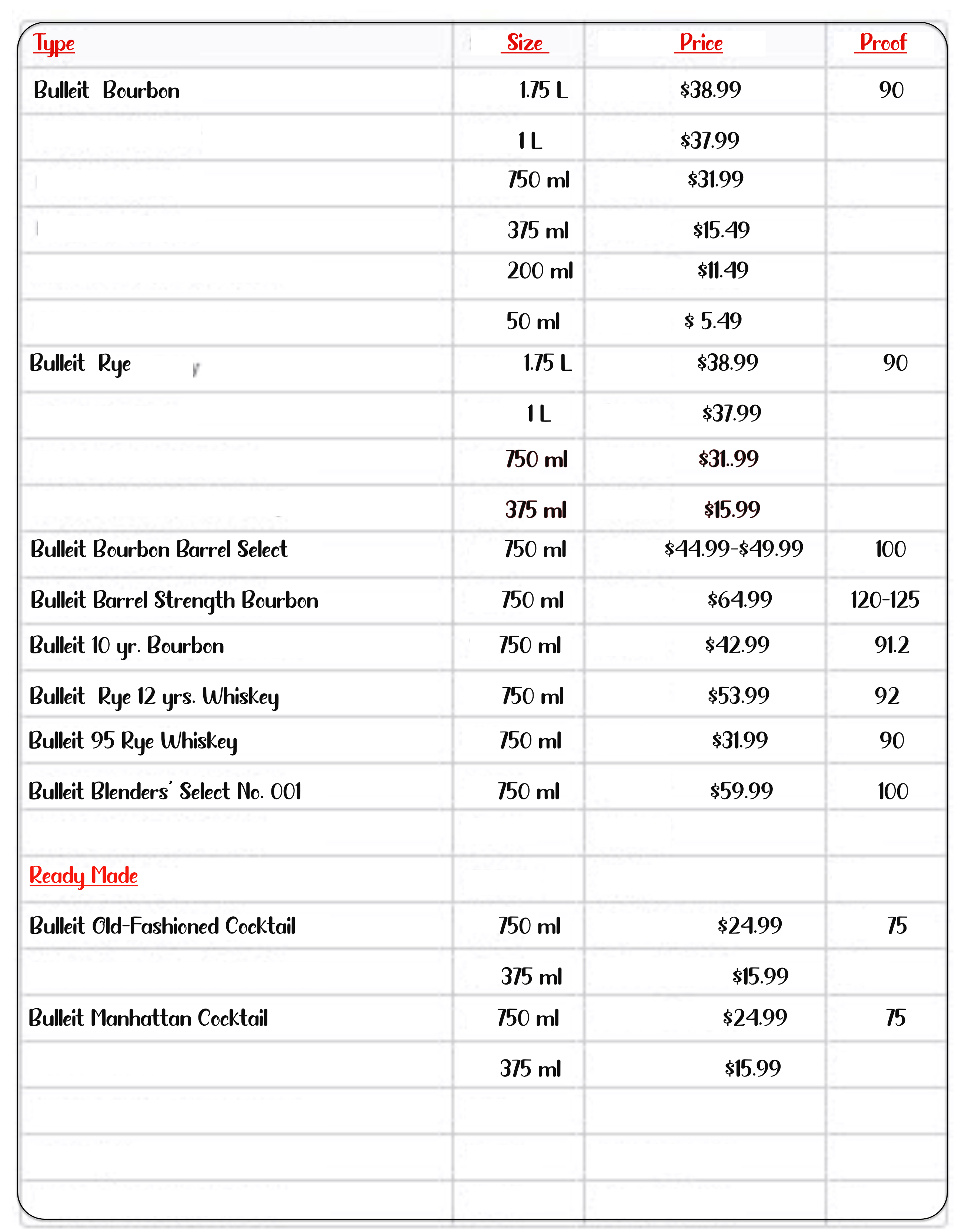
Availability
Bulleit Bourbon enjoys broad availability across the United States and is commonly stocked in numerous liquor outlets. Additionally, it’s accessible for online purchase through a variety of retailers. To find out if Bulleit Bourbon is available at a liquor store near you, the Bulleit Store Locator tool can be used.
In summary, Bulleit Bourbon stands out as a quality whiskey that is both widely accessible and affordably priced. It’s an excellent choice for both whiskey enthusiasts and those simply seeking a delightful beverage, making it a must-try.
Comparing Bulleit with Other Bourbons
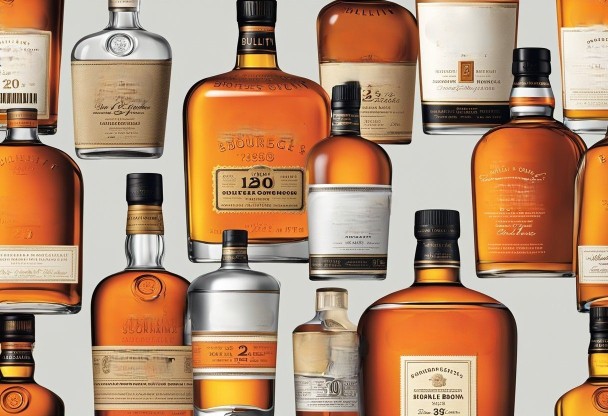
The bourbon market offers a diverse range of options. For aficionados of Bulleit Bourbon, understanding its comparison with other bourbons in aspects like price and flavor might be of interest. Here is an analysis of how Bulleit fares in comparison to other well-known bourbons:
Bulleit vs. Maker’s Mark
Maker’s Mark is another well-liked bourbon, celebrated for its smooth flavor. Price-wise, Bulleit tends to be slightly more budget-friendly compared to Maker’s Mark. For instance, a 750ml bottle of Bulleit Bourbon is generally priced at about $28.99, whereas the same size bottle of Maker’s Mark is typically around $32.99. Flavor-wise, both bourbons share a comparable taste profile, featuring hints of caramel, vanilla, and oak. Yet, Bulleit stands out due to its marginally higher rye content, contributing to a more spicy finish.
Bulleit vs. Woodford Reserve
Woodford Reserve is a high-end bourbon renowned for its intricate flavor profile. In terms of pricing, it’s usually pricier than Bulleit. A 750ml bottle of Woodford Reserve often sells for about $34.99, in contrast to a similar size bottle of Bulleit, which is typically priced around $28.99. Taste-wise, Woodford Reserve offers a more subtle and complex array of flavors, including dark fruit, chocolate, and tobacco notes. Bulleit, conversely, is characterized by a more robust flavor and a spicier endnote.
Bulleit vs. Buffalo Trace
Buffalo Trace is a well-regarded bourbon noted for its smooth flavor and budget-friendly price. It is typically more economical than Bulleit. For instance, a 750ml bottle of Buffalo Trace is usually priced at around $23.99, compared to a 750ml bottle of Bulleit, which often costs about $28.99. Flavor-wise, Buffalo Trace offers a sweeter palate, with hints of caramel and vanilla, whereas Bulleit features a spicier taste with rye and oak notes.
In summary, Bulleit Bourbon is an excellent choice for those seeking a robust, spicy flavor at a reasonable price. Although it may not have the complexity of some high-end bourbons, it competes well with other popular bourbons in both taste and affordability.
Conclusion
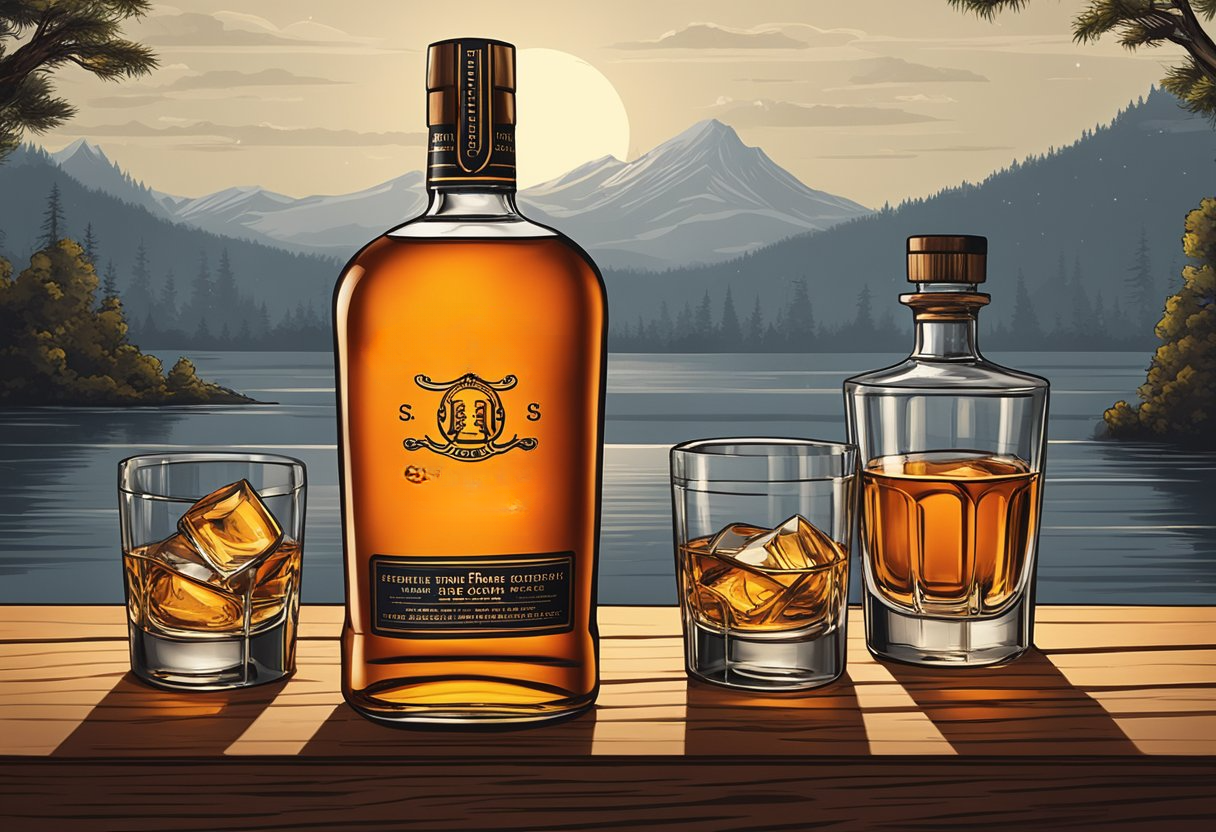
In summary, Bulleit Bourbon has become a renowned American whiskey, known for its distinctive mix of rye, corn, and barley malt. Established in 1987 by Tom Bulleit, it has earned a global following among whiskey aficionados.
The cost of Bulleit Bourbon varies based on the specific variant and where it’s purchased. Our research indicates that prices range from $30 to $60, influenced by factors such as age, bottle size, and type.
For those seeking a high-quality yet affordable bourbon, Bulleit Bourbon Frontier Whiskey is an excellent choice. This high-rye bourbon is ideal for both cocktails and neat sipping. Available in various sizes, its price starts at around $30.
Alternatively, bourbon connoisseurs might prefer the Bulleit 10 Year Bourbon. This premium option, aged for ten years, offers a smooth and intricate taste, with prices ranging from $50 to $60.
Overall, Bulleit Bourbon offers good value for its quality. It’s a brand worth exploring whether you’re new to whiskey or a seasoned connoisseur.
Frequently Asked Questions
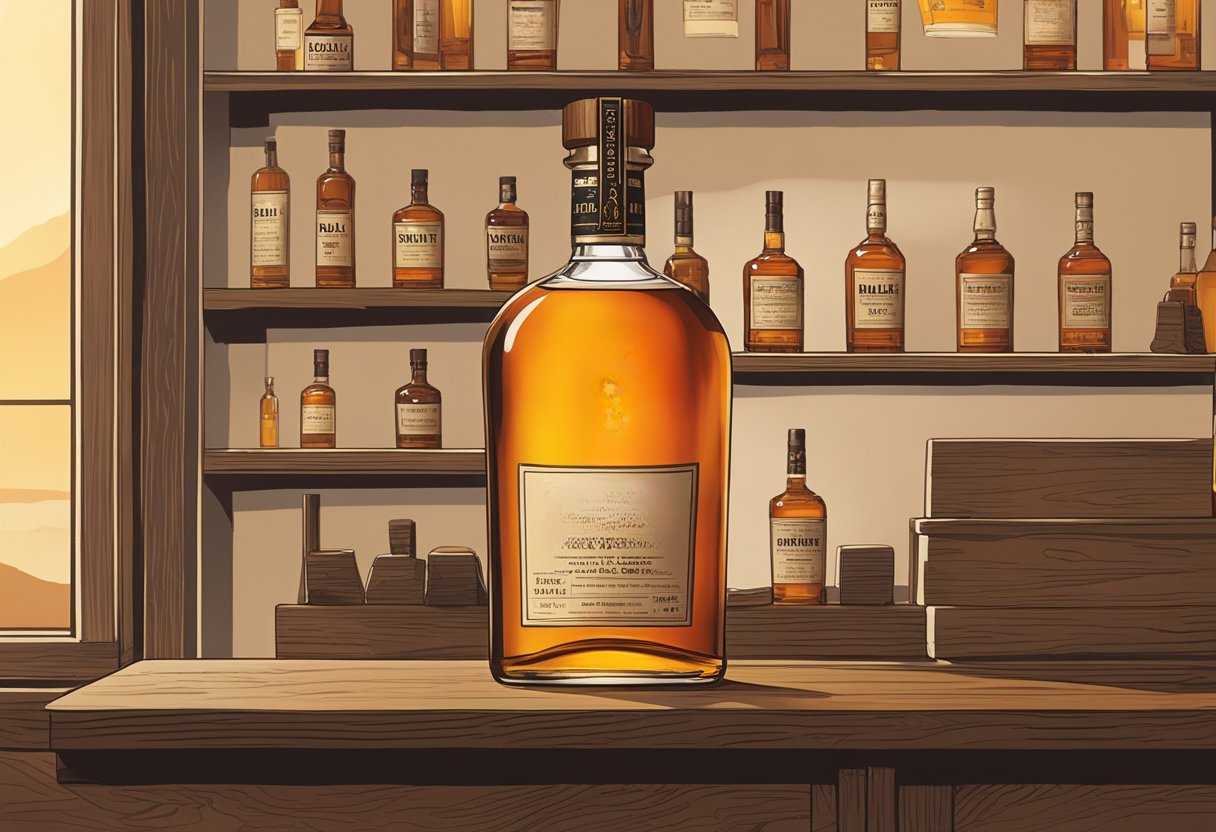
What is the average price for a bottle of Bulleit Bourbon?
On average, you can expect to pay around $35 for a standard 750ml bottle of Bulleit Bourbon.
What is the difference in price between Bulleit Bourbon 1.75 Liter and 750ml?
On average, it is a $25 difference.
Is Bulleit Bourbon worth the price?
Absolutely!
What is the price range for Bulleit Bourbon Single Barrel?
Bulleit Bourbon Single Barrel is a premium bourbon that is aged for at least 6 years. On average, you can expect to pay around $50 to $60 for a 750ml bottle of Bulleit Bourbon Single Barrel.
Does the price of Bulleit Bourbon vary by location?
Yes, the price of Bulleit Bourbon can vary depending on the store and the location. Some stores may charge more for Bulleit Bourbon than others, and the price can also vary depending on the state or country you are in. It is always a good idea to compare prices at different stores before making a purchase.
Empress Gin: Revealing the Secrets of Its Unique Flavor and Color
Empress 1908 Gin, an artisanal and distinctive spirit, originates from Canada and is produced by the acclaimed Victoria Distillers, who are renowned for their dedication to innovation and excellence. Consequently, this gin is distinguished by its striking indigo hue and unique flavor. Furthermore, its rich color and intricate taste profile stem from a selection of thoughtfully chosen botanicals, most notably the butterfly pea blossom, which imparts both a deep color and a touch of intrigue to the gin.
Empress 1908 Gin, launched in 2017, was crafted to honor the historic Fairmont Empress Hotel in Victoria, British Columbia. Peter Hunt and the team at Victoria Distillers developed this recipe to capture the essence and rich heritage of the hotel.
The gin’s signature indigo color, a serendipitous result during distillation, originates from butterfly pea blossoms. Moreover, these blossoms, in combination with other meticulously chosen botanicals, contribute significantly to its unique flavor profile. This includes elements such as juniper, coriander, grapefruit peel, ginger root, cinnamon, rose, and lavender.
The gin’s name, “Empress 1908,” references the year the hotel was built, reflecting its Edwardian architecture with French Renaissance revival influences. Victoria was a crucial hub for the Canadian Pacific Railway and the maritime trade in the Pacific during that era.
Since its introduction, Empress Gin has become increasingly popular, celebrated for its remarkable color and flavor. Its natural ability to change color from indigo to shades of pink or blue when mixed adds an extra element of allure.
The blend of both traditional and modern botanicals, skillfully combined with its aesthetic appeal, effectively mirrors the spirit of the Empress Hotel and stands as a tribute to the creativity of its creators. Furthermore, the widespread acclaim of Empress 1908 Gin serves as a testament to the passion and skill involved in its making.
Production Process
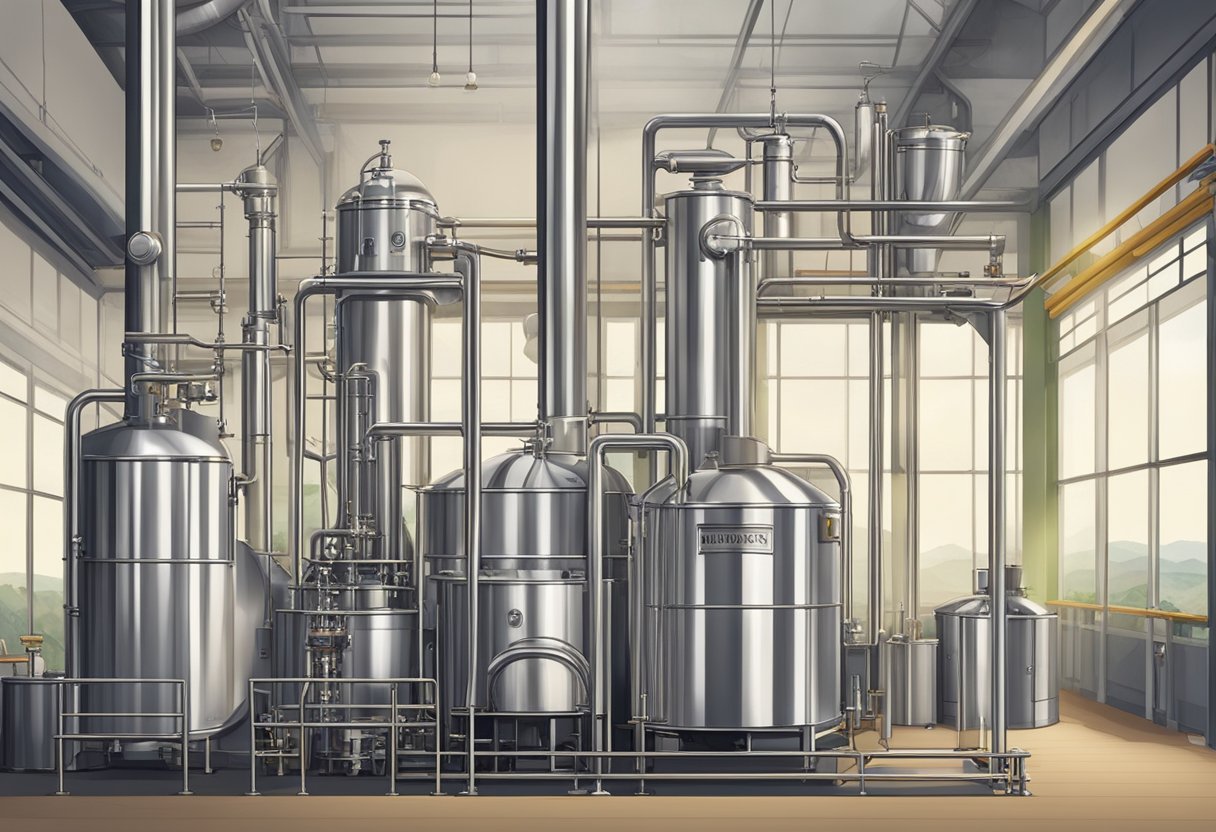
Botanical Ingredients
This unique spirit is distinguished by its specially chosen botanicals that shape its rich and exotic taste. Its primary ingredients are juniper, giving it the quintessential gin character, grapefruit peel and coriander seed introducing a citrus zest, cinnamon bark infusing a spicy warmth, and rose petals along with ginger root providing a subtle floral essence with a spicy undercurrent.
Production Technique
The production of Empress 1908 Gin starts with an overnight maceration of its botanicals, setting the stage for the distillation process. Crafted by Victoria Distillers, among the most established artisan distilleries in British Columbia, the gin is distilled in small-batch copper pot stills. This careful maceration period allows for a full extraction of flavors, resulting in a gin that’s exceptionally smooth and well-rounded.
In the making of Empress Gin, an eco-friendly approach is adopted during distillation. The initiative to repurpose the heat from the stills conserves around 7,000 liters of water for each batch. This dedication to water conservation and energy efficiency differentiates Empress 1908 Gin from its competitors.
The distinctive distillation approach of Empress Gin, merging select botanicals with an eco-conscious production method, yields a spirit that stands out. Whether mixed in traditional gin cocktails or paired with premium mixers, it promises an indulgent experience.
Tasting Profile
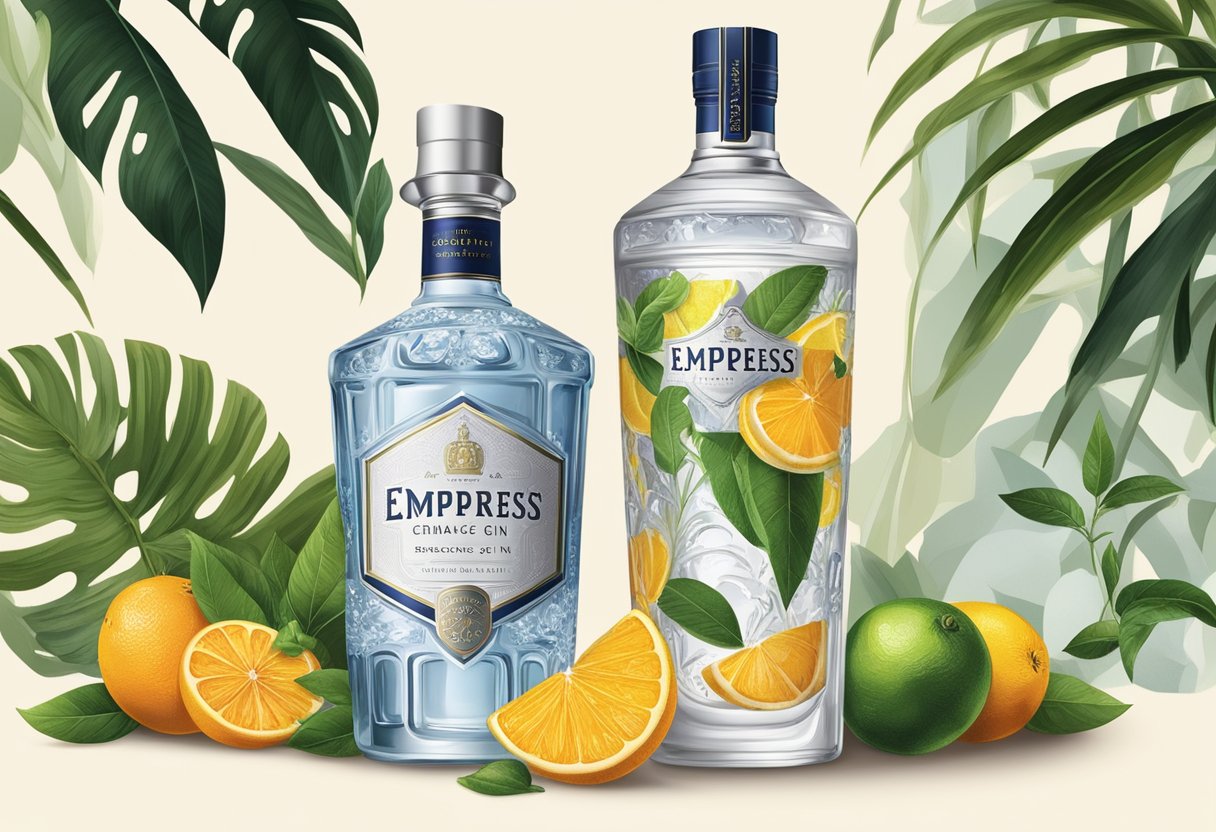
Tasting a spirit like Empress 1908 Gin is a multi-sensory experience that unfolds in several stages:
Visual Appeal
Your experience begins the moment you pour the gin into a glass. Empress Gin is renowned for its striking deep indigo color. This visual allure sets the stage for the tasting journey.
Aroma
As you bring the glass closer, take a gentle inhale. Initially, you’ll notice the clean, piney scent of juniper, the hallmark of any classic gin. Following this, the zesty and bright notes of grapefruit peel become apparent, along with the sweet, citrusy essence of coriander seed. Moreover, if you allow the gin to breathe for a moment, subtle hints of the warm, woody spice from cinnamon bark and the delicate floral notes from rose petals will gradually emerge, complemented by a slight undertone of the sharp, spicy fragrance of ginger root.
First Sip
Take a small sip and let the gin coat your palate. The juniper will likely be the first to greet your taste buds, followed quickly by the fresh, tangy burst of citrus from the grapefruit. The coriander adds complexity with its warm, nutty, and slightly spicy flavor.
Mid-Palate
the gin lingers in your mouth, the warm spices become more pronounced. The cinnamon provides a comforting warmth without overpowering, and it might remind you of baked goods or spiced tea. This is where the balance of flavors starts to shine, as the spice from the cinnamon and ginger root is softened by the elegance of the rose petals.
Finish
As you swallow, the gin leaves a smooth and lingering finish. There’s a slight heat from the ginger root, which is tempered by the floral notes that remain on the tongue. The overall finish is clean, with a balanced interplay between warmth, spice, and floral sweetness.
Overall Experience: The tasting journey of Empress 1908 Gin is one of balance and harmony, with each botanical playing its part without overwhelming the others. It’s a gin that’s as much a delight to the eyes as it is to the palate, offering a unique experience that invites you to explore the depth and subtlety of its flavors. Whether you’re a gin connoisseur or a curious newcomer, Empress Gin makes for a memorable tasting adventure.
Complexity with Mixers
If you decide to enjoy Empress 1908 Gin with mixers or in a cocktail, you must try the spirit on its own. That way you are going to appreciate the transformation when mixers are crafted onto the playing field. The change in taste and in color is a sensory trip. The pH-sensitive butterfly pea blossom causes the gin to change color from its original indigo to various shades of pink or lavender, depending on the mixer’s acidity. It’s exciting to taste the different aspects of the gin that it lets out.
Empress Gin Recipes
The silky finish of Empress Gin lends itself to a myriad of cocktail creations. Among the favorites are:
Empress & Tonic: This spin on the time-honored gin and tonic uses Empress 1908 Gin and manifests a captivating shift from indigo to pink when tonic water is added.
Victoria’s Garden: A delightful concoction of Empress Gin blended with lemon juice, simple syrup, and crushed basil leaves, adorned with slices of cucumber and lemon.
Empress Martini: An elegant variation of the traditional martini, combining Empress Gin with vermouth and a hint of orange bitters, and finished with a twist of lemon or a few olives.
Remember to take advantage of Empress 1908 Gin’s color-changing magic as you mix your drinks. The transformation from a royal indigo to an alluring pink with the addition of citrus or tonic water not only makes for an impressive visual but also can spark up conversations.
Signature Empress Gin Cocktails
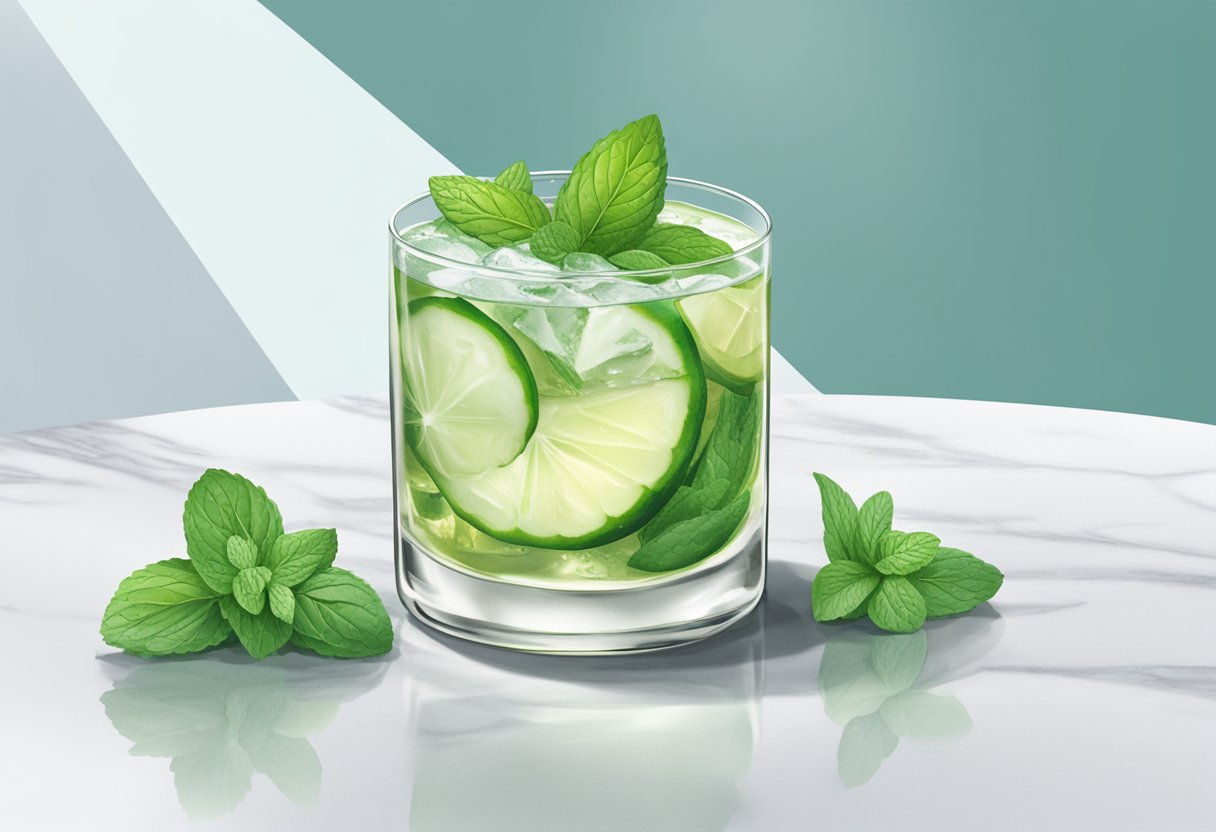
Empress Gin captivates with its deep indigo shade and complex taste profile, serving as a base for both timeless and inventive cocktails. Here’s a selection of Empress 1908 Gin’s signature concoctions that highlight the spirit’s distinctiveness.
Empress & Tonic: This flagship reinvents the gin and tonic experience. Blending Empress Gin with high-quality tonic water yields a sophisticated and invigorating drink. To craft it, combine 2 oz of Empress 1908 Gin with 3 oz of premium tonic water and accentuate with a slice of grapefruit.
Empress Gin Strawberry Basil Smash: This is another tantalizing option, marrying the gin’s botanicals with the aromatic essence of strawberries and basil. Crush strawberries and basil leaves together, then add Empress 1908 Gin, lemon juice, and simple syrup, shake well, and serve in a glass.
Empress Lavender Lemonade: For a touch of floral elegance. This perfumed blend infuses the gin with handcrafted lemonade and lavender syrup. Mix the gin with lemon juice and lavender syrup, top with a splash of sparkling water, and garnish with lavender.
Royal Hawaiian: This choice offers a touch of sophistication, featuring a tropical mix of Empress 1908 Gin, orgeat syrup, pineapple juice, and lemon juice. Delivering a harmony of tastes. Shake these ingredients with ice, strain into an elegant glass, and decorate with a pineapple slice or a cherry.
Empress Pear Rosemary Cocktail: A distinct fusion of sweet pear and aromatic rosemary that complements the gin’s botanical blend. Shake the gin with pear nectar, lemon juice, simple syrup, and a sprig of rosemary, strain into a glass over ice, and garnish with a pear slice.
These signature drinks highlight the multifaceted character of this spirit. And are perfect for enhancing your cocktail repertoire, whether you’re hosting a soiree or refining your bartending flair.
Mixing Techniques
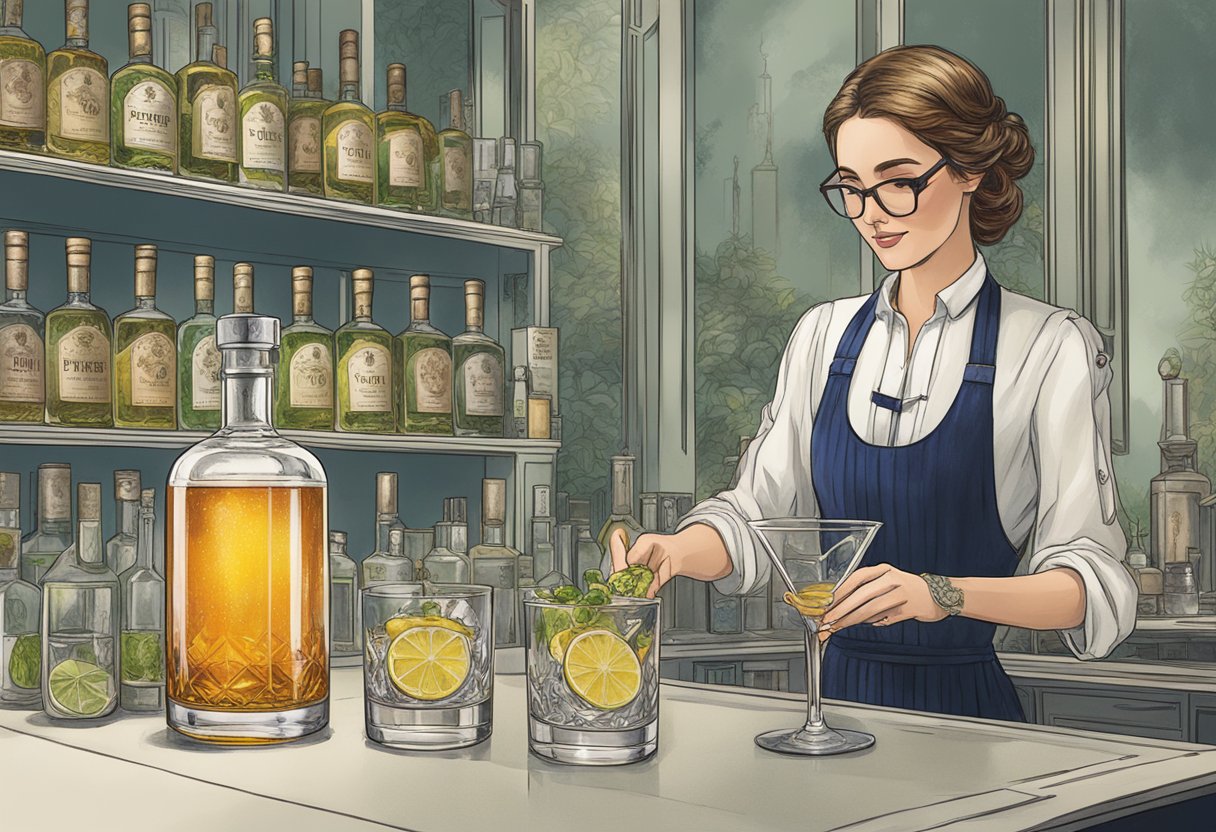
Download this short guide for more detail about shaking, stirring and other basic information about mixology.
Shaking VS Stirring
The decision to shake or stir a cocktail can significantly influence its final texture and taste. Specifically, cocktails containing ingredients like citrus juices, egg whites, or cream should be shaken. This action introduces air and consequently ensures that the components are thoroughly combined, resulting in a harmonious blend.
On the other hand, cocktails where the gin, whiskey or other spirits are the main focus, and the mixers play a secondary role in complementing and enhancing the flavor of the alcohol. Such as an Old Fashioned, a Martini, and a Manhattan. The term given to mixed drinks like these is spirit-forward cocktails. The cocktails benefit from stirring. This technique preserves the subtle flavors and gives the drink a smooth, clear consistency. These types of drinks are often preferred by those who appreciate the distinct flavors of the spirits themselves.
Keep these tips in mind:
Shake: for cocktails that have citrus, egg whites, or cream.
Stir: for preparing refined spirit-centric drinks, including those with Empress 1908 Gin.
Garnishing Essentials
The art of garnishing is essential in elevating both the visual charm and taste of a cocktail. For enhancing your Empress Gin creations, consider these garnishing strategies:
Citrus Twists: Craft a slender twist of citrus peel using a channel knife or peeler, then twist it over the drink to release the essential oils, adding a fragrant complexity. Lemon or grapefruit peels are perfect for this.
Floral Accents: Incorporate edible flowers like those used in the Empress Gin and Blueberry Mojito for a splash of color and subtle flavor. Always choose flowers that are safe for consumption and free from chemicals.
Herbal Garnishes: A sprig of fresh herbs can tie together the cocktail’s taste profile, particularly when they echo the gin’s botanicals. Mint, rosemary, and basil are favorites for this purpose.
Fruit Slices: Add a slice of fruit inside the glass or on the rim for a burst of flavor and color. Citrus and berries complement Empress 1908 Gin cocktails well.
By selecting garnishes that align with the flavors in your cocktail and present a feast for the eyes, you can craft an Empress Gin cocktail that is as stunning as it is delectable. Attention to the finer points of mixing and garnishing can turn a good cocktail into an unforgettable one.
Pairing Empress Gin
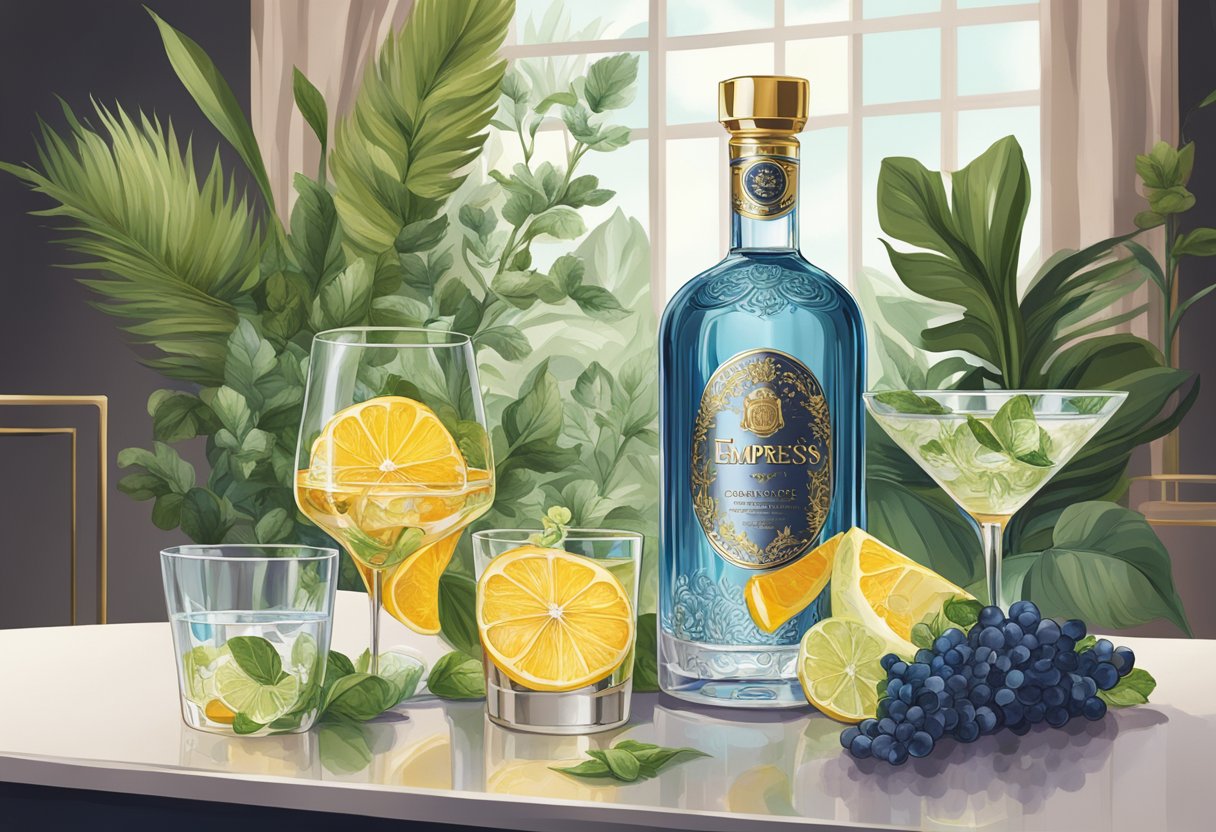
Culinary Combinations
The unique taste of Empress 1908 Gin, with its blend of floral, earthy, and citrus notes, makes it a prime candidate for pairing with food. Opt for fresh components that can draw out these flavors. Berries, for instance, marry well with the gin, their fresh tartness enhancing its floral undertones.
For a classic complement, turn to seafood such as charcoal-grilled shrimp or pan-seared scallops. These dishes let the distinct notes of Empress 1908 Gin come to the forefront. Similarly, dishes seasoned with herbs, like rosemary-infused chicken or pasta tossed with garlic and herbs, accentuate the gin’s earthy notes.
Occasions and Events
Empress 1908 Gin’s versatility lends itself to a range of social settings and events. Consider these ideas for featuring Empress Gin:
Cocktail Parties: Showcase original Empress 1908 Gin cocktails, like the innovative Empress Gin and Blueberry Mojito, to offer guests a taste of something extraordinary.
Holiday Gatherings: Bring an elegant flair to holiday celebrations with themed cocktails, such as the Duchess Punch—a blend of Empress 1908 Gin, cranberries, rosemary, and bubbly—that’s sure to dazzle.
Dinner Parties: Introduce a touch of class to your dinner parties with Empress Gin pairings. Offer a pear and rosemary cocktail as an accompaniment to your starters or main dishes. In essence, Empress 1908 Gin is an exquisite spirit that complements a wide array of dishes and adds an element of elegance to any celebration. Its distinctive flavor and striking color are guaranteed to make an impression on your guests.
Serving Suggestions
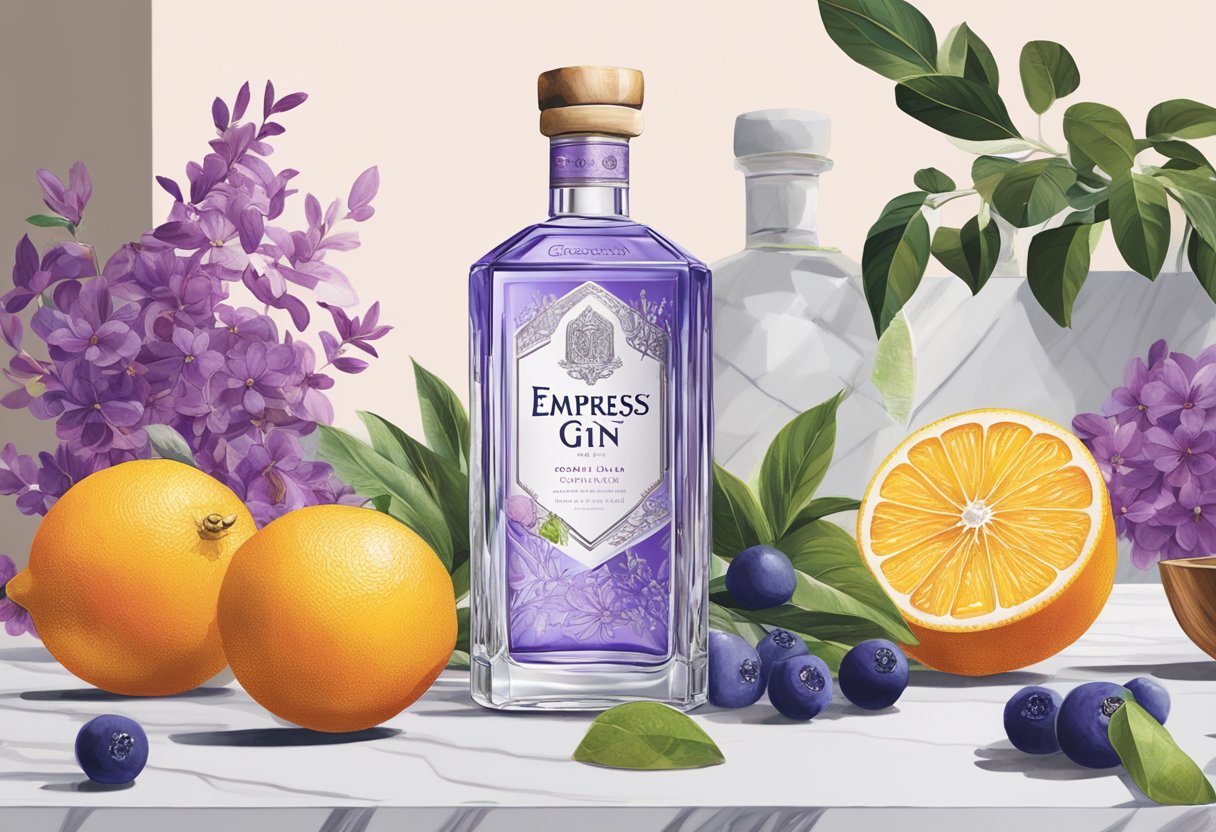
Glass Selection
Choosing the appropriate glassware is crucial when presenting Empress Gin cocktails, as it enhances both the aesthetic and sensory enjoyment. For an Empress Gin & Tonic, a highball glass brimming with ice is suitable. Conversely, an Empress Martini is best served in a classic martini glass to elevate its elegance.
Other glassware choices include:
Coupe Glass: Best suited for timeless and chic cocktails such as the Bee’s Knees.
Rocks Glass: The go-to for succinct drinks like the Empress Pear Rosemary Cocktail.
Collins Glass: Apt for elongated, invigorating beverages like the Raspberry Bramble.
Optimal Chill and Dilution
The excellence of your Empress 1908 Gin cocktails partly lies in serving them at the correct chill level with precise dilution. It’s about finding the harmony among temperature, taste, and texture.
Take the Empress Gin and Blueberry Mojito, which requires a generous amount of ice to maintain its coolness and zest as detailed in its recipe. Meanwhile, a stirred Empress Martini achieves dilution through stirring over ice, which not only cools but also mellows the drink for a silky mouthfeel.
Bear in mind these general practices:
Shaken cocktails: Use ample ice when shaking to properly chill and dilute the cocktail.
Stirred cocktails: Stir with ice until the concoction is sufficiently cold and diluted.
Built-in-glass cocktails: Start with ice in the glass, then pour the ingredients over it to chill the beverage while controlling dilution.
Explore different Empress 1908 Gin concoctions to discover the ideal chill and dilution for each cocktail style, adhering to these foundational tips.
Buying Guide
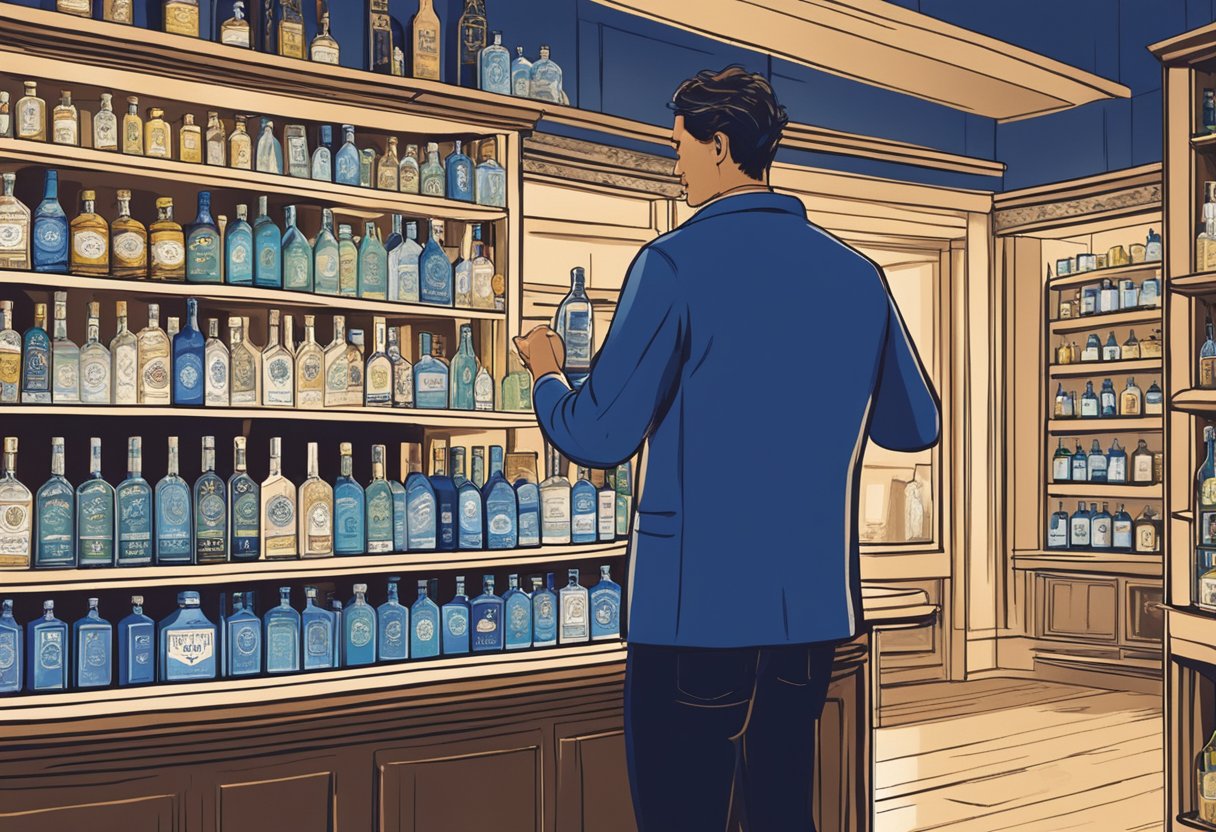
Finding Empress Gin
To locate Empress 1908 Gin, it’s important to be aware of its presence in your specific area. This gin is accessible through various online alcohol vendors as well as traditional physical stores. Its availability might differ based on the distribution channels in your region, so it could be beneficial to check with local stores about their stock of Empress 1908 Gin.
Cost Considerations
Generally, Empress 1908 Gin carries a price tag of around $40. This cost can fluctuate due to regional differences, tax rates, and retail markups. Shopping around at different vendors may yield a more economical purchase.
Selecting Your Ideal Gin
You should consider several aspects when picking out the finest gin for your palate:
Taste Variations: Gins can range from being juniper-forward to a more complex symphony of botanicals and citrus. Selecting a gin that aligns with your personal flavor preference is key.
Alcohol Strength: The strength of the gin can influence its taste intensity. Gins with a higher alcohol percentage usually offer a deeper flavor. Aim for gins that have an alcohol volume between 42.5% and 47% for a robust yet balanced profile.
Botanical Quality: The distinct blend of botanicals in each gin plays a crucial role in its unique flavor. Go for gins that boast quality, natural ingredients and a harmonious botanical mix that appeals to your tastes.
Production Techniques: The method of distillation can affect the taste and quality of the gin. Choose a gin that prides itself on a meticulous and traditional distillation method for superior taste.
Always consume gin sensibly and in moderation. Enjoy your gin exploration!
Frequently Asked Questions
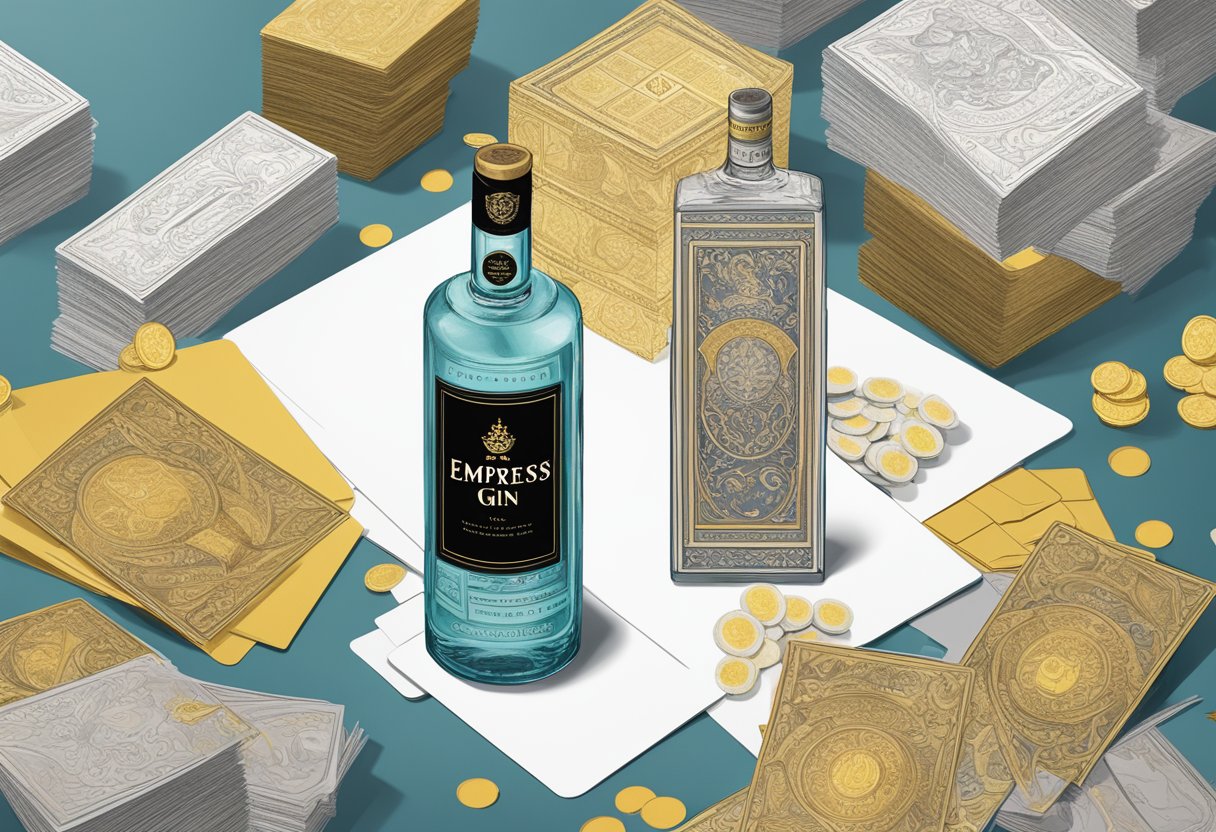
How does Empress Gin achieve its distinctive color?
Empress 1908 Gin, often referred to as Empress 1908, owes its distinctive indigo color to the addition of butterfly pea blossom. This organic component is responsible for both the gin’s vivid shade and its remarkable ability to shift color when combined with specific mixers like citrus or tonic water.
What botanicals are used in the flavor profile of Empress Gin?
Empress 1908 Gin crafts its unique flavor profile using a medley of eight botanicals, each lending a varied array of flavors to the liquor. The blend encompasses classic gin components such as juniper, coriander, and grapefruit peel, complemented by other distinctive botanicals like cinnamon, rose petals, and ginger, as well as the exclusive addition of Fairmont Empress tea, all contributing to the gin’s distinctive flavor profile.
Can you explain the taste difference between Empress Gin and traditional gins?
Empress 1908 Gin, while retaining certain characteristics of conventional gins like the juniper and citrus elements, offers a more contemporary flavor twist. The incorporation of rose petals, tea, and various other botanicals endows the spirit with a uniquely modern palate. Its nuanced floral undertones and a hint of gentle spiciness result in a richer, more intricate taste experience that sets it apart from traditional gins.
What is the most recommended way to serve Empress Gin to enhance its unique characteristics?
The ability of Empress 1908 Gin to change color makes it a perfect option for visually stunning cocktails. They are as appealing to the eye as they are to the palate. To truly savor the gin’s distinctive flavors, experts often suggest enjoying a basic Gin and Tonic. This simple serving method highlights the gin’s singular qualities. Adding a garnish like grapefruit or lemon slice, or a sprig of rosemary, can enhance the gin’s taste even further.
Where is Empress Gin distilled and what is the history of the distillery?
Victoria Distillers, located in Sidney, British Columbia, is the birthplace of Empress 1908 Gin. Established more than ten years ago by a team of skilled artisans devoted to producing high-quality spirits, this distillery formed a partnership with the renowned Fairmont Empress Hotel in Victoria. This collaboration brought together their distillation prowess and the hotel’s signature tea blend, leading to the creation of Empress Gin.
How does the inclusion of Elderflower influence the taste of Empress Gin?
Although elderflower isn’t a listed botanical in Empress 1908 Gin, the subtle floral flavors in the gin can evoke a taste reminiscent of elderflower. This characteristic is likely due to the presence of other floral components such as rose petals, which play a significant role in shaping the gin’s aromatic and complex flavor palette.
Downloads
Crystal Whiskey Glasses: Masterfully Crafted for the Aficionado
Development of Crystal Glassware
The term “crystal” refers to a type of glass that is more transparent and has a higher refractive index than ordinary glass. In the 15th century, glassmakers on Murano, an island near Venice, discovered that adding lead oxide to glass made it clearer and easier to cut and engrave, paving the way for the creation of high-quality crystal whiskey glasses.
Advancements in England
In 1674, George Ravenscroft patented the first lead crystal. It was clearer and more brilliant than any glass previously produced. Furthering the development of lead crystal glassware in England. Setting a new standard for quality and clarity. Which had a significant impact on the production of crystal whiskey glasses.
Whiskey and Crystal Glassware
The association between whiskey and crystal glassware began to develop in the 19th century. In Scotland and Ireland specifically, the popularity of whiskey grew, and the preferred choice for enjoying this spirit was crystal whiskey glasses.
Symbol of Status and Quality
Crystal whiskey glasses and crystal decanters became symbols of status and quality. The weight and feel of crystal whiskey glasses added a sense of luxury to the drinking experience. The color of the whiskey was able to fully be appreciated because of the crystal’s clarity and brilliance.
Craftsmanship and Collectability
The craftsmanship involved in making crystal whiskey glasses became more intricate. The detailed cutting and engraving made crystal whiskey glasses decorative and collectible in addition to their functionality.
Modern Times
Today, many whiskey aficionados favor crystal whiskey glasses due to their rich heritage, aesthetic appeal, and the manner in which they enhance the whiskey tasting experience.
The Best Type of Glass for Whiskey
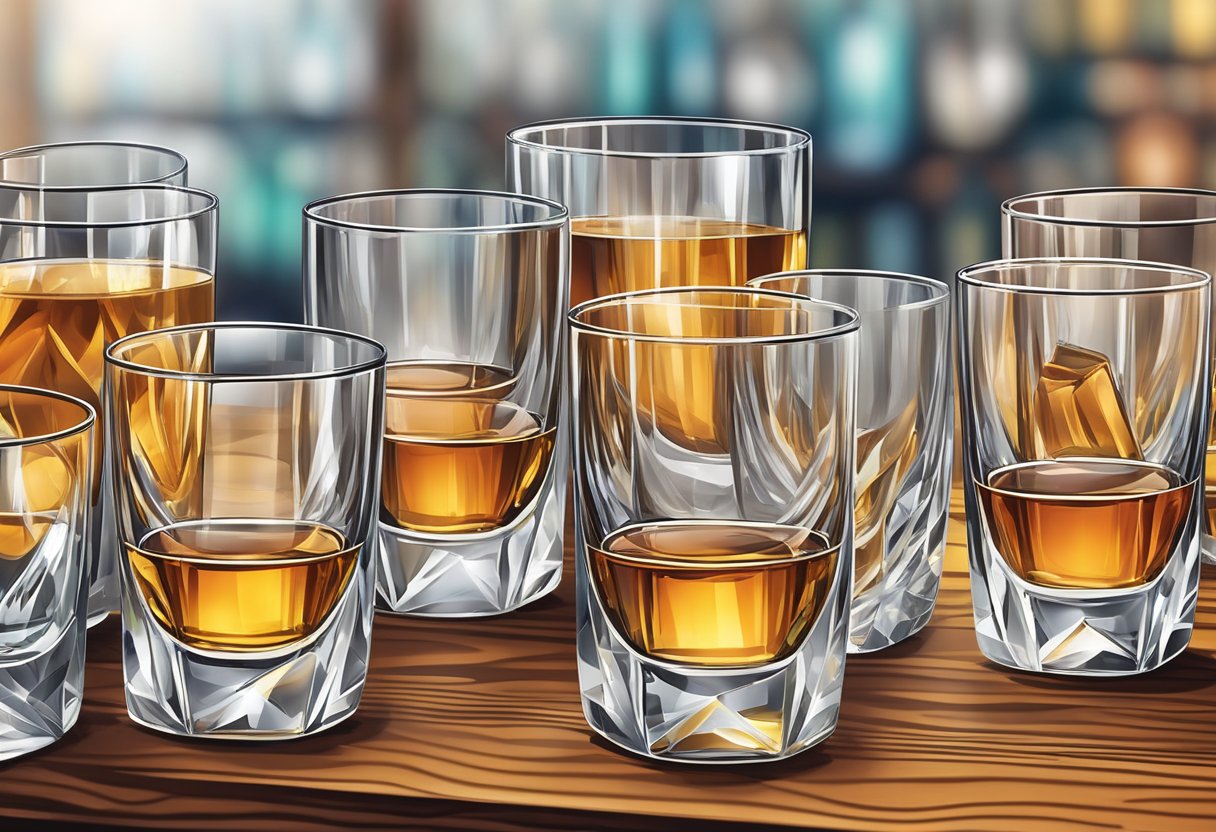
If you were to ask me, “What is the best type of glass for whiskey? The standard response when growing up was, “Whatever type of glass I am holding, right here!” We really didn’t even need a glass. Talk about the perfect pour, we could waterfall whiskey as perfect as a circle.
Ask the same question now, my answer would be, “there isn’t one.” When all said and done, personal preference will play a significant role in choosing a whiskey glass. And the best glass is the one that provides you with the most enjoyable whiskey drinking experience. The key is to choose a glass that enhances your personal enjoyment of whiskey, whether it’s focusing on the aroma, the flavor, or the overall experience. Although, there are some factors you can consider.
Factors to consider when choosing crystal whiskey glasses
When selecting crystal whiskey glasses, there are a few key factors to consider.
- Firstly, the quality of the crystal itself is of utmost importance. Look for glasses made from lead-free crystal; you’ll understand why further down this write up.
- Opt for glasses that are handcrafted, as this ensures the highest level of craftsmanship and attention to detail.
- Another factor to consider is the thickness of the glass. Thicker glasses tend to be sturdier and can retain temperature better, making them ideal for serving whiskey on the rocks. Thinner glasses, on the other hand, allow for a more refined drinking experience, as they showcase the clarity and brilliance of the whiskey.
- Finally, consider the design and aesthetics of the glass. Crystal whiskey glasses come in a wide range of styles and patterns, from intricately cut designs to sleek and minimalist options. Choose a design that speaks to your personal style and adds a touch of elegance to your whiskey-drinking ritual.
A significant portion of what we perceive as taste is actually due to our sense of smell. Therefore, releasing more aromas can lead to a more nuanced and enjoyable tasting experience. Designers create crystal whiskey glasses to enhance the experience of drinking whiskey. Different glasses cater to different aspects of the whiskey. Either focusing on aroma concentration, allowing the spirit to breathe, or accommodating ice and mixers in a cocktail. Let me give you some examples.
The Whiskey Glass Lineup
- Glencairn Glass: Specifically designed for whiskey tasting. The Glencairn glass has a unique shape. A wide bowl that narrows to a relatively narrow opening. This is a widely recommended glass for whiskey, especially single malt Scotch. Because its tulip shape helps concentrate the aromas at the top of the glass, enhancing the tasting experience.
- Snifter: Next is the Brandy Snifter is a short-stemmed glass used for brandy. It has a similar tulip shape as the Glencairn, but it is generally larger and has a wider bowl to allow the spirit to breathe by swirling it around in the glass. The design of the brandy snifter is intended to capture and intensify the complex aromas of brandy.
- Rocks Glass (or Old Fashioned Glass): Then we have the most commonly type of tumbler used for whiskey, the rocks glass. It’s a versatile glass, suitable for drinking it neat, on the rocks, or in cocktails like an Old-Fashioned. It has a wide brim and a solid base, making it great for muddling ingredients for cocktails.
- Highball Glass: This tall glass is best for whiskey cocktails like a Highball or a Whiskey Sour. Its height makes it ideal for drinks with mixers.
- Tasting Glass (or Copita): Similar to a Glencairn but often with a stem, this glass is also designed for nosing and is often used in formal whiskey tastings.
- Neat Glass: A relatively newer design, Neat glasses are usually designed with a broad base that narrows into a flared top. This distinctive shape aims to increase the area for the liquid to evaporate, and the widened rim effectively spreads out the alcohol fumes, reducing their intensity near the nose.
- Whiskey Nosing Glasses: These are designed to enhance the nosing process, allowing for a better appreciation of the whiskey’s complexity.
- Lead-Free Crystal: This is a safer option compared to traditional leaded crystal. Lead-free crystal glasses are known for their clarity, durability, and fine craftsmanship.
By clicking on either of the images, you will be directed over to Amazon’s website.
This table summarizes the characteristics and uses of each glass type to enhance the whiskey-drinking experience.
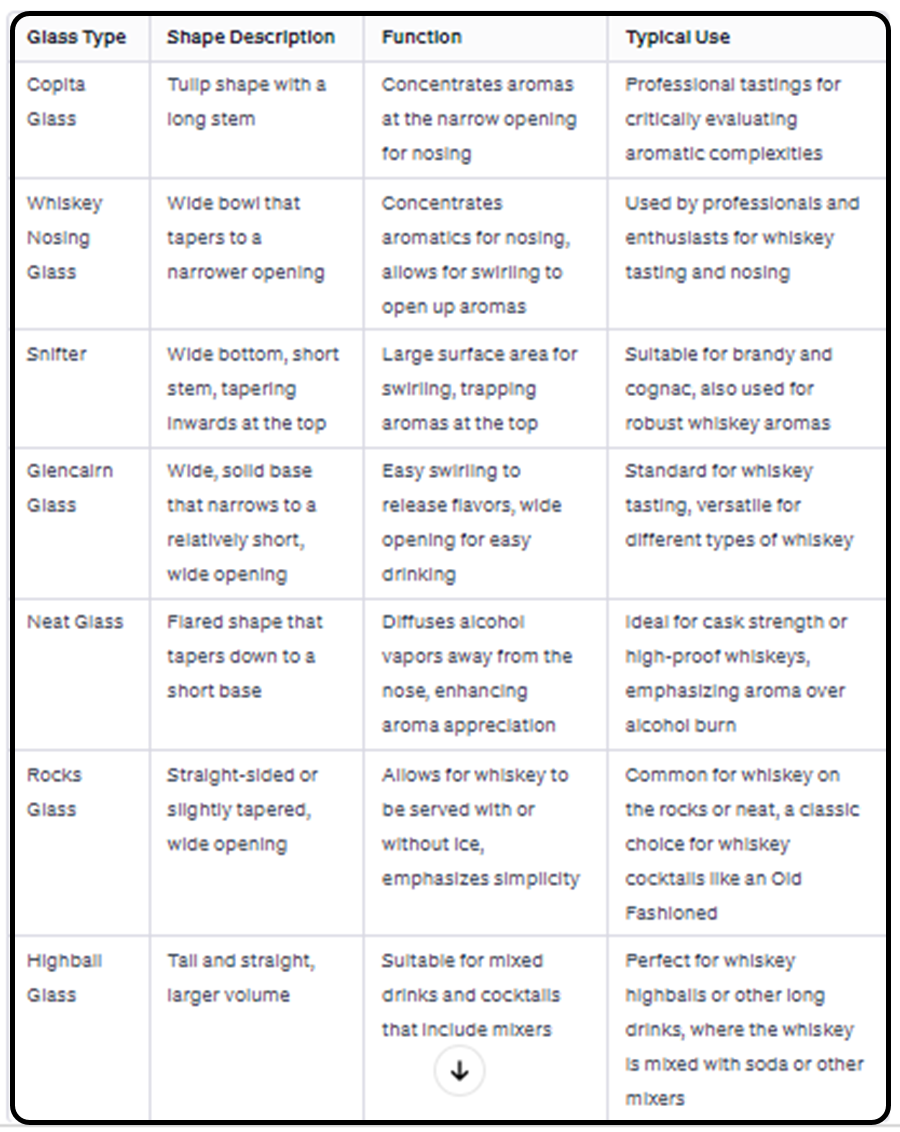
Each glass offers a different experience in terms of nosing and tasting the whiskey. The Glencairn and Snifter are more for a sensory tasting experience, while the Rocks and Highball glasses are more for casual drinking or cocktails.
The Perfect Glass for Every Type of Whiskey
Considering the type of whiskey and its characteristic flavors and aromas can enhance your drinking experience. Several popular types of glasses are commonly used for the specific type of whiskey you are drinking. Here’s a more detailed look at how those glasses enhance specific characteristics of various whiskey styles influencing your choice of glass:
- Single Malt Scotch: For single malts, a Glencairn glass is often preferred. Its tulip shape helps concentrate the complex aromas at the top of the glass, allowing you to fully appreciate the depth and subtlety of the spirit. This is particularly beneficial for single malts, which are known for their nuanced flavors and aromas.
- Aged Whiskeys and Bourbons: For aged whiskeys and bourbons, a snifter might be more appropriate. The wide bowl of the snifter allows swirling the whiskey to help it breathe, revealing the layers of aroma developed during the aging process. It’s especially suitable for enjoying the rich, deep flavors of aged spirits.
- Cask Strength Whiskey: When drinking cask strength whiskey, which is higher in alcohol content, a glass like the Neat Glass might be preferable. Its design helps to disperse the alcohol and emphasize the aroma, making the experience of drinking a high-proof spirit more enjoyable.
- Whiskey Cocktails: If you’re drinking whiskey cocktails, the type of glass can vary depending on the cocktail. Use a rocks glass for cocktails served with ice, such as an Old Fashioned, and choose a highball glass for longer drinks mixed with soda or other mixers, like a Whiskey Sour or a Highball.
- Irish Whiskey and Canadian Whiskey: These types of whiskey are often lighter and smoother. A standard rocks glass or even a Glencairn can be suitable, as they allow you to enjoy the whiskey without overly concentrating the aromas, which can be more subtle in these spirits.
- Rye Whiskey: For rye whiskey, which is known for its spicy and fruity characteristics, a rocks glass or a Glencairn can work well. The choice depends on whether you want to focus on savoring its complexity (Glencairn) or enjoying it in a more relaxed way, possibly with ice (rocks glass).

This table above provides a clear guide on which glassware to use for different types of whiskey, considering their unique characteristics and how the shape and size of the glass can enhance the tasting experience.
The table below provides each glassware type and the recommended whiskey glass on how it can best present the characteristics of the whiskey style, whether it’s concentrating aromas, allowing room for ice, or preventing hand warmth from affecting the drink’s temperature. This table should serve as a handy reference for anyone interested in whiskey tasting and looking to enhance their experience with the appropriate glassware.
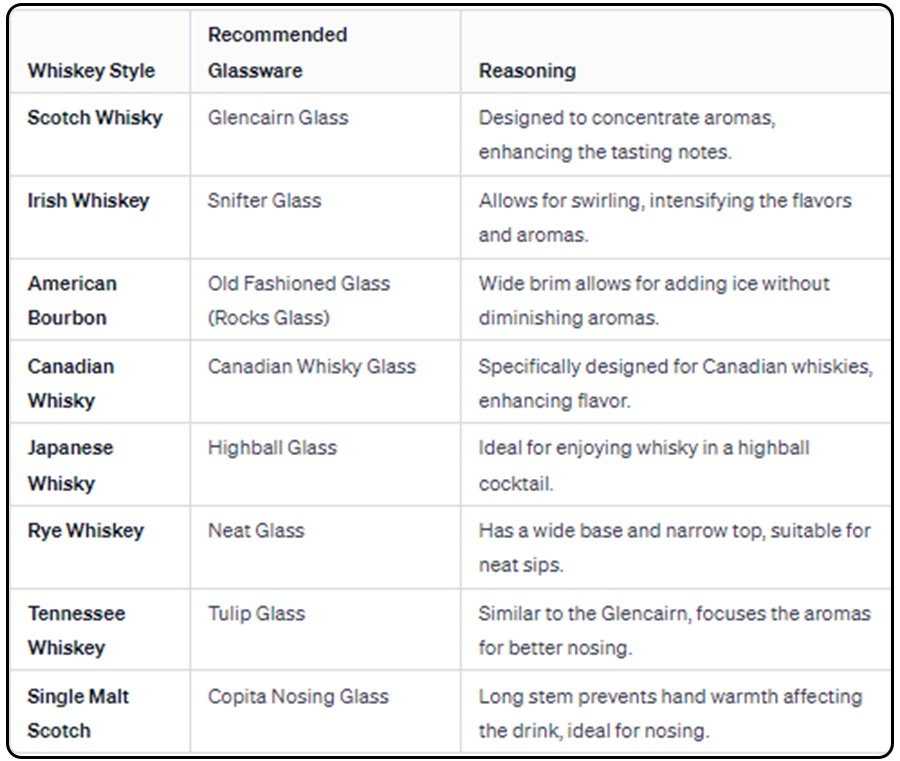
Whiskey Glass vs Tumbler
The terms “whiskey glass” and “tumbler” can sometimes be used interchangeably, but they do have distinct meanings which can help differentiate between different types of drinkware.
Whiskey Glass is a general term that can refer to any glass in which whiskey is served. We discussed various specific types of whiskey glasses in the above section, focusing on how their design, more specifically shape and size, influences the tasting and enjoyment of whiskey. ‘Whiskey Glass’ is a general term referring to any glass used for serving whiskey.
The next question you may have might be, “What is the difference between a whiskey glass and a tumbler? Subsequently one of the key differences between a whiskey glass and tumbler is the design and shape.
Tumbler: A tumbler is a type of glass that is typically short, with a solid base, and often with straight sides, though there are variations. Tumblers can be used for a variety of drinks, including whiskey. They tend to have a larger volume, accommodating ice and mixers along with the whiskey.
Typically, people use rocks glasses for whiskey served neat, with ice (on the rocks), or for simple whiskey cocktails like the Old Fashioned. In contrast, the specific design of a Glencairn glass enhances the whiskey drinking experience, with shapes that concentrate aromas and flavors. So, while you can use any tumbler as a whiskey glass, not all whiskey glasses are tumblers.
Exploring the Excellence of Crystal Whiskey Glasses
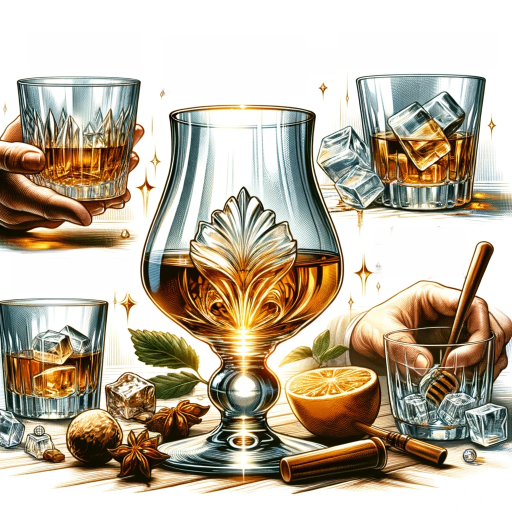
You might be wondering, “What’s the difference between crystal whiskey glasses and regular whiskey glasses?” The key distinction lies in the materials used to craft them, which results in different properties.
Historically, manufacturers often made crystal whiskey glasses from lead crystal, a type of glass containing lead oxide. This has implications for health-conscious individuals, as lead can seep into drinks over time. For example, storing whiskey in a crystal decanter, as opposed to its original bottle, poses the risk of lead contamination over prolonged periods. Research has consistently shown that consuming any amount of lead is unsafe.
Now before we go any further, it’s important to note that there are also high-quality lead-free crystal glasses available, which offer similar benefits in terms of clarity, weight, and sound, but without the lead content. This can be a consideration for those concerned about lead leaching, especially when the glasses are used frequently over a long period. Lead-free crystal options are becoming increasingly popular.
Why is it lead crystal used at all? Well, it’s the lead oxide that gives the crystal weight and also gives the crystal its characteristic sparkle and clarity.
Clarity and Brilliance:
- Visual Appeal: Crystal is prized for its exceptional clarity. This transparency allows whiskey enthusiasts to fully appreciate the color and consistency of their drink, which is an integral part of the whiskey tasting experience in crystal whiskey glasses.
- Refractive Quality: Crystal, especially lead crystal, has a higher refractive index compared to regular glass. This means it bends light more effectively, adding brilliance and sparkle to the whiskey in crystal whiskey glasses, which enhances its visual appeal.
Weight and Texture:
- Tactile Experience: Crystal whiskey glasses, tends to be heavier than standard glass. This weightiness provides a satisfying, substantial feel in the hand, contributing to the overall experience of drinking whiskey.
- Aesthetics: Crystal Whiskey glasses can also be cut into intricate patterns, thanks to their pliability.
Sound:
- Pleasing Sound: The clink of crystal whiskey glasses is distinct and more resonant compared to regular glass. This sound can enhance the social experience of drinking whiskey, marking moments of celebration and togetherness.
Durability:
- Stability and Durability: The added weight of crystal whiskey glasses also means more stability, reducing the likelihood of spilling.
Purity of Taste:
- High-quality crystal is non-porous, which means it doesn’t affect the whiskey’s flavor, ensuring the taste remains unaltered. However, you now know that it’s important to consider the potential for lead contamination in traditional lead crystal over time. Fortunately, with the growing popularity of lead-free crystal, there have been significant advancements. These improvements mean that high-quality lead-free crystal whiskey glasses are also non-porous. Guaranteeing an untainted and pure whiskey tasting experience.
Price:
- Pricier: Crystal glasses are often more expensive due to their material quality and the craftsmanship involved in their production.
The choice between crystal and regular glass whiskey glasses can depend on personal preferences regarding aesthetics, weight, texture, and price, as well as considerations about health and practicality. People often choose crystal glasses for their beauty and the special touch they add to the whiskey-drinking experience, while they opt for regular glasses for their practicality and everyday use.
Cleaning Crystal Whiskey Glasses: Best Practices
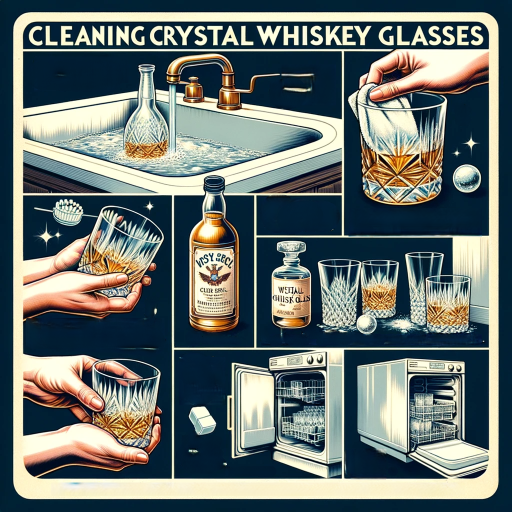
Cleaning crystal whiskey glasses properly is important to maintain their clarity, brilliance, and longevity. Here’s the best way to clean them:
Hand Washing (Recommended)
- Warm Water Usage: Begin by filling a sink or basin with warm water, ensuring it’s not too hot. Excessively hot water can lead to thermal shock, causing crystal glasses to crack or break.
- Mild Soap: Introduce a small quantity of gentle dish soap into the water. It’s advisable to avoid harsh or heavily scented detergents, as they can leave behind scratches or residue.
- Soft Cleaning: Employ a soft cloth or sponge for cleaning the glasses. Steer clear of harsh scrubbers or brushes, which have the potential to scratch the crystal surface.
- Thorough Rinsing: Make sure to rinse the glasses under warm running water to eliminate all traces of soap. Any residual soap can alter the flavor of the whiskey.
- Efficient Drying: Dry the glasses using a lint-free towel. Crystal glasses are susceptible to water marks, so it’s crucial to dry them completely.
Dishwasher (If Necessary)
If the crystal whiskey glasses are labeled dishwasher safe:
Additional Tips
Caution
Proper storage of crystal whiskey glasses is crucial for keeping them clear, undamaged, and ready for use. Here’s how to best store your crystal whiskey glasses:
Thorough Cleaning:
- Make sure to wash the glasses well before storing. They should be completely dry to avoid any marks or streaks.
No Stacking:
- Avoid stacking your crystal glasses. This can create pressure and rubbing, leading to potential chips or cracks.
Vertical Storage:
- Keep the glasses upright when storing. Placing them on their rims could stress and damage the fragile edges.
Stable Location:
- Use a shelf or cabinet that’s stable and free from vibrations. Too much movement might cause the glasses to hit each other and break.
Space Between Glasses:
- Try to leave a gap between each glass to prevent them from bumping into one another. Soft dividers or cloths can act as buffers.
Consistent Conditions:
- Store them in an area with steady temperature and average humidity. Drastic temperature shifts or high humidity can deteriorate the glass over time.
Protection from Dust:
- Store glasses that you don’t use often in a cabinet with doors to keep the dust away.
Easy Access:
- Safe storage is key, but also consider how often you use them. For frequent use, keep them somewhere handy.
Steer Clear of Strong Smells:
- Store away from places with intense smells, smoke, or grease, which can stick to the glass and alter the flavor of your whiskey.
Displaying Options:
- If you’d like to display your glasses, opt for a display cabinet with glass doors. It protects from dust while showcasing them as part of your decor.
Avoid Direct Sunlight:
- Store crystal glasses away from direct sunlight, as prolonged exposure can cause some types of crystal to become cloudy.
Grouping by Use:
- If you have different types of whiskey glasses, group them according to their use. For example, keep tasting glasses separate from everyday drinking glasses.
Following these tips will help keep your crystal whiskey glasses in top condition, ensuring they’re always ready for your next whiskey tasting.
Price Consideration
If you’re in the market for crystal whiskey glasses, prices can vary significantly. You can find basic sets for under $30. Premium varieties, such as those cut from full-lead crystal, might command a price of $100 or more for a single glass. To ensure you’re getting both quality and value, compare prices from different retailers. Consider buying a whiskey-glasses-set which often offers better value than individual glasses.
- Budget: $10 – $30
- Mid-Range: $30 – $60
- High-End: $60+
By clicking on this image, you will be directed over to Amazon’s website.
Frequently Asked Questions

In this section, you’ll find targeted information that addresses common inquiries about crystal whiskey glasses, helping you make informed choices for your whiskey drinking experience.
1. What are the benefits of using crystal over other materials for whiskey glasses?
Crystal’s clear and weighty nature is often favored for its ability to amplify the visual enjoyment of whiskey and provide a luxurious feel when held.
2. How do you identify high-quality cut crystal whiskey glasses?
Premium cut crystal glasses showcase precise faceting, emit a unique ringing tone when tapped, and possess a level of sharpness and shine that surpasses that of ordinary glass.
3. What distinguishes Japanese crystal whisky glasses from other styles?
Japanese crystal whisky glasses celebrate meticulous craftsmanship and sophisticated designs, often reflecting the minimalist elegance typical of Japanese artistry.
4. Can personalized crystal whiskey glasses be considered a good gift for whiskey enthusiasts?
Certainly, custom-engraved crystal whiskey glasses serve as thoughtful and unforgettable presents. Bringing an element of uniqueness to a whiskey aficionado’s collection.
5. What should one look for when selecting the best whiskey glasses for tasting?
When picking out whiskey glasses for tasting, opt for a design that enhances your ability to enjoy the whiskey’s scent and hue, like glasses featuring a broad bowl and a more tapered rim.
6. How does the design of Baccarat crystal whiskey glasses impact the whiskey tasting experience?
Baccarat crystal glasses typically feature a design with a broad base narrowing towards the top, a shape that focuses the aroma and thereby enriches the overall tasting experience.
Hennessy Price Range: Navigation For Finding Your Perfect Sip.
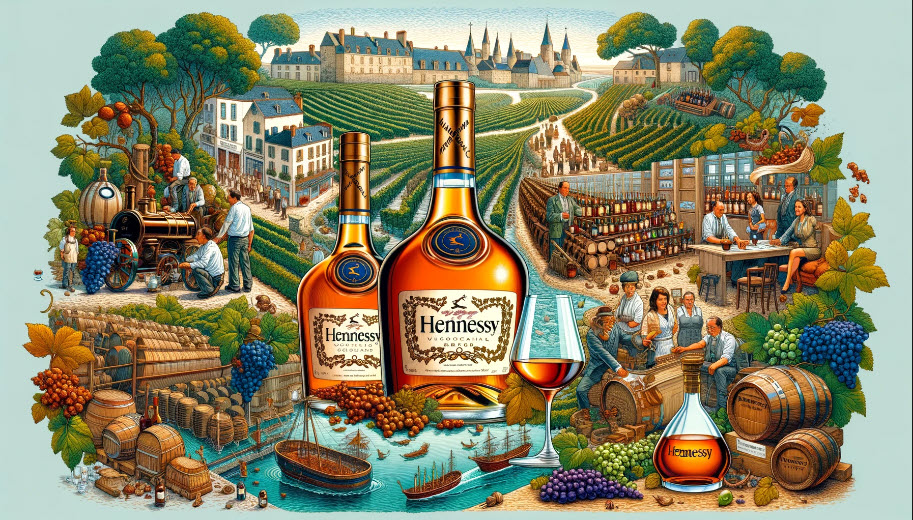
When discussing cognac, the Hennessy price often comes into the conversation, serving as a benchmark for quality and craftsmanship within the brandy category. Brandy, a diverse spirit, divides into several types, each featuring unique characteristics governed by local traditions, regulations, and terroir. Terroir represents a unique combination of natural factors that contribute to distinct characteristics in agricultural products.
Among these types, cognac stands out for its renowned quality and heritage. Cognac is a town in the Charente department of southwestern France. This region enjoys global recognition for producing a prestigious, specific type of brandy. That must stick to strict production guidelines to bear the name cognac, a type of grape brandy.
Cognac VS. Hennessy
Without a doubt, around the world, when someone hears the term “cognac”, the brand that most commonly comes to mind is Hennessy. That’s very impressive when names like Rémy Martin, Martell, and Courvoisier are options to choose from.
Not only… but also, Hennessy is one of the most famous Cognac houses known for a wide range of products that vary in age and complexity, from the more affordable Hennessy V.S. This expression is perfect for beginner’s and is versatile in crafting cocktails.
To the more exclusive and aged offerings like Hennessy Paradis. These expressions cater to connoisseurs who savor the different aging’s aromas and flavors. Who truly appreciate the craftmanship of the expression.
Hennessy’s History
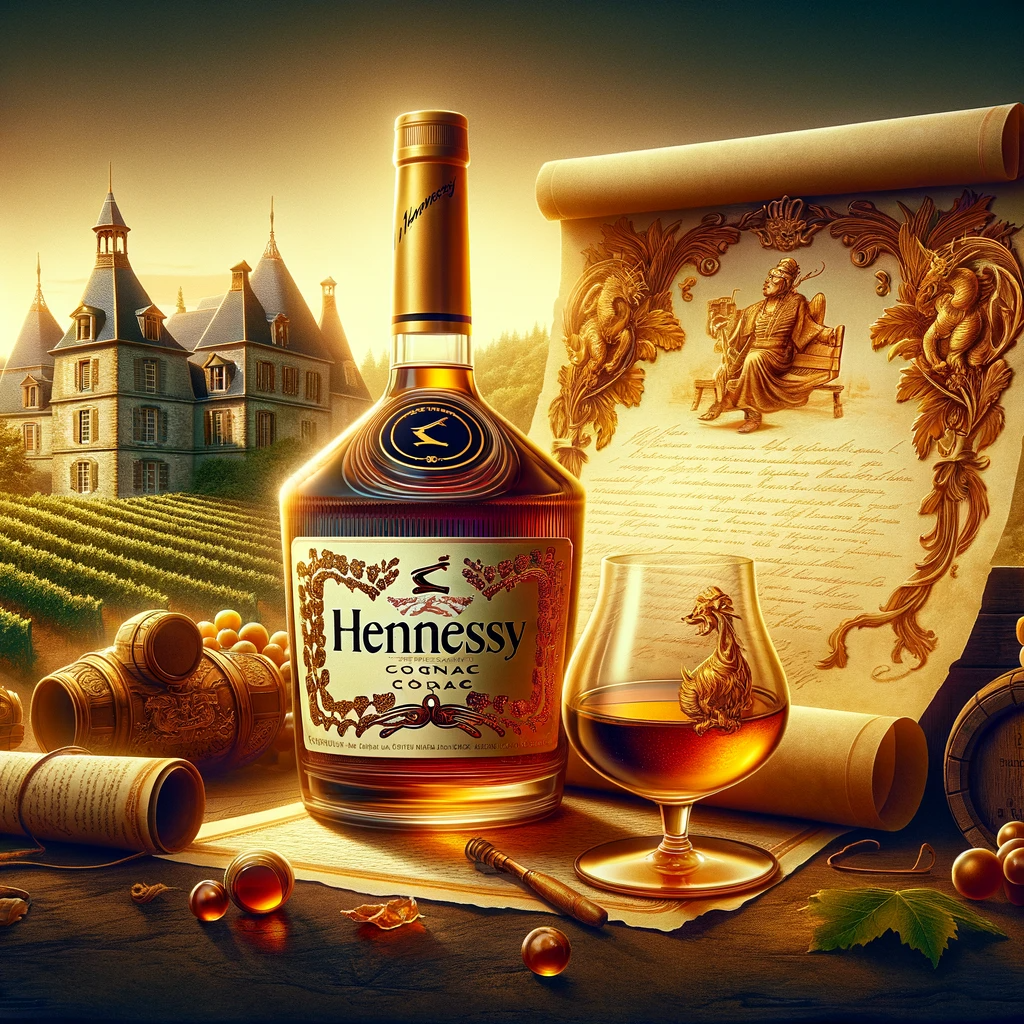
Hennessy has a rich history that dates back to the 18th century. Here’s just an overview of the key events in Hennessy’s history:
Founding by Richard Hennessy (1765):
The company was founded by an Irish officer serving in the army of King Louis XV of France. The officer’s name is Richard Hennessy. Recognizing the potential of the region’s eaux-de-vie, he founded the company in Cognac, France, initially as a trading firm.
Expansion under James Hennessy (1794):
After Richard Hennessy’s death, his son James Hennessy took over the business. He expanded it significantly, turning the small trading firm into a flourishing cognac house. The name was then anglicized to “Jas Hennessy & Co.”
International Recognition (19th Century):
Under successive generations of the Hennessy family, the brand gained international recognition. It established its presence in foreign markets by being one of the first spirits sold in bottles instead of barrels.
Innovation in Cognac Production:
Hennessy was instrumental in developing some of the key standards in cognac production. For example, Maurice Hennessy, a fourth-generation family member, is credited with creating the cognac classification system (Hennessy VS, Hennessy VSOP, Hennessy XO) in 1865.
Global Expansion (Late 19th – Early 20th Century):
Hennessy continued to grow internationally, particularly in the United States and Asia. The brand survived the challenges of phylloxera, two World Wars, and the Great Depression, maintaining its reputation and quality.
Merger with Moët et Chandon (1971):
Hennessy merged with Moët et Chandon, a leading champagne producer. This merger marked the creation of a significant luxury group in the wine and spirits industry.
LVMH Formation (1987):
Hennessy became part of LVMH (Louis Vuitton Moët Hennessy) when Moët-Hennessy merged with Louis Vuitton. This merger brought Hennessy into a conglomerate that included several high-profile luxury brands.
Continued Growth and Innovation:
Throughout the late 20th and early 21st centuries, Hennessy continued to innovate and grow. It has embraced new marketing strategies, artist collaborations, and product innovations, solidifying its position as a leader in the cognac market.
Rules of Govern
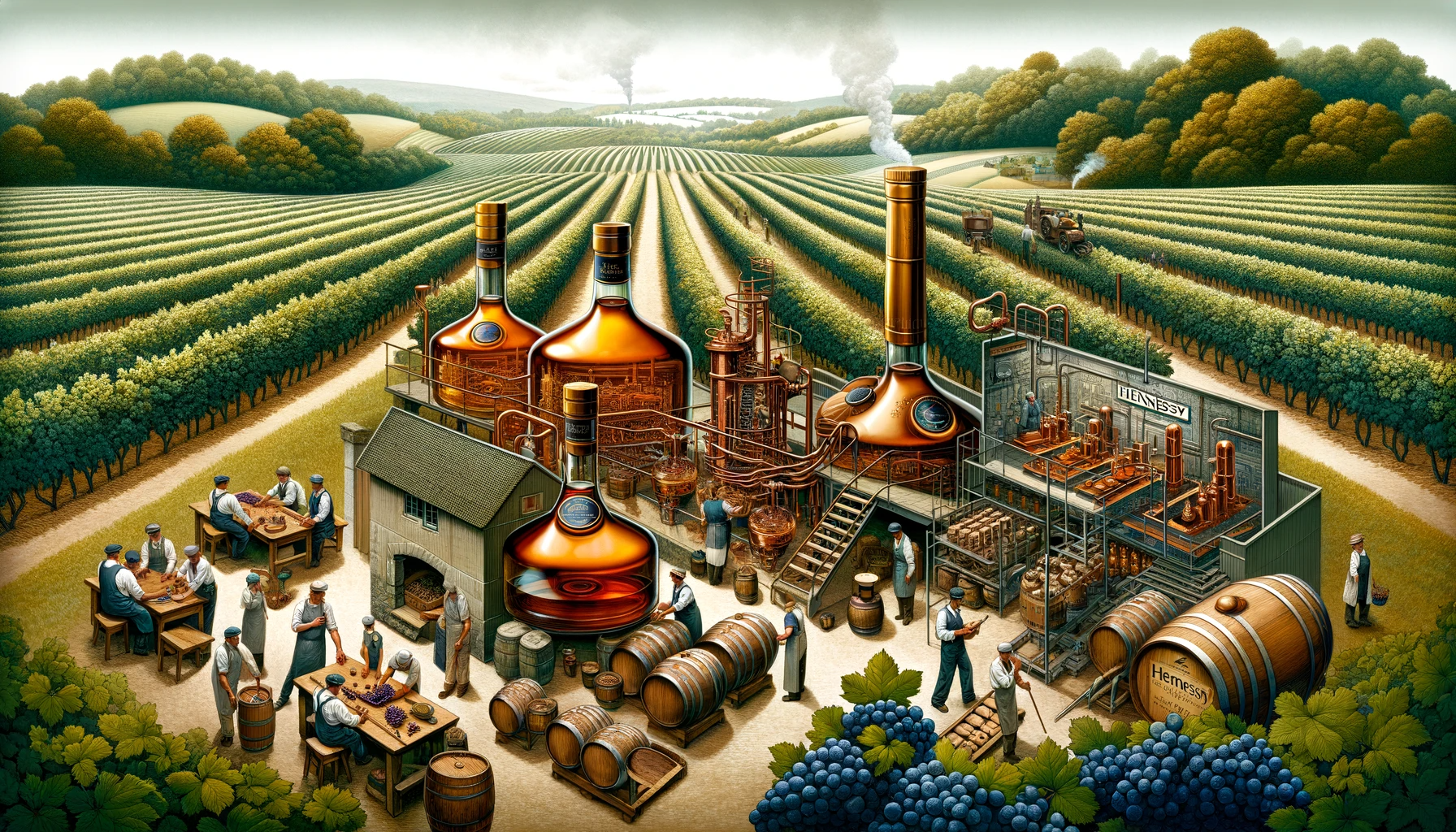
I will share with you the production rules essential for Cognac production because understanding these rules makes the explanation of the production process more meaningful.
And discussing the production process after the rules allows for a deeper appreciation of the craftsmanship and skill involved in creating the product.
Waters of Life
But first, let’s talk about “eaux-de-vie” It’s French and means “waters of life”. In the context of Cognac, it’s referring to the distilled grape spirits that have been aged in oak barrels.
Now each eaux-de-vie has its own unique flavor profile. The flavor profile is influence by factors such as type of grapes used, the terroir where the grapes were grown, the distillation process, and the aging conditions.
When you refer to “Cognac,” you’re talking about the spirit type and the region it comes from. While “Hennessy” refers specifically to the brand and its unique expressions of cognac.
Strict rules, defined by French appellation d’origine contrôlée (AOC) regulations, govern the production of Cognac to ensure its quality and authenticity. These rules encompass the following key aspects.
Geographic Origin:
The Cognac region of France, encompassing parts of the Charente and Charente-Maritime departments, must produce Cognac. This region divides into six sub-regions or ‘crus’: Grande Champagne, Petite Champagne, Borderies, Fins Bois, Bons Bois, and Bois à Terroirs.
Grape Varieties:
The primary grape used for Cognac production is Ugni Blanc (known in Italy as Trebbiano). Other permitted grape varieties include Colombard and Folle Blanche.
Wine Production:
The grapes are fermented into wine, which is relatively low in alcohol (about 7-10% ABV) and high in acidity. This wine is unaged and usually not intended for drinking.
Distillation:
“Producers must distill the wine twice in traditional copper pot stills during the strictly regulated distillation season, which runs from October 1st to March 31st following the harvest.
Aging:
The clear spirit, called eau-de-vie, must undergo aging in oak barrels for a minimum of two years. Over time, it develops its characteristic flavors and color.
Blending:
Cognac is typically a blend of different eaux-de-vie, varying in age and origin. A master blender or ‘maître de chai’ performs the crucial art of blending. The final product must meet the AOC standards for Cognac.
Categorization:
Cognacs are categorized based on the age of the youngest eau-de-vie in the blend. Common categories include Hennessy VS (Very Special, aged at least 2 years), Hennessy VSOP (Very Superior Old Pale, aged at least 4 years), and Hennessy XO (Extra Old, aged at least 10 years as of April 2018, previously 6 years).
ABV Level:
The final product must be bottled at a minimum of 40% alcohol by volume (ABV).
No Additives:
Producers can add a small amount of caramel coloring, but no other additives are allowed. These rules ensure that Cognac retains its traditional production methods and high quality, distinguishing it from other brandies around the world.
Production Process
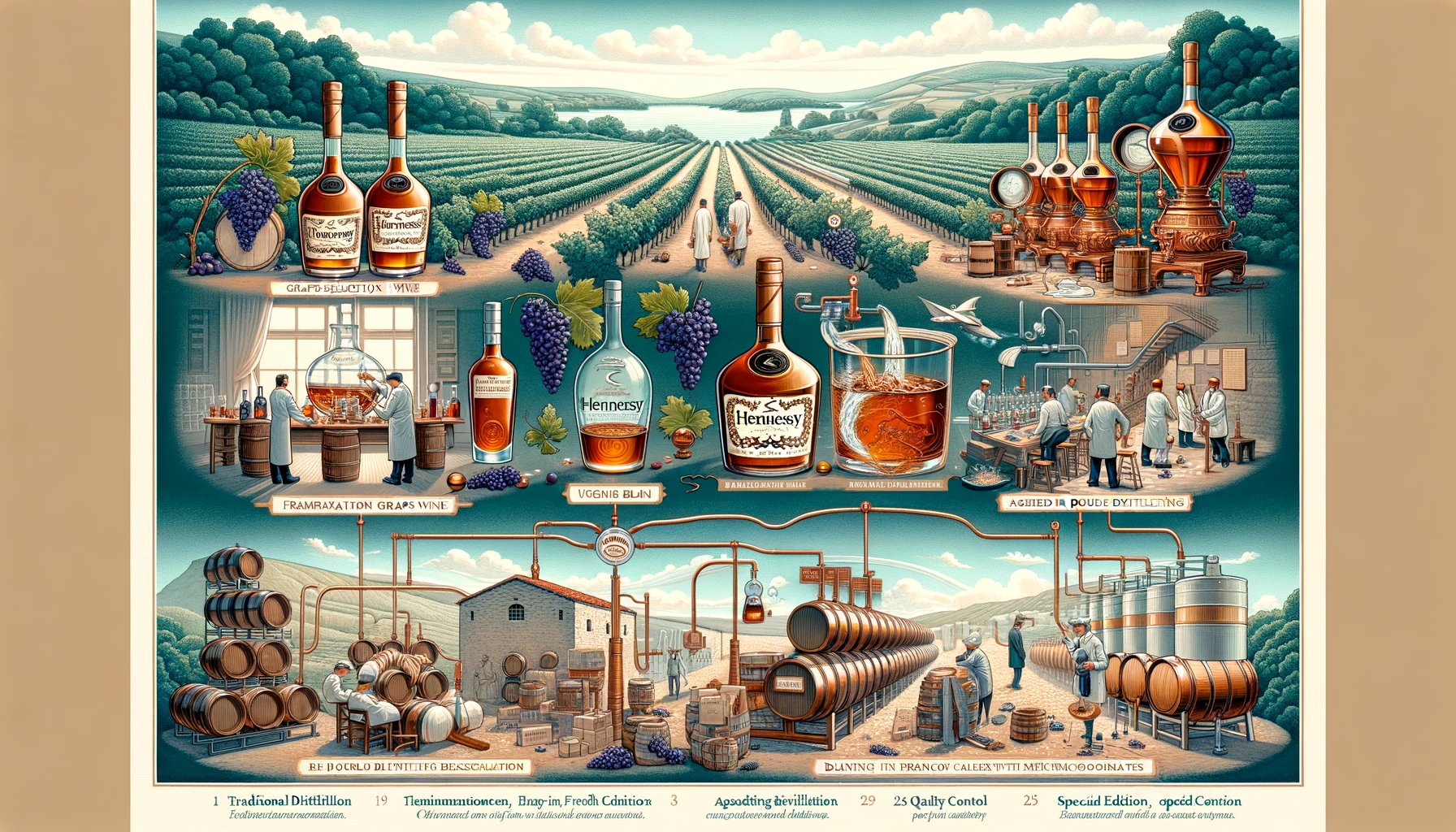
Now let’ s look at the brand Hennessy. Hennessy’s production process is a meticulous and time-honored procedure that aligns with the traditional methods of Cognac production.
Here’s a walkthrough of the key stages in Hennessy’s production process:
Grape Selection and Harvesting:
Hennessy primarily uses Ugni Blanc grapes, known for their high acidity and low alcohol content, which are ideal for Cognac production.
Harvesters gather the grapes from the Cognac region, particularly from crus like Grande Champagne, Petite Champagne, and others. Each with its unique soil and climate conditions that contribute to the flavor profiles of the cognac produced there.
Fermentation:
After harvesting, the grapes are pressed, and the juice is fermented into wine.
This fermentation process is natural, with no sugars or sulfites added, resulting in a dry, acidic wine with relatively low alcohol content.
Distillation:
Hennessy uses traditional copper pot stills for distillation.
The wine undergoes double distillation, typically between October and March. The first distillation produces the “brouillis,” and the second distillation, the “bonne chauffe,” results in a clear, high-proof spirit called eau-de-vie.
Aging:
Then, the eau-de-vie ages in French oak barrels. Hennessy varies the length of its aging process depending on the expression being producedThe spirit interacts with the oak, developing complexity, character, and its distinctive amber color.
The cellars where the barrels are stored have specific microclimates, influencing the aging process.
Blending:
One of the most crucial steps in Hennessy’s process is blending. The brand’s master blender combines various aged eaux-de-vie to achieve a consistent and desired flavor profile for each product.
This blending process is an art, requiring extensive knowledge, experience, and a refined palate.
Quality Control and Bottling:
After blending, the cognac undergoes quality control to ensure it meets Hennessy’s standards.
Finally, the cognac is bottled, labeled, and prepared for distribution.
Special Editions and Experimentation:
In addition to their standard range, Hennessy also produces special editions and experimental blends, which might involve unique aging or blending processes.
The entire process, from grape selection to bottling, reflects Hennessy’s commitment to quality, tradition, and craftsmanship, contributing to its status as one of the most prestigious cognac brands in the world.
Hennessy’s production facilities and cellars are located in the Cognac region, where the natural environment, including the climate and the soil, plays a crucial role in giving Cognac its unique qualities. Among the qualities that they are known for, consistency, quality, and craftsmanship have to be included.
Factors that influence the Hennessy price
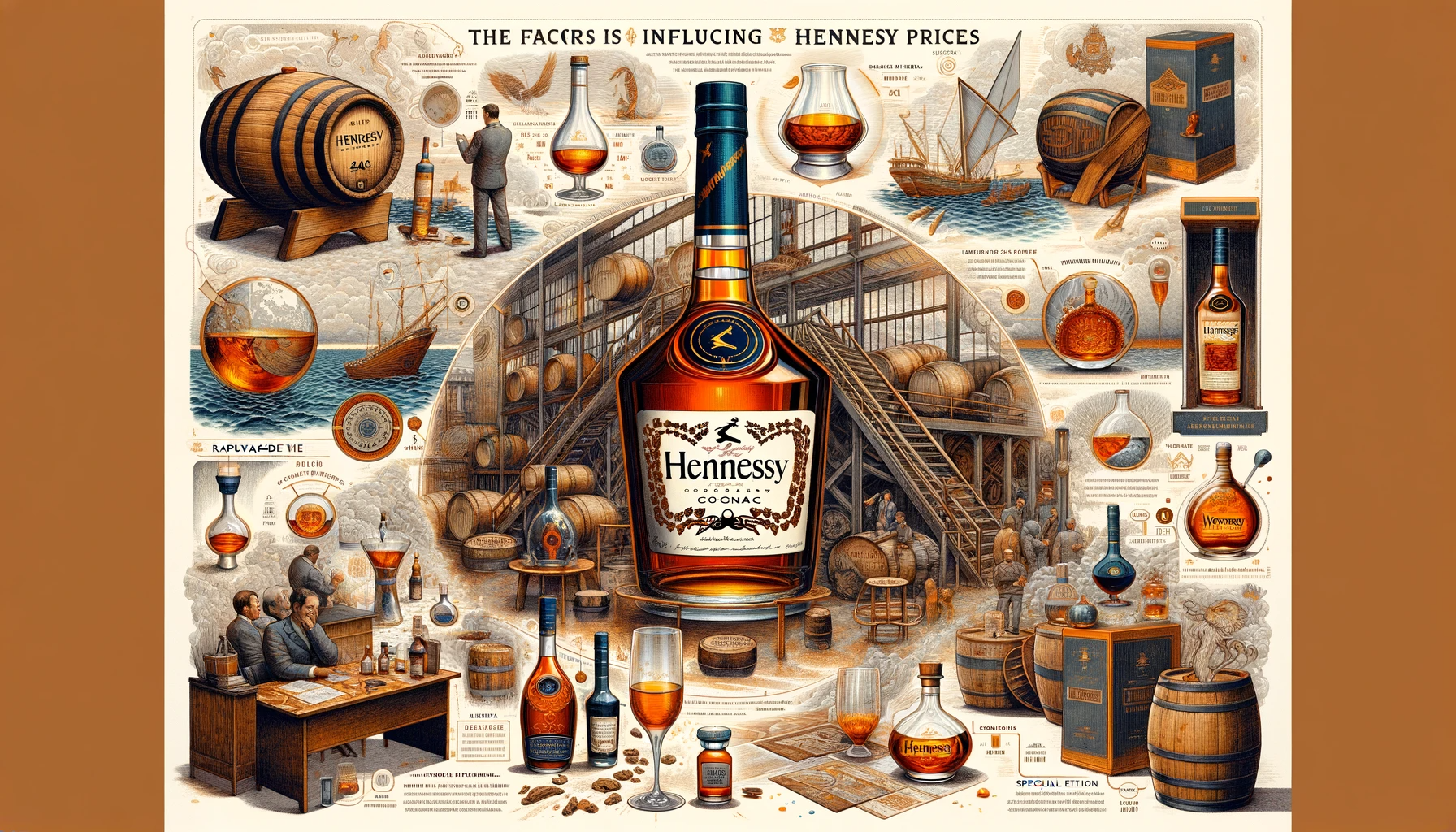
When it comes to Hennessy prices, there are several factors at play. The quality and age of the eaux-de-vie used in the blend, the rarity of the bottling, and the exclusivity of the packaging all contribute to the final price tag. Let’s explore these factors in more detail.
Firstly, the quality and age of the eaux-de-vie play a significant role in determining the price of Hennessy cognacs. Older eaux-de-vie are often more expensive due to the extended aging process, which allows for more complex flavors to develop.
Additionally, the quality of the grapes used and the craftsmanship involved in the distillation process can also impact the price.
Secondly, the rarity of the bottling can drive up the Hennessy price. Limited editions and special releases are often highly sought after by collectors and enthusiasts, making them more expensive. Equally important, these bottlings may feature unique flavor profiles or packaging, adding to their exclusivity and desirability.
Finally, the packaging and presentation of the Hennessy cognac can also influence the price. Special edition bottles, luxurious decanters, and intricate packaging designs can add to the overall cost of the product.
These premium packaging elements are often designed to reflect the sophistication and elegance of the cognac inside.
Exploring the different Hennessy expressions.
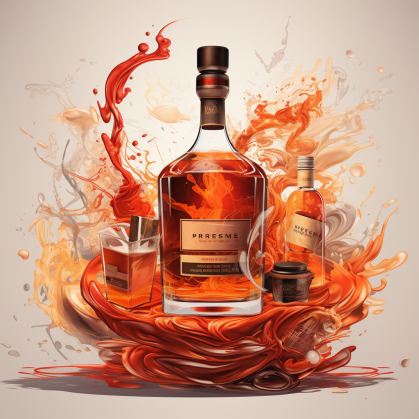
Hennessy is one of the most recognized and widely available cognac brands globally, often associated with luxury and quality. Despite its association with luxury, Hennessy remains committed to making its spirits accessible to everyone.
The brand offers a range of spirits at different price points, making it possible for anyone to enjoy the exquisite taste of Hennessy cognac. And you would think that the Hennessy price matches their association of quality and luxury.
Yes, it does, however, they have a diverse lineup that include expressions that are more approachable for those who are new to the game. Here’s to finding your perfect sip.
When it comes to understanding the Hennessy price, one of the primary factors is the aging process. Cognac is aged in oak barrels, and the length of time spent in these barrels greatly influences the final price.
The older the cognac, the more expensive it tends to be. Additionally, the rarity and scarcity of certain expressions also impact their prices.
Here is a table of the different Hennessy expressions, along with the commonly available bottle sizes and approximate price ranges. As always, the prices can vary significantly depending on your location, taxes, import duties, and the retailer.
For the most accurate and up-to-date prices, it’s always best to check with local or online liquor retailers.
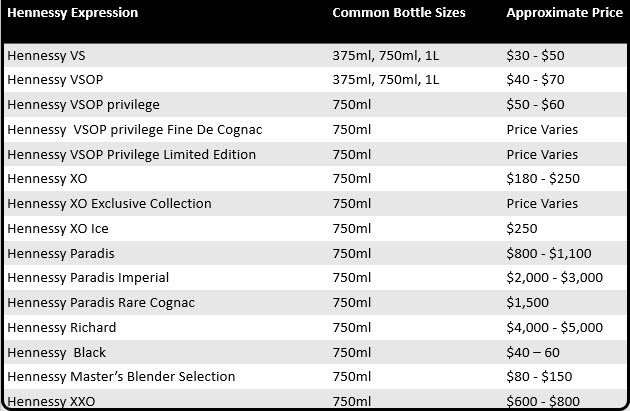
Hennessy V.S (Very Special):
This most popular expression, a young and famous cognac, blends 40 different eaux-de-vie aged up to 8 years. It typically features a robust flavor with strong notes of fruits and a hint of wood.
Flavors like apple, citrus, grapes, and some light oak notes may be detected. With its bold and lively character, Hennessy V.S is perfect for mixing in cocktails or enjoyed over ice. Its fruity and floral notes make it an approachable choice for beginners.
Hennessy V.S.O.P (Very Superior Old Pale):
For a more sophisticated sipping experience, Hennessy V.S.O.P, a mature and refined cognac, blends over 60 eaux-de-vie aged up to 15 years. This expression offers a more balanced and smoother taste compared to Hennessy V.S.
It often presents a harmony of toasted and fruit notes, with a noticeable presence of vanilla, clove, cinnamon, and candied fruit. The longer aging process lends it a more refined character.
In addition, this range offers a selection of cognacs that are aged for a minimum of four years. This extended aging process results in a richer and more complex flavor profile.
Hennessy V.SOP Privilege:
This is the flagship expression of the VSOP range, known for its exceptional balance and elegance. It features a blend of eaux-de-vie aged for at least four years, yielding a smooth and velvety texture. Expect notes of vanilla, oak, and dried fruits, with a hint of spice on the finish. Hennessy V.SOP Privilege is perfect for sipping neat or in classic cocktails like the Sidecar or Sazerac.
Hennessy VSOP Fine de Cognac:
This expression offers a slightly different flavor profile compared to the Privilege expression. It is a delicate and floral cognac, with notes of jasmine, rose petals, and fresh fruit. The lighter and more aromatic nature of Hennessy V.SOP Fine de Cognac makes it a versatile choice for both sipping and mixing in cocktails.
Hennessy VSOP Privilège Limited Edition:
This expression showcases the exceptional craftsmanship and creativity of Hennessy. These limited-edition bottlings feature unique flavor profiles and packaging designs, making them highly sought after by collectors and enthusiasts. Each limited-edition release offers a new and exciting twist on the classic Hennessy V.SOP expression.
Hennessy X.O (Extra Old):
Introduced in 1870, X.O is a rich, full-bodied cognac with a complex blend of over 100 eaux-de-vie, aged a minimum of 10 years. A complex and deep flavor profile characterizes the X.O.
It typically includes rich, robust flavors like dark chocolate, black pepper, sandalwood, and a variety of spices. The palate may also detect deep fruity flavors and a hint of leather, indicative of its long aging process. Hennessy XO is best enjoyed neat or with a splash of water to fully appreciate its intricate flavors.
The Hennessy XO offers a range of Cognacs. Craftsmen age these expressions for a minimum of ten years, representing the pinnacle of craftsmanship and attracting connoisseurs from around the world.
Hennessy XO Exclusive Collection:
Showcasing the expertise and creativity of Hennessy’s master blenders. These limited-edition releases offer unique flavor profiles and packaging designs, making them highly coveted by collectors and enthusiasts.
Each XO Exclusive Collection release is a true work of art, representing the peak of luxurious and indulgent perfection.
Hennessy XO Ice:
This expression is specifically crafted to be enjoyed over ice. Designed to reveal new and exciting flavors as the ice gradually melts, creating a refreshing and dynamic drinking experience.
Hennessy XO Ice, featuring a blend of eaux-de-vie aged for at least ten years, results in a smooth and mellow cognac, perfect for sipping on a warm summer day.
Hennessy Paradis:
A rare cognac made from a blend of over 100 very old “eaux-de-vie” from Cognac’s finest growing regions. Paradis is known for its delicate, velvety texture and nuanced flavor profile. It often presents flavors of dried rose petals, honey, truffle, and sweet spices.
Moreover, it is a harmonious and sophisticated taste, representing the peak of elegance.Hennessy Paradis, best enjoyed neat, allows the intricate flavors to fully unfold
Hennessy Paradis Imperial:
Crafted from a selection of eaux-de-vie aged between 30 and 130 years, this expression is known for its precision and elegance. It often showcases floral notes, refined oak flavors, and hints of smoke and spice.
The flavor is complex yet delicate, with a light and elegant finish. Hennessy Paradis Imperial is a true masterpiece that showcases the artistry and expertise of the master blenders at Hennessy.
Hennessy Paradis Rare Cognac:
Craftsmen use eaux-de-vie aged for a minimum of fifty years to create a cognac that is exceptionally rare and precious. Hennessy Paradis Rare Cognac offers an unparalleled drinking experience, with a depth of flavors and aromas that is truly extraordinary.
Hennessy Richard:
This is one of the most luxurious and exclusive expressions, comprising eaux-de-vie aged between 40 and 200 years. It’s one of the most exclusive expressions, offering a rich, full-bodied flavor with layers of complexity. You might detect flavors like nutmeg, leather, flowers, and fruits, with a particularly long and satisfying finish.
Hennessy Black:
A more contemporary expression, it’s a smooth cognac with lighter and fresher accents. Aimed at a more modern palate, you may detect floral notes, citrus, honey, and grapes. It’s designed for mixing, so the profile is more accessible and versatile.
Hennessy Master Blender’s Selection:
A unique blend that is released in limited quantities, making each edition a collector’s item. Each edition has a unique profile, but they generally offer a rich, textured flavor with a focus on a particular aspect of the cognac’s character, like floral, fruity, or spicy notes.
Hennessy XXO:
A relatively new expression, it ages for a longer period than the X.O, offering a more intense and complex flavor profile. It often has a complex blend of sweet, spicy, and deep fruity notes, with an exceptionally long and nuanced finish.
Hennessy cocktail recipes for every budget
Cocktails offer a versatile and enjoyable way to experience Hennessy, regardless of your budget. CLICK HERE to see some cocktail recipes that cater to different price ranges, allowing you to savor the flavors of Hennessy in a refreshing and creative way.
Grey Goose Vodka Price, Unveiling the Mystery.
It’s not Swedish, it’s not Russian. It’s French, French-made vodka, known for its smooth taste and elegant packaging. Making it a popular choice for those who enjoy a high-end cocktail. However, with its reputation for quality comes a higher price tag than some other vodka brands. In this article, we’ll explore Grey Goose vodka price and what you can expect to pay for a bottle of this popular spirit.
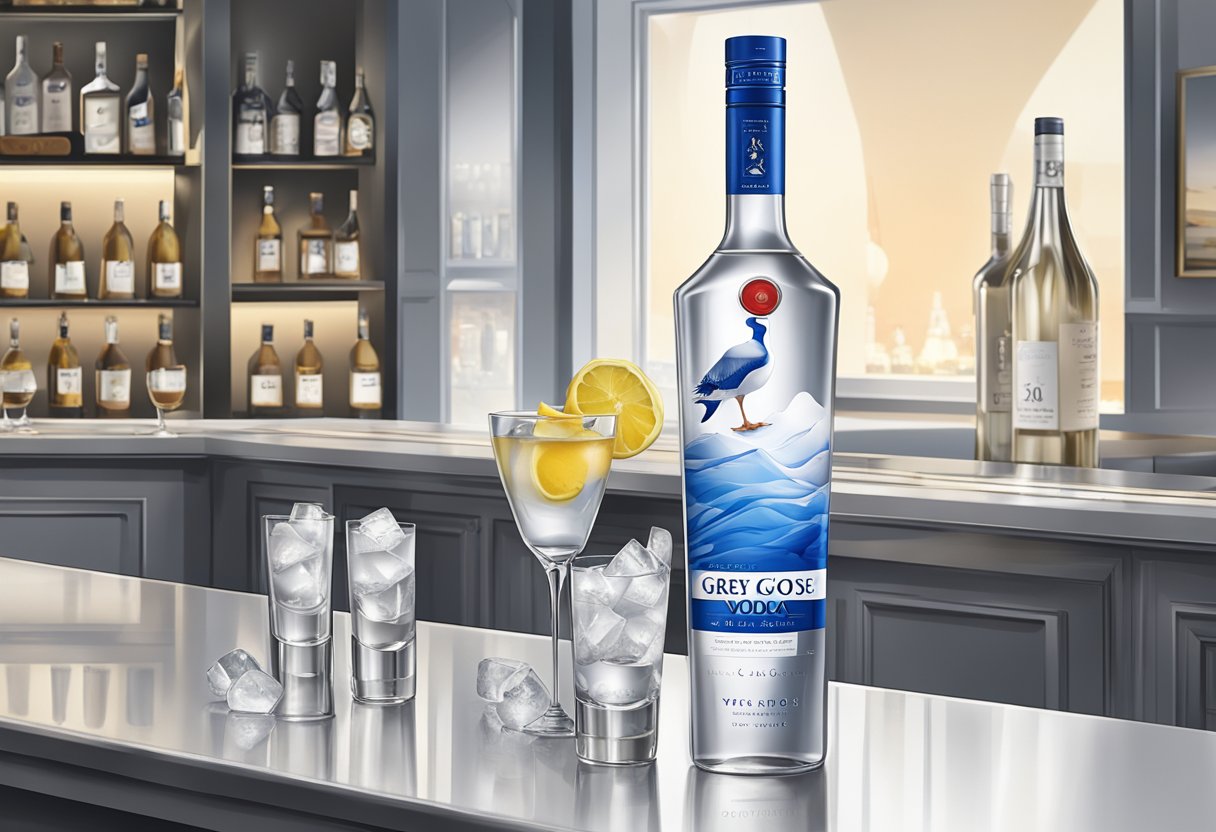
French ingredients and distillation in France elevate Grey Goose vodka’s price point, distinguishing it from other vodkas on the market. The cost of a bottle of Grey Goose can vary depending on the size of the bottle and the retailer you purchase it from. According to Drizly, a 750mL bottle of Grey Goose typically costs around $30. While a 1.75L bottle can cost upwards of $60.
If you’re looking to purchase Grey Goose vodka, it’s important to do your research and compare prices from different retailers to ensure you’re getting the best deal. Additionally, keep in mind that the price of Grey Goose may fluctuate depending on where you live, as taxes and shipping costs can impact the final cost of the product. With that said, let’s dive deeper into the Grey Goose vodka price and what you can expect to pay for this premium spirit.
History of Grey Goose
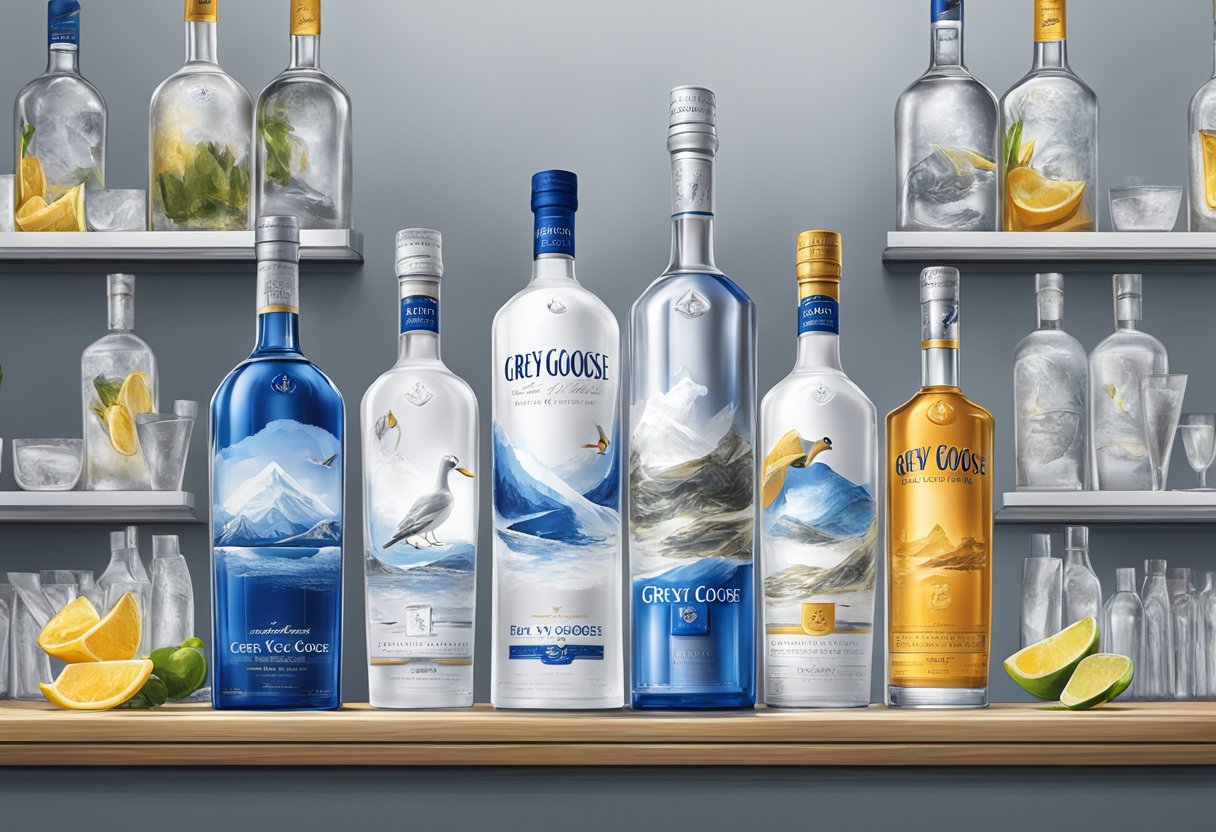
Created in the heart of France’s Cognac region, Grey Goose emerged as a premium vodka brand, indicating a spirit of quality nature. In 1997, François Thibault, a Cellar Master from a region renowned for names like Remy Martin and Hennessey, joined forces to establish this brand.
And Sidney Frank is a businessman who came up with the name, marketed and sold the stuff. François used his expertise and craftsmanship to create a recipe that, a year later, the Beverage Testing Institute declared the ‘World’s Best Tasting Vodka’, enhancing the brand’s reputation for its smooth taste and luxury image.
The Selection of Premium Ingredients from Picardy
Francois Thibault used the best wheat in France, from the Picardy region. The wheat grown there is as close to perfect as wheat can get. The very best wheat and water that is pure with a natural slight sweetness to it. Francois aimed to preserve the wheat’s flavor and decided to distill the vodka only once, employing a 5-step process. It’s a unique distillation process that involves using a copper pot still. This gives Grey Goose its smooth and velvety texture.
Establishing a Premium Position in the US Market
Introduced to the US market in 1997, Grey Goose quickly gained popularity among vodka enthusiasts. Although, some claimed that it was just standard vodka sold with a higher price tag. In fact, twice the price of premium vodka sold in the US market.
But you need to appreciate the fact that this vodka is made in the heart of France’s Cognac region. Francois had left his distinguished position as cellar master for the Mounier Distillery making fine cognacs and decided to try his hand in crafting vodka.
From Cognac Expertise to a Global Vodka Phenomenon
The Cognac industry thought Francois was crazy. But that is how good Frank Sydney is. Just as skillfully as he was in persuading college students into making Jägermeister their drink of choice, he persuaded Francois to roll his skills over into the world of producing vodka.
It was marketed as a premium brand and used water from the Gensac Springs in the Cognac region of France to create the vodka. Regardless of all the criticism, Grey Goose continued to grow in popularity and in 2004, Bacardi bought Grey Goose for $2.2 billion.
Overall, Grey Goose has a rich history that is rooted in the pursuit of creating the world’s best-tasting vodka. Its use of high-quality ingredients and unique distillation process has helped to establish it as a premium brand in the vodka market.
Flavor Profile
I can remember that vodka was the thing to drink because it was odorless and flavorless. So, if you could handle your liquor, others would not be able to tell if you had been drinking because it was odorless, and you didn’t need a chaser because it is also flavorless.
But that’s not entirely true. Vodka does have an aroma subtle but it’s there. Influenced by the production process and ingredients used. Similarly, vodkas flavor is not as pronounced as rum or scotch, but it’s there.
Grey Goose Vodka is known for its distinct and refined flavor profile:
1. Aroma
- Subtle and Clean: Lower quality vodkas will have almost a harsh rubbing alcohol smell. That’s what is missing with Grey Goose. Although very subtle it’s a clean aroma.
- Hints of Sweetness: There is a slight hint of sweetness in the aroma, likely due to the wheat used in its production.
2. Taste
- Remarkably Gentle and Smooth: The signature trait of Grey Goose is its extraordinary gentleness and smoothness, making it a standout choice for neat consumption or in an on-the-rocks serving.
- Mildly Sweet with a Full-bodied Essence: The vodka’s flavor carries a subtle sweetness, complemented by a full-bodied essence, courtesy of the soft winter wheat used. This results in a taste free from the sharp harshness found in some vodkas.
- Delicate Citrus and Floral Hints: Delicate notes of citrus and a soft floral touch further enhance the flavor profile, lending intricate complexity without overshadowing the inherent smoothness.
3. Finish
- Crisp and Pure: Grey Goose finishes with a crisp, pure quality, leaving behind a refreshing aftertaste devoid of the rough or burning qualities typical of lesser spirits.
- Gentle Warmth: The vodka imparts a gentle warmth, a characteristic feature of vodka, yet it’s toned down in Grey Goose, complementing its smooth essence.
4. Texture and Mouthfeel
- Silky and Rich: Grey Goose has a silky, rich texture. It feels more substantial and creamier compared to many other vodkas.
5. Overall Character
- Grey Goose, often described as a vodka that strikes a balance between subtlety and complexity, is crafted for enjoyment on its own merits and excels in cocktails, where its smoothness and subtle character nuances enhance the overall drink experience.
The flavor profile of Grey Goose is a result of its high-quality ingredients, particularly the soft winter wheat and pure spring water, as well as its precise distillation process.
Production Process
The production process of Grey Goose vodka involves several key stages, each contributing to its unique character:
1. Selection of Ingredients
- Wheat: Grey Goose selects a single type of wheat, known as “soft winter wheat,” grown in Picardy, France, a region famed as the “breadbasket of France” for its high-quality wheat production.
- Water: For its water, Grey Goose uses a source naturally filtered through limestone from the Gensac Spring in the Cognac region, renowned for its purity and significant contribution to the vodka’s final taste.
2. Fermentation
- Using a process akin to beer brewing, the wheat ferments into a high-proof spirit by converting its starches into sugars, which yeast then ferments to produce alcohol.
3. Distillation
- Grey Goose is distilled using a continuous column distillation process. This method allows for precise control over the distillation, ensuring the removal of impurities while retaining the desirable flavors and characteristics of the wheat.
- The spirit is distilled to over 96% alcohol by volume, which is typical for vodka production.
4. Blending with Water
- After distillation, the blending of the spirit with spring water from Gensac occurs, a process meticulously managed to achieve the desired proof while maintaining the water’s purity and taste profile.
5. Quality Control
- Throughout the process, Grey Goose maintains strict quality control standards. The production involves tasting and monitoring to ensure that the final product meets their high standards of quality and taste.
6. Bottling
- The vodka is then bottled in distinctive Grey Goose bottles. The bottle design is elegant and recognizable, contributing to the brand’s premium image.
7. Distribution
- Finally, the bottles are distributed worldwide. Grey Goose has established itself as a high-end vodka brand, popular in many countries.
Grey Goose’s production process is a combination of traditional and modern techniques, with a strong emphasis on quality ingredients and meticulous craftsmanship. This results in a vodka that is smooth, with a subtle taste profile that’s both distinct and versatile, making it popular for sipping neat or as a base in a wide range of cocktails.
Grey Goose Vodka Varieties
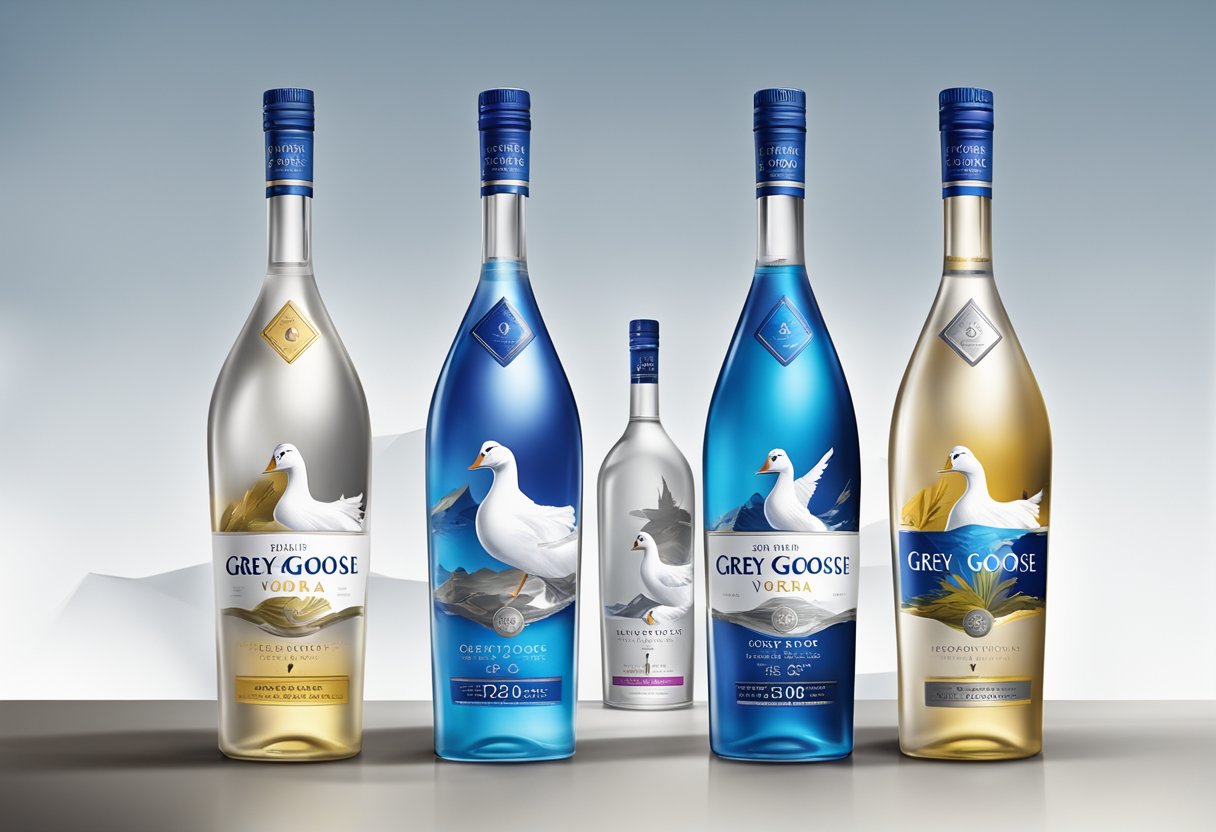
Grey Goose offers a range of varieties, including original and flavored vodkas.
Original
Grey Goose Vodka is available in a variety of sizes to provide a range of options, from personal use to larger gatherings, making Grey Goose a versatile choice for various occasions.
- Miniature Size: 50ml, often used for sampling or as part of a gift set.
- Standard Size: 750ml, which is the most common size for spirits and is widely available in most liquor stores.
- Liter Size: 1 liter, a larger option that’s popular for parties or for those who prefer to have more on hand.
- Magnum Size: At 1.5 liters, this size is larger and often used for celebrations or in settings like bars and restaurants.
- Large Formats: Grey Goose also offers large format bottles. Such as 3-liter and 4.5-liter sizes. Typically, this size is used for special events or in high-volume settings like nightclubs.
Flavored Vodkas
In addition to its original vodka, Grey Goose offers a range of flavored vodkas. These vodkas are made with Grey Goose’s original vodka as a base and infused with natural flavors. The flavors include citrus, pear, and cherry. Grey Goose flavored vodkas are perfect for creating cocktails or enjoying on their own. They are available in 750ml bottles.
Flavor Infusion (for Flavored Varieties)
For its flavored vodkas, Grey Goose infuses natural flavors derived from high-quality ingredients. This process takes place post-distillation, once the water has been blended. But before quality control to ensure the integrity and distinctiveness of each flavor.
Factors Influencing Grey Goose Vodka Price
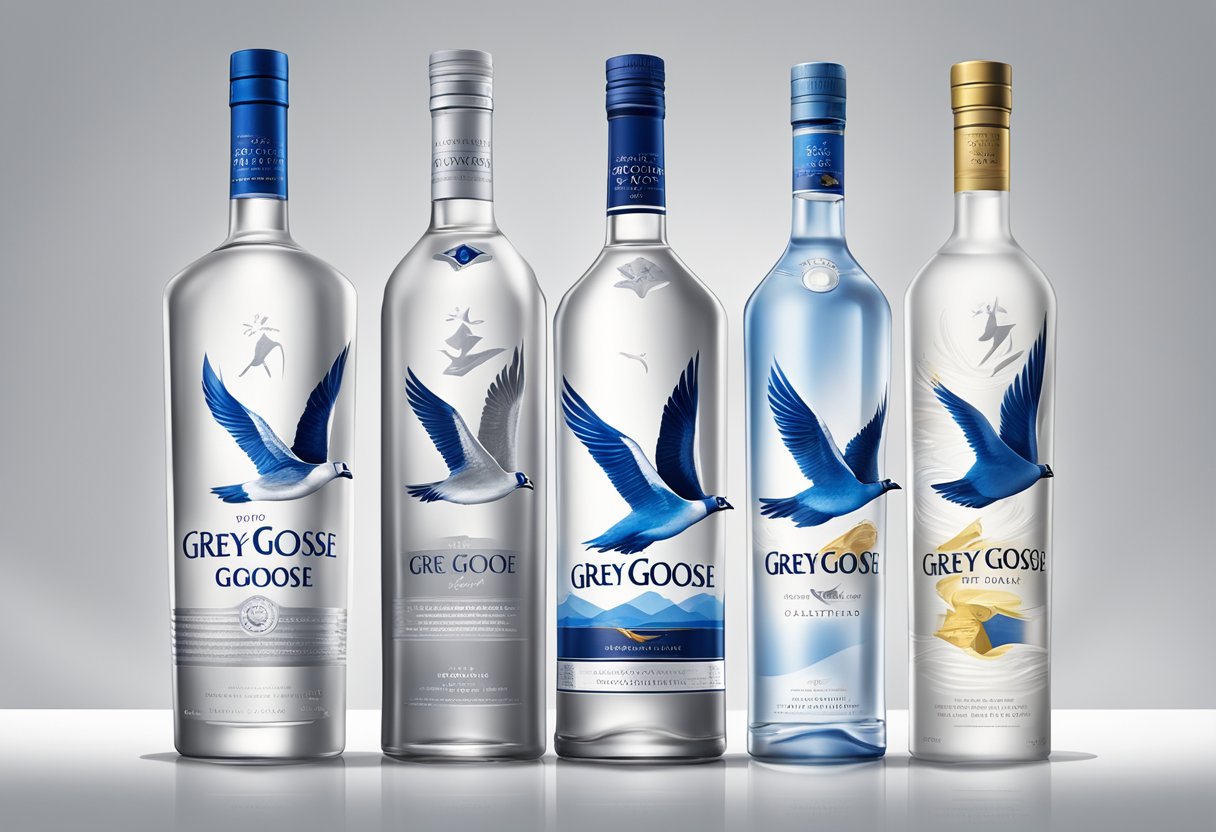
When it comes to Grey Goose vodka price, there are several factors that influence the final cost. Here are some of the main factors that affect the price of Grey Goose vodka.
Production Costs
One of the most significant factors that affects Grey Goose Vodka price. Using high-quality French wheat and distilled in a single continuous process, ensuring a consistent and high-quality product. It’s a more expensive process than the traditional pot still method of distillation used by many other vodka brands. Additionally, the cost of production increases because Grey Goose undergoes filtration through limestone.
Brand Positioning
Grey Goose is a premium vodka brand that has positioned itself as a high-end product. This brand positioning is reflected in the Grey Goose vodka price. The brand has invested heavily in marketing and advertising campaigns that promote the product as a luxury item. This has helped to create a perception of exclusivity, which has contributed to the higher Grey Goose vodka price.
Market Demand
Market demand is another factor that affects the Grey Goose vodka price. The brand’s popularity has led to an increase in demand, which has led to a higher price point. Additionally, Grey Goose has limited distribution, which has helped to create a perception of exclusivity and has contributed to the high price of the product.
Comparing Grey Goose Vodka Prices

When it comes to Grey Goose vodka price, there are a few key factors to consider. In this section, we will compare Grey Goose vodka price to other premium vodka brands.
With Other Premium Vodkas
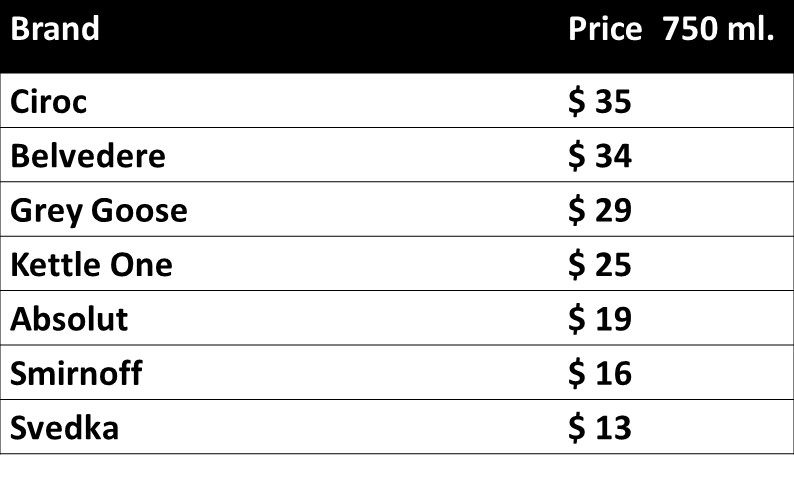
As a frequently recognized premium vodka brand, Grey Goose often carries a higher price tag compared to some other popular vodka brands. For example, a 750ml bottle of Absolut vodka typically costs around $20, while a 1.75L bottle of Smirnoff vodka is around $25. However, when comparing to other premium vodka brands like Belvedere or Cîroc, Grey Goose holds a similar price point, typically around $30.
While Grey Goose commands a higher price than some other vodka brands, its unique distillation process is noteworthy for ensuring exceptional quality and an exquisite flavor profile.
Overall, when comparing Grey Goose vodka price to other premium vodka brands, it is important to consider the quality and unique characteristics of each brand, as well as the specific store you are purchasing from.
Where to Find The Best Buy Grey Goose Vodka Price
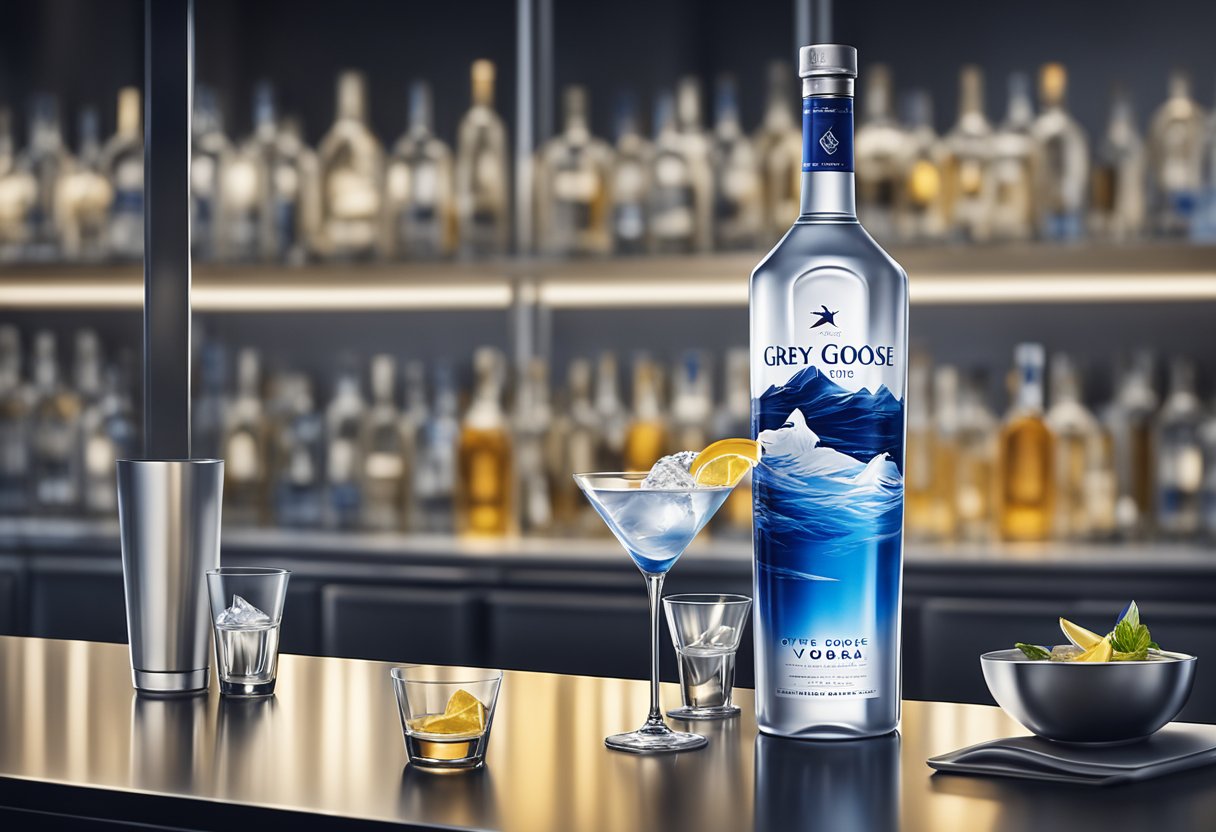
If you’re looking to buy Grey Goose vodka, you have several options available to you. You can purchase it from online retailers or local stores. In this section, we’ll go over both options to help you find the best place to buy Grey Goose.
Online Retailers
One of the easiest ways to buy Grey Goose is through online retailers. There are several online retailers that sell Grey Goose, such as Drizly and Caskers. These online retailers offer a wide range of Grey Goose products at competitive prices. Additionally, some retailers offer free shipping or delivery options. Making it even easier to get your hands on a bottle of Grey Goose.
Local Stores
If you prefer to buy your alcohol in person, you can find Grey Goose at many local stores. Most liquor stores will carry Grey Goose, as well as some grocery stores and big-box retailers. To find a store near you that sells Grey Goose, you can use the store locator on the Grey Goose website.
When shopping for Grey Goose, it’s important to compare prices to ensure that you’re getting the best deal. Prices can vary depending on where you shop, so it’s always a good idea to do your research before making a purchase.
Overall, whether you choose to buy Grey Goose online or in person, there are plenty of options available to you. With a little bit of research, you can find the best place to buy Grey Goose and enjoy this premium vodka at a great price.
Frequently Asked Questions
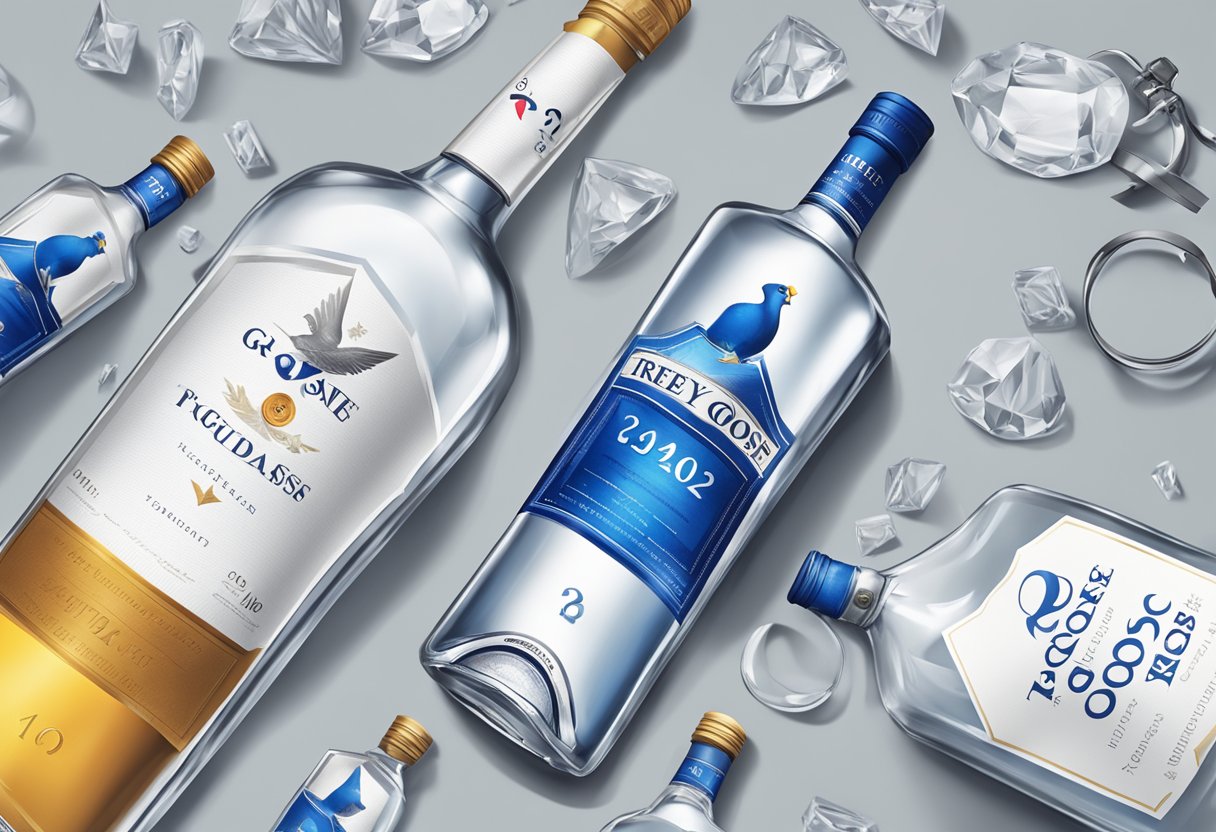
How does the cost of Grey Goose compare to Tito’s vodka?
Grey Goose vodka considered a premium vodka due to its quality. Generally, this commands a higher price than other brands like Tito’s vodka. Tito’s Vodka can cost around $17 for the standard 750 ml bottle as opposed to Grey Goose, $29 for a 750 ml. bottle.
What are the available bottle sizes for Grey Goose vodka and their corresponding prices?
Grey Goose vodka is available in various bottle sizes ranging from 50ml to 1.75L. The price of each bottle size may vary depending on the location and availability. For example, a 750ml bottle of Grey Goose vodka typically costs between $30 to $40. While a 1.75L bottle costs around $60.
Where can I find Grey Goose vodka for purchase nearby?
You can find Grey Goose vodka at most liquor stores and supermarkets. You can also purchase it online from various retailers. To find a store near you that carries Grey Goose vodka, you can visit their website and use the store locator tool. store locator
What is the alcohol content percentage in Grey Goose vodka?
The alcohol content percentage in Grey Goose vodka is 40%, which is the standard percentage for most vodkas.
Is Grey Goose considered a high-end or premium vodka?
Due to its high-quality ingredients and distillation process, Grey Goose vodka is considered a premium vodka. It is a popular choice for those who prefer a smooth and refined taste in their vodka.
- Old Grand Dad Bourbon: A Classic American Whiskey
- Bombay Sapphire: The Artful Blend of Exotic Botanicals
- Crown Royal Salted Caramel
- Belvedere Vodka Price: How Much Does It Cost?
- Glenlivet Founders Reserve: A Classic Whisky with a Modern Twist
- Best Mezcal: An All-Inclusive Guide to Top Selections
- Amazon Bar Stools: Find the Perfect Black Bar Stools with Backs
- Don Julio Tequila Price and Prestige. Sip in Style
- Home Bar Furniture: A Guide for Your Perfect Setup
- Elijah Craig Toasted Barrel: Richness of Fire-Finished Bourbon
- Maker’s Mark Cask Strength: Bold and Intense
- Home Bar Haven: Crafting Unforgettable Gatherings
- The Collins Glass: A Fascinating Journey from A London’s Coffee House to Modern Cocktail Culture
